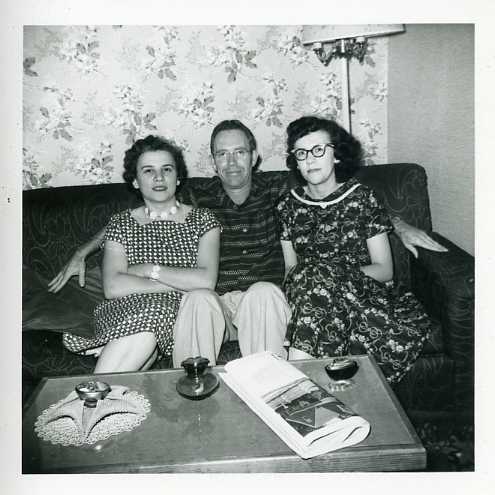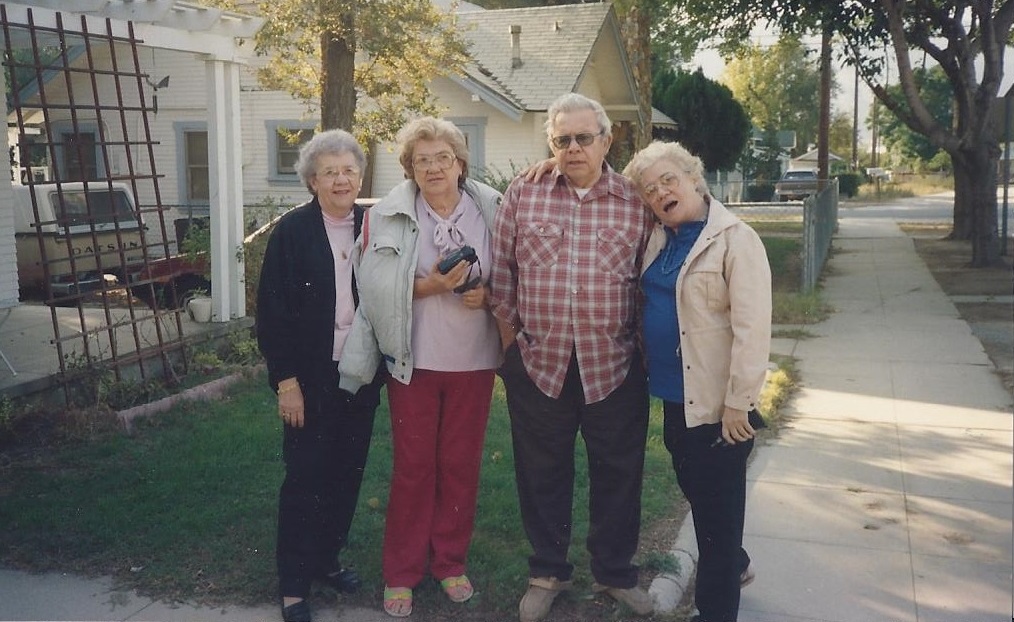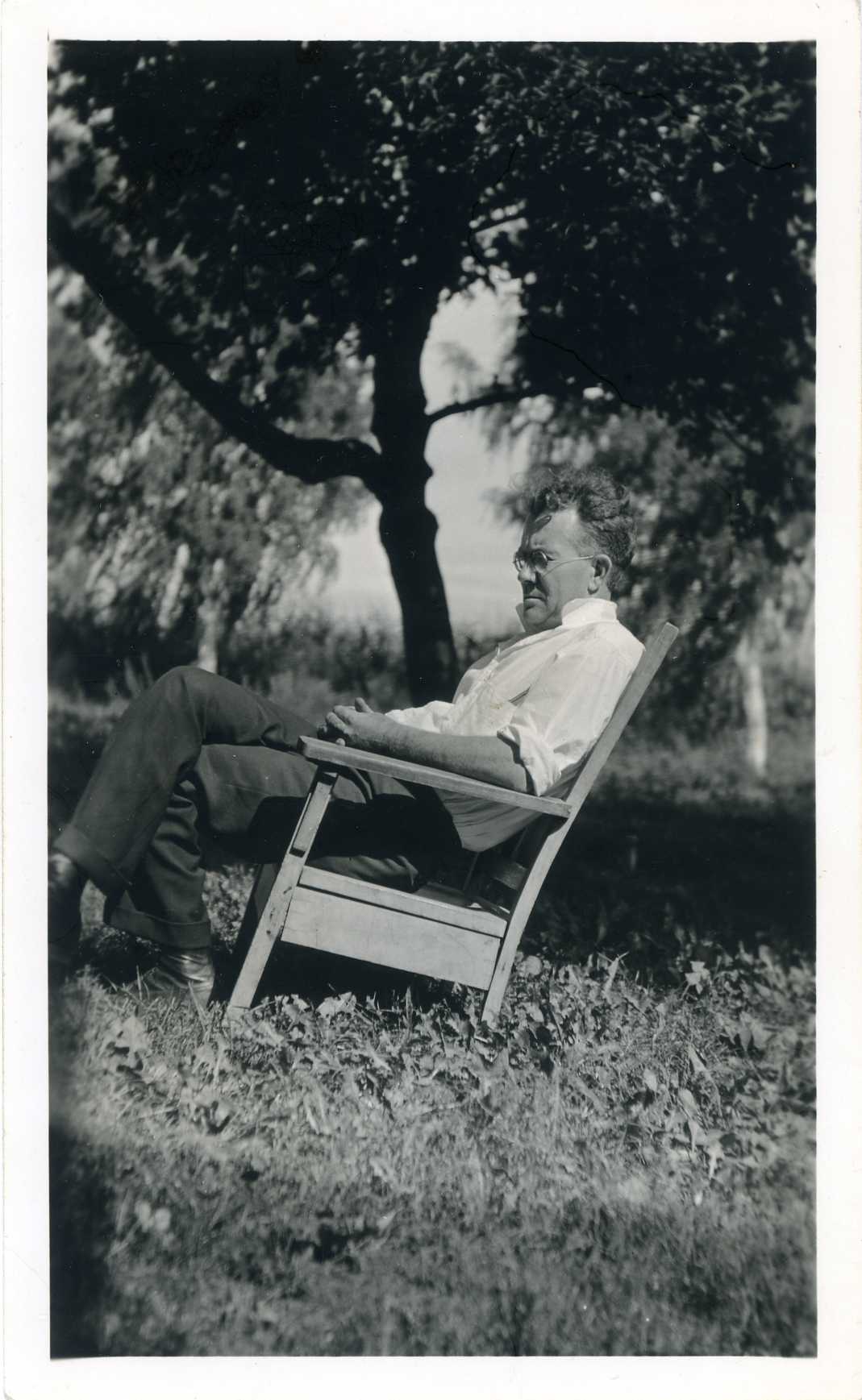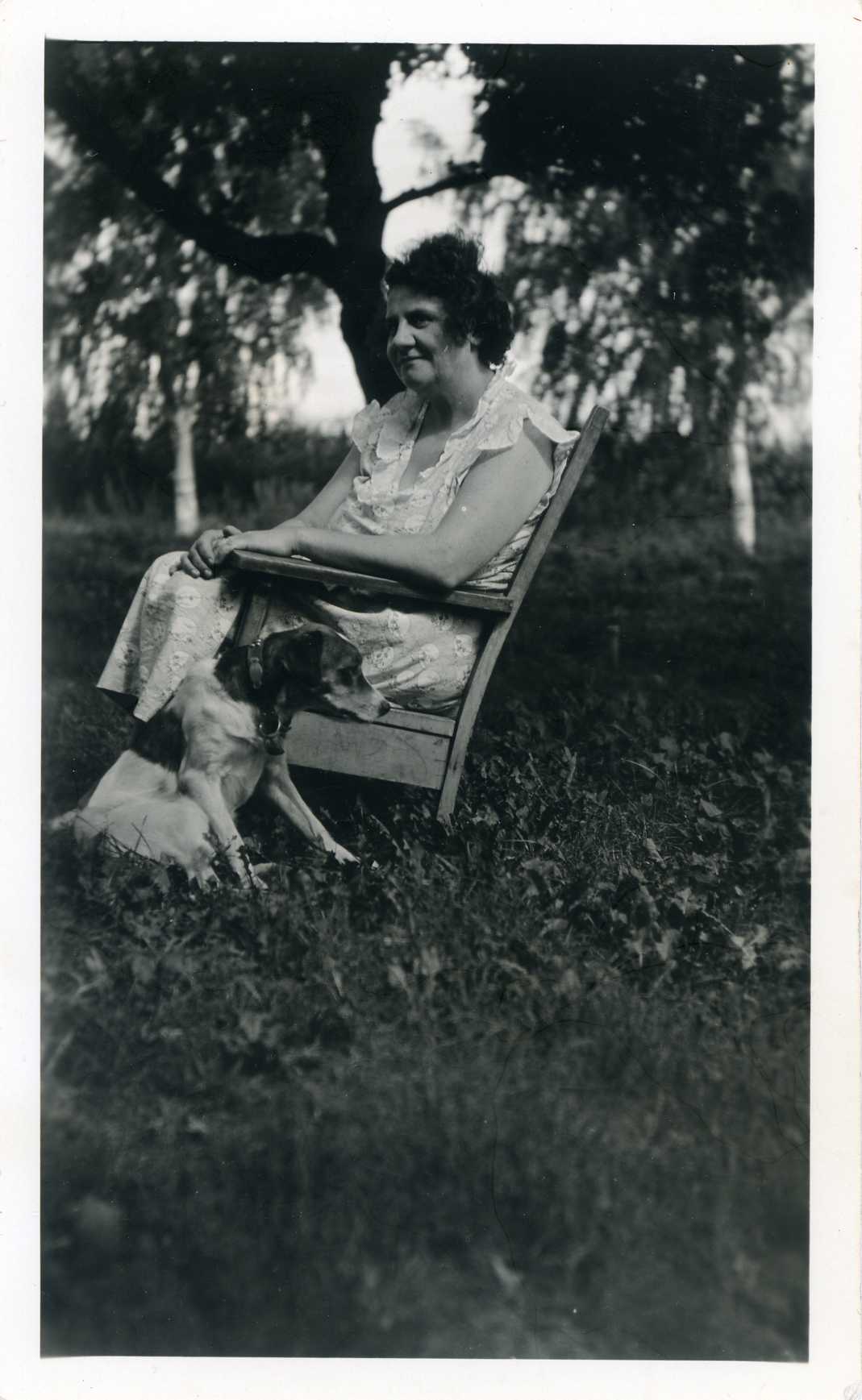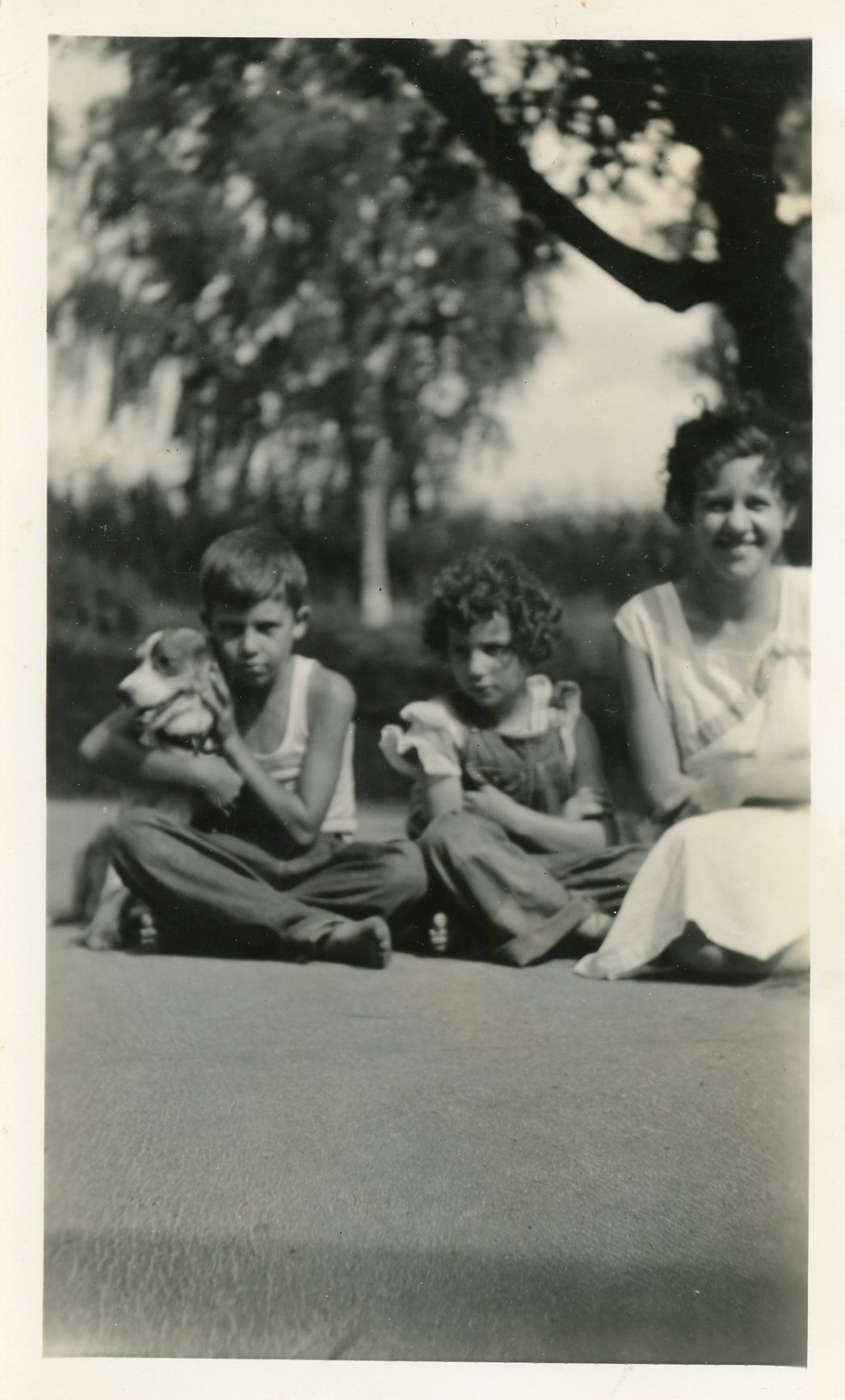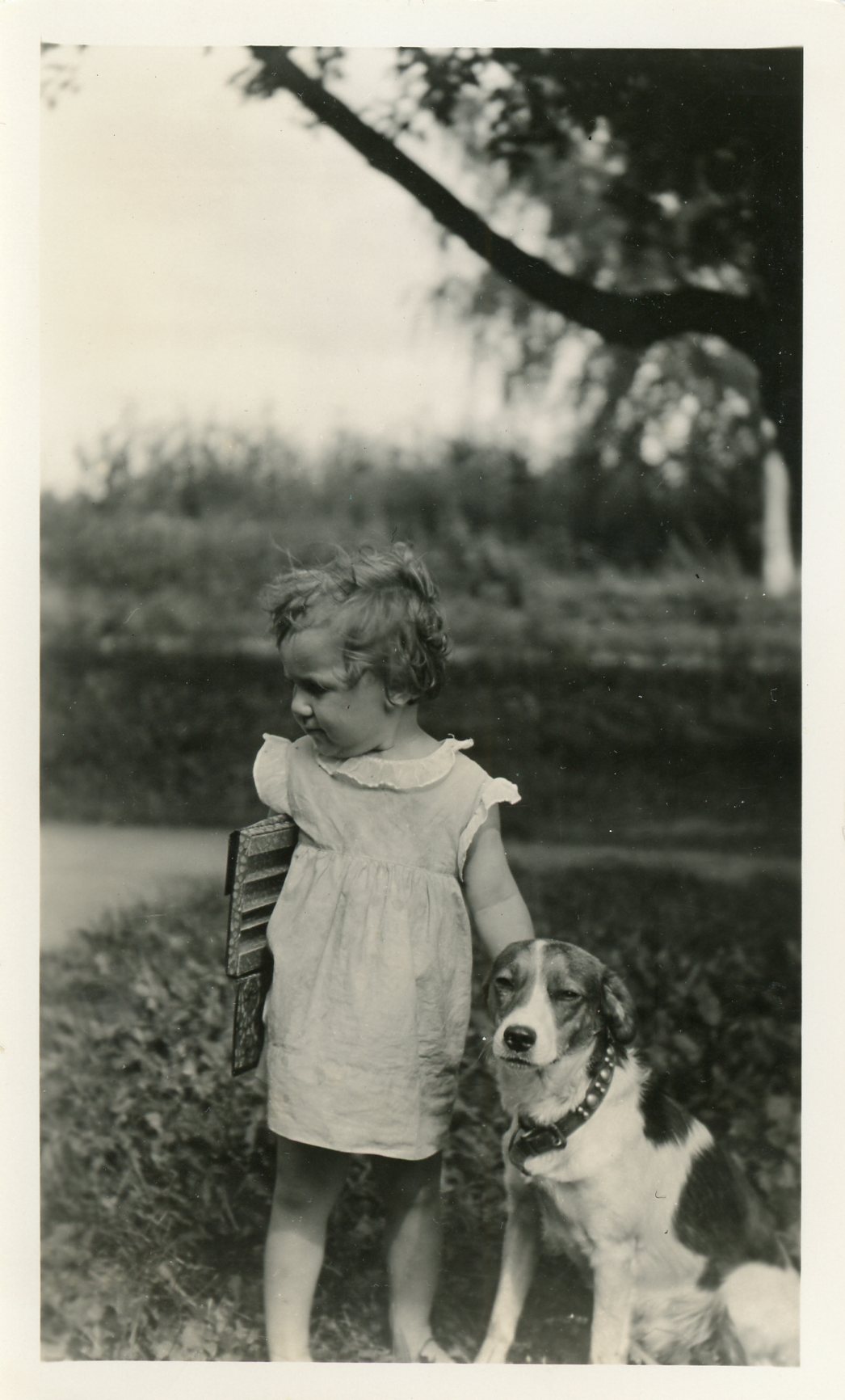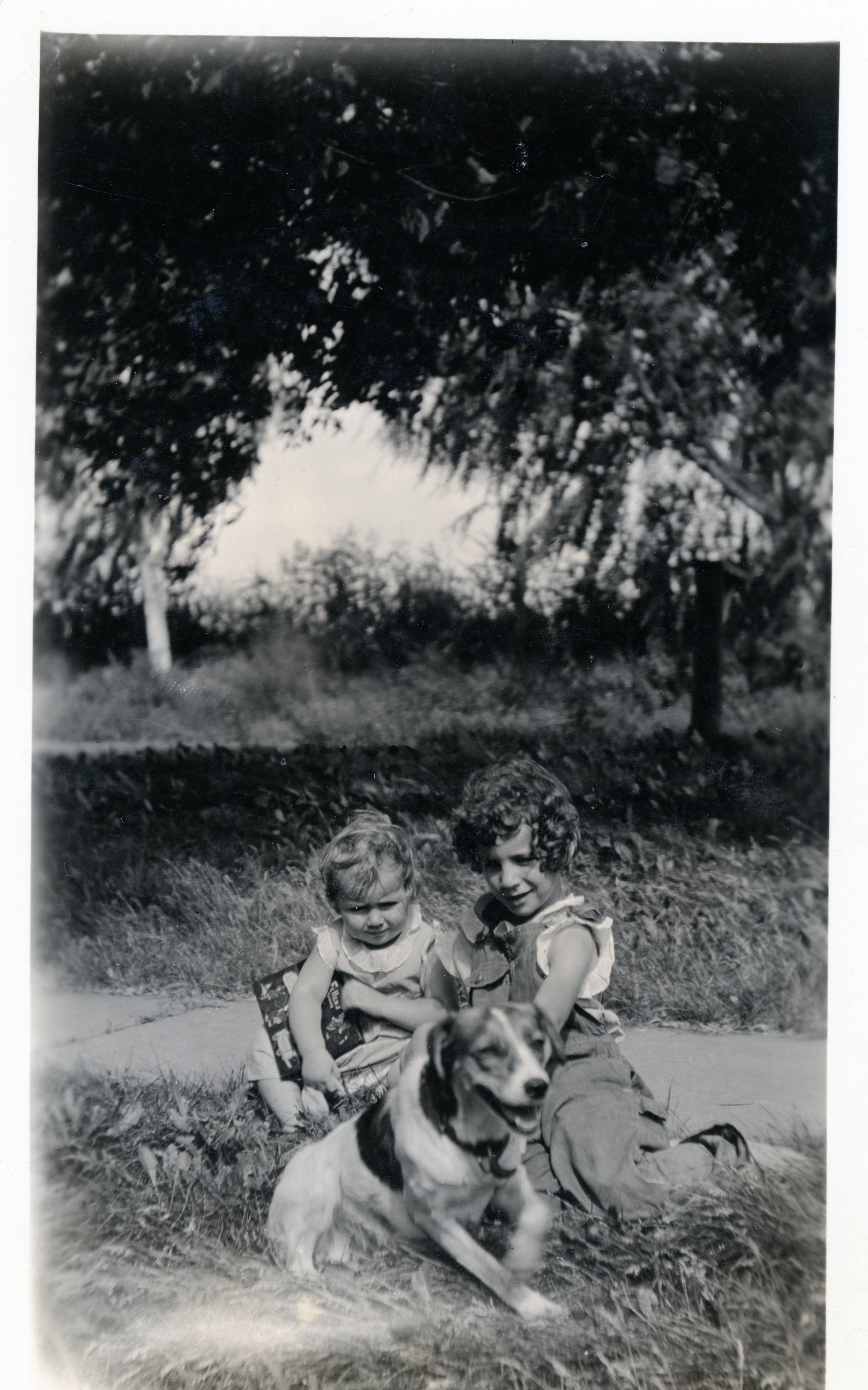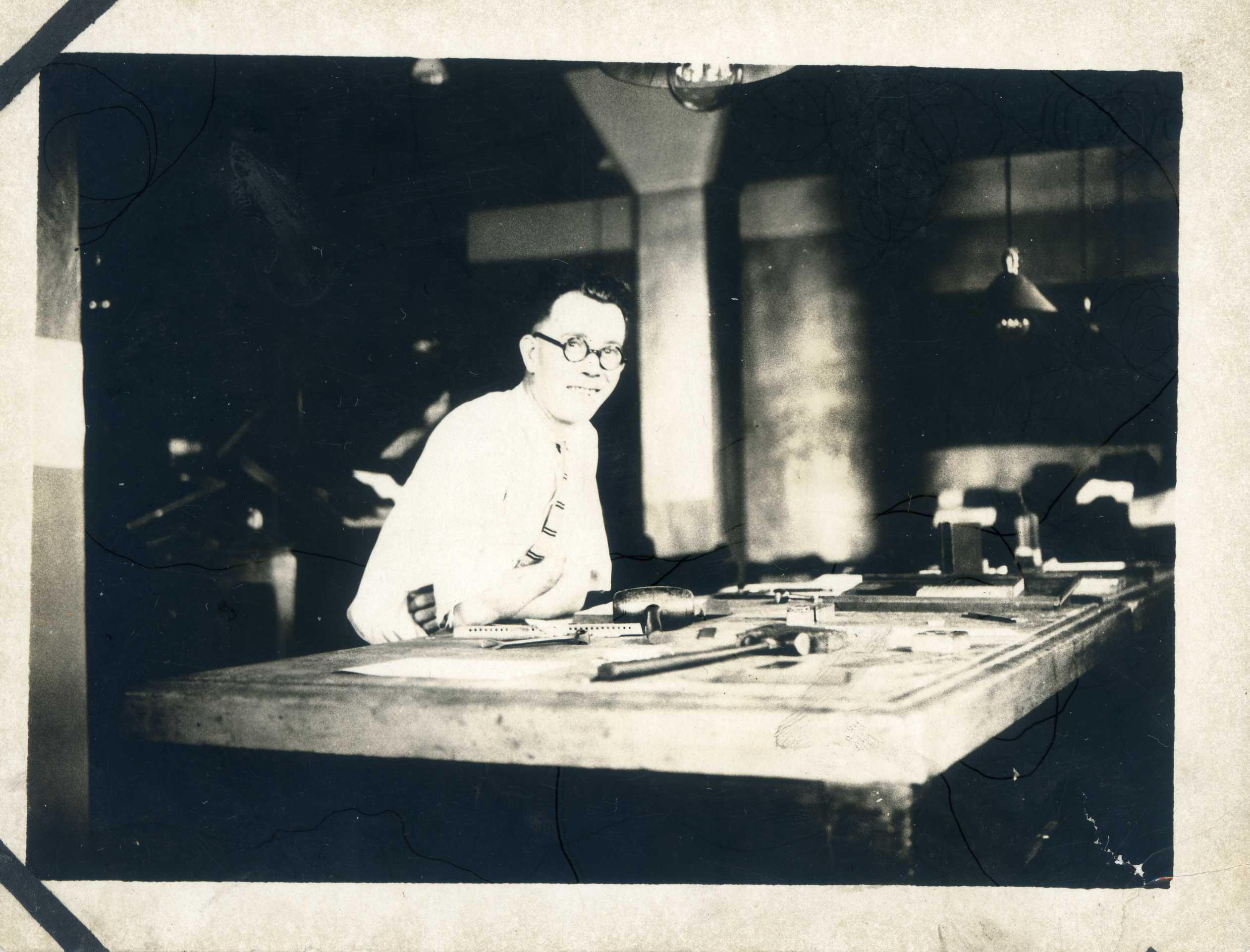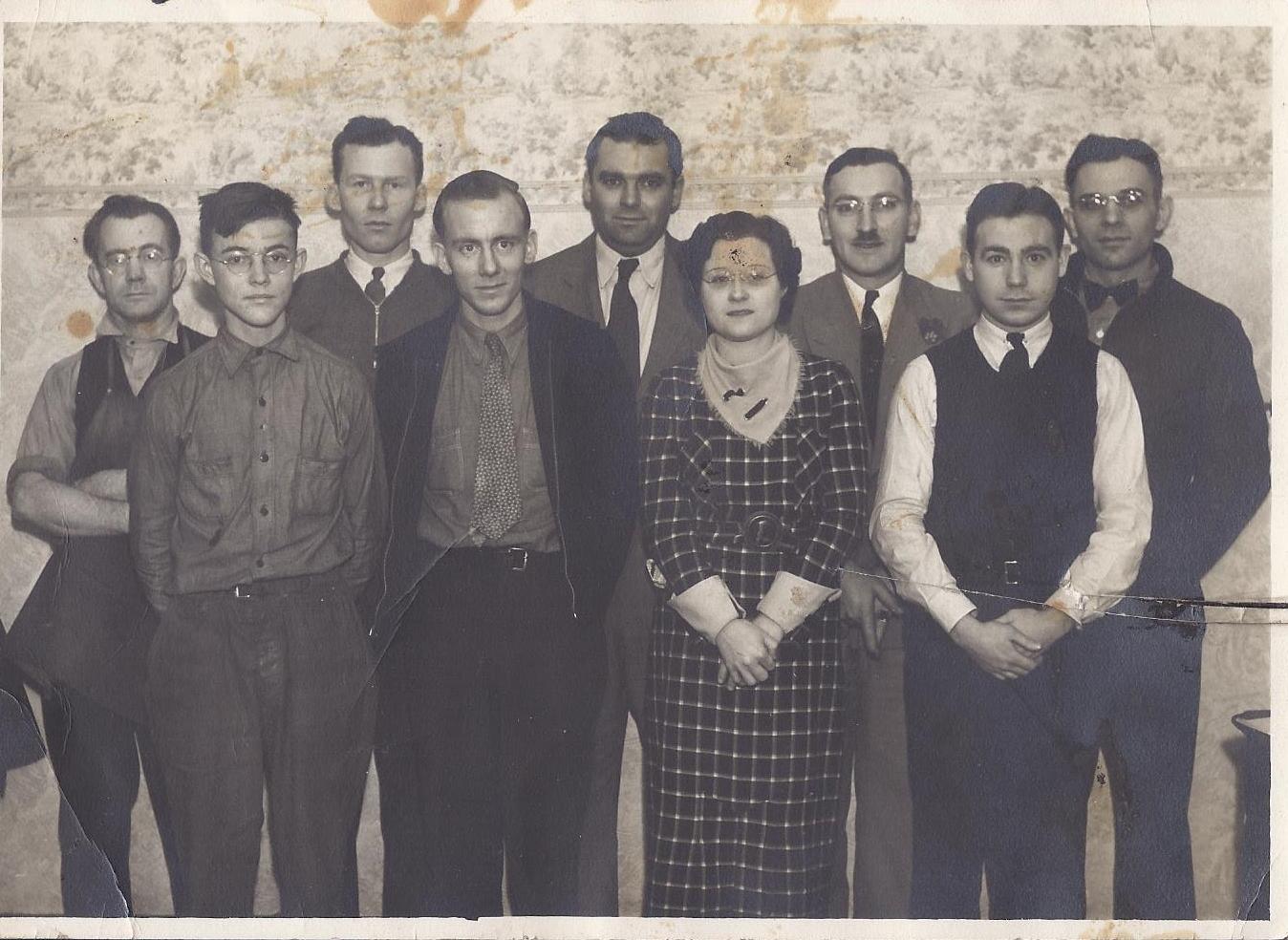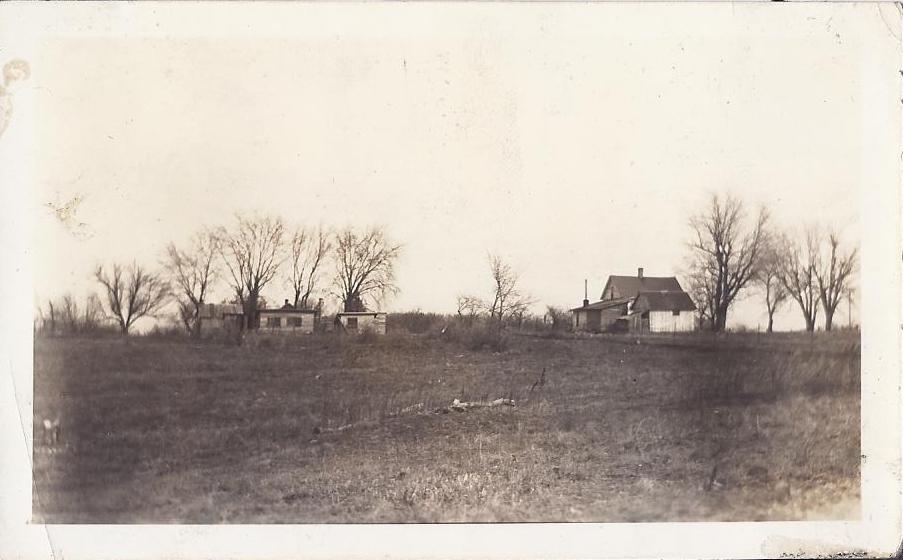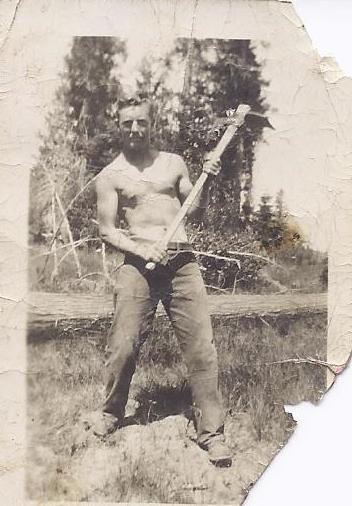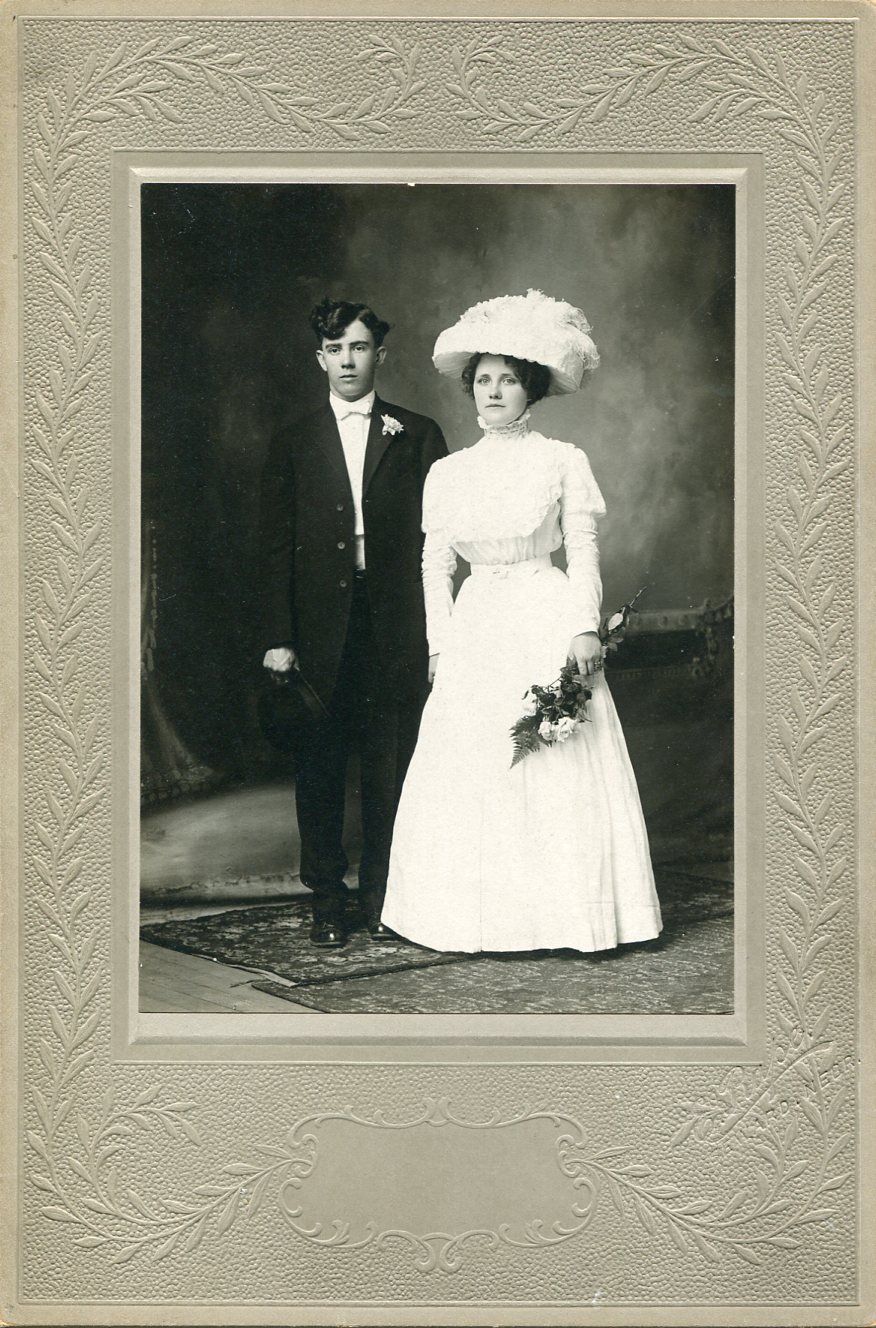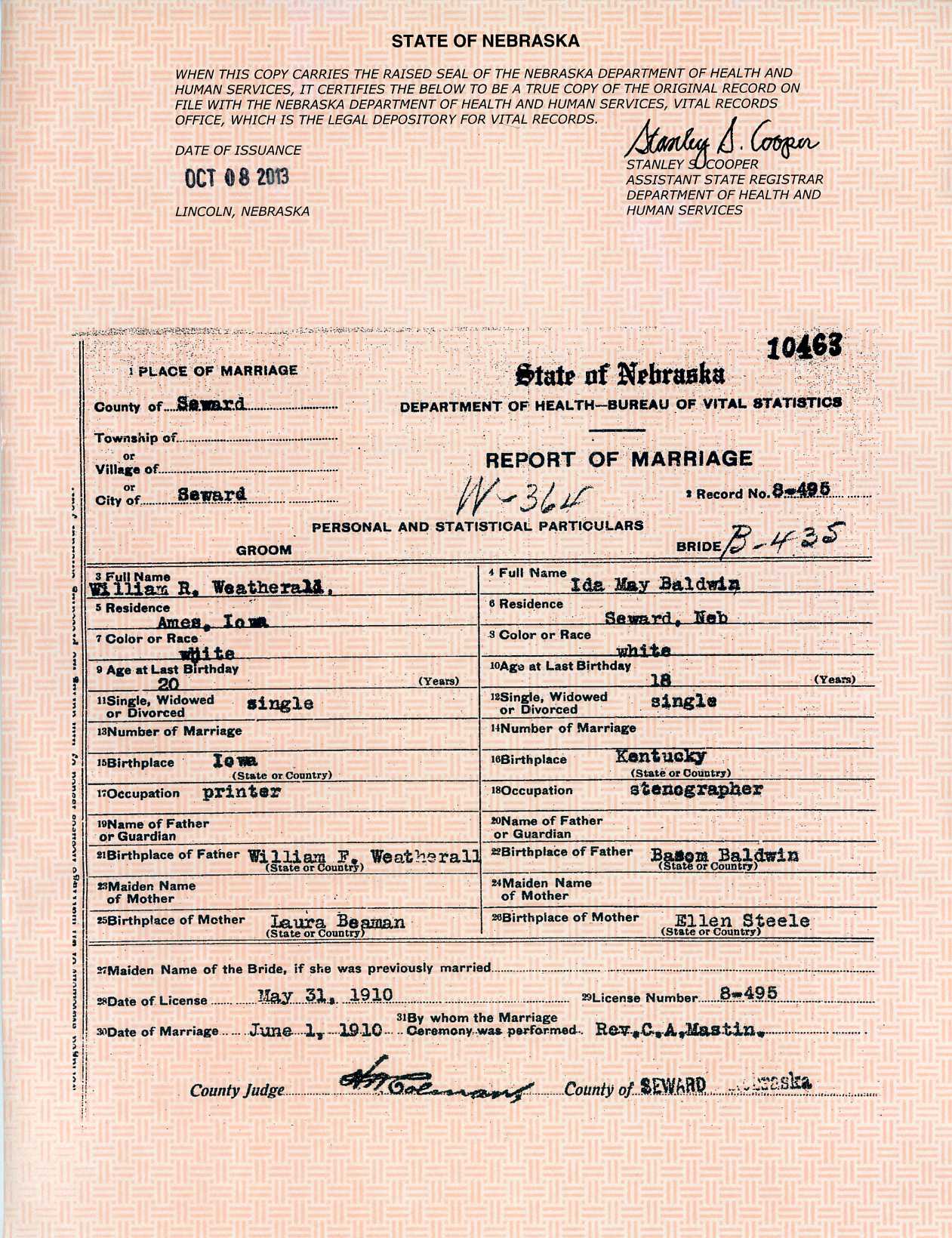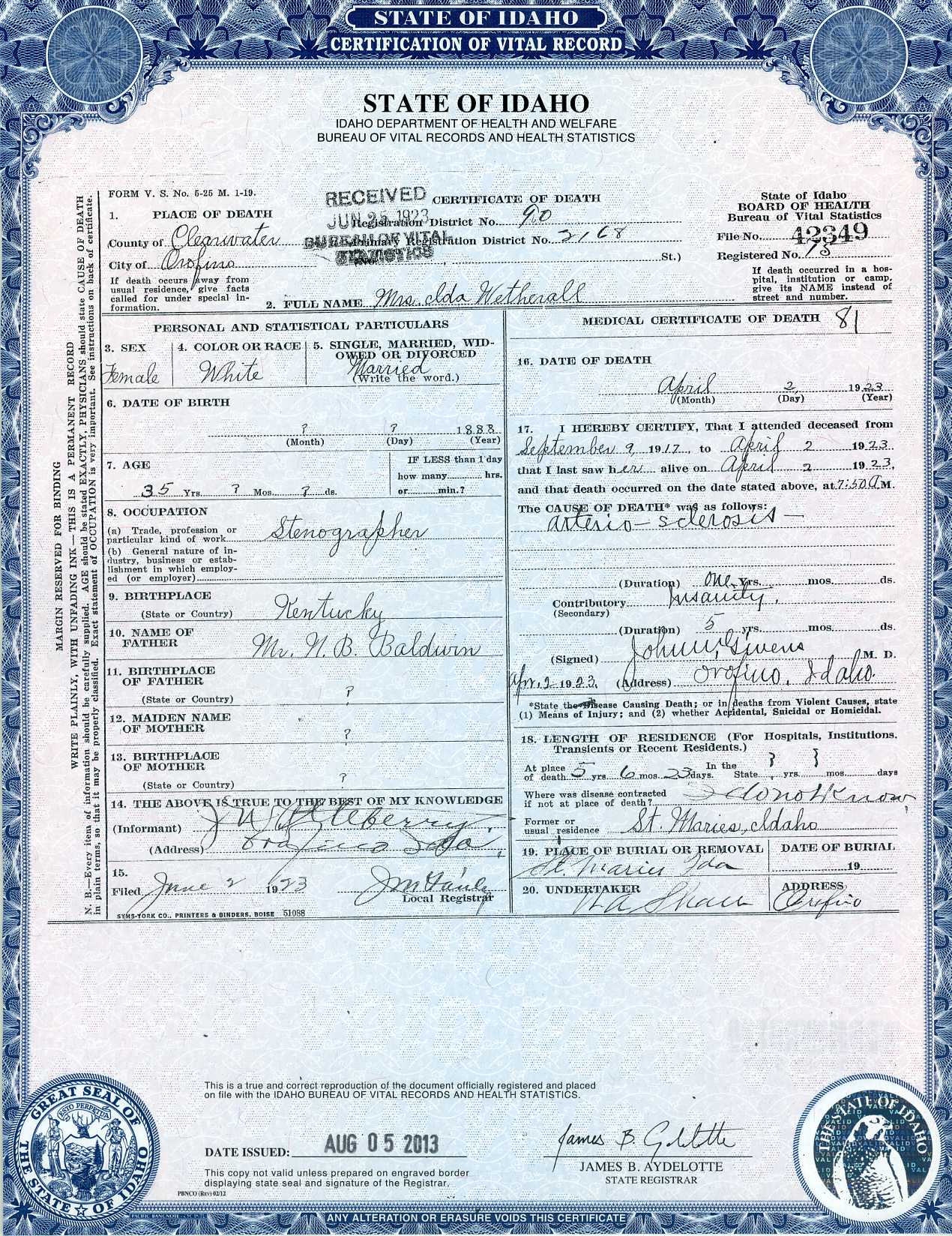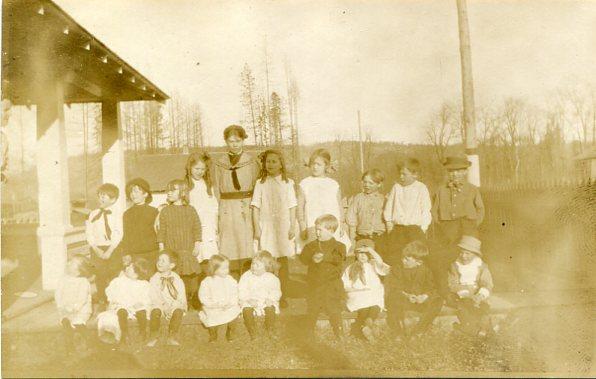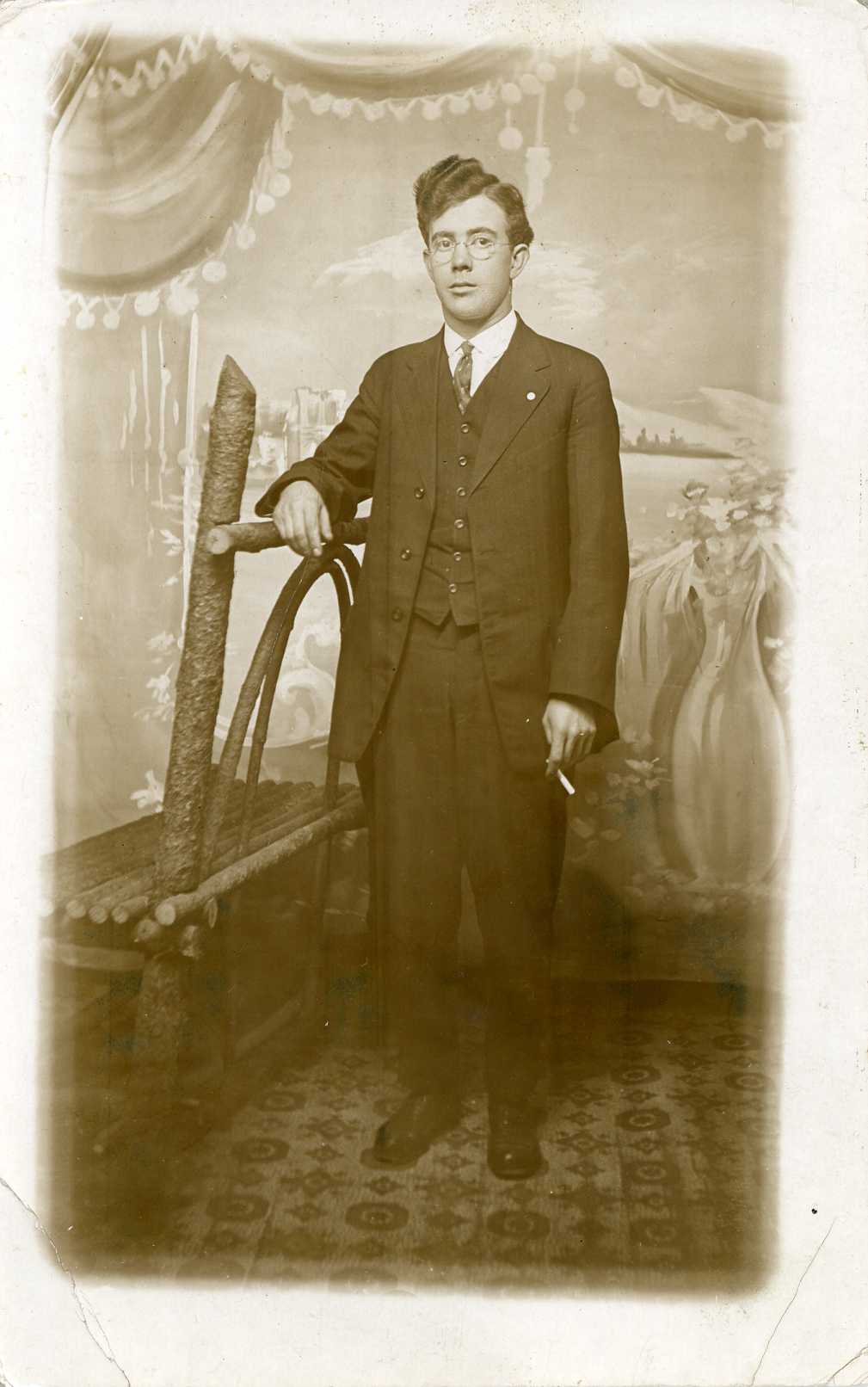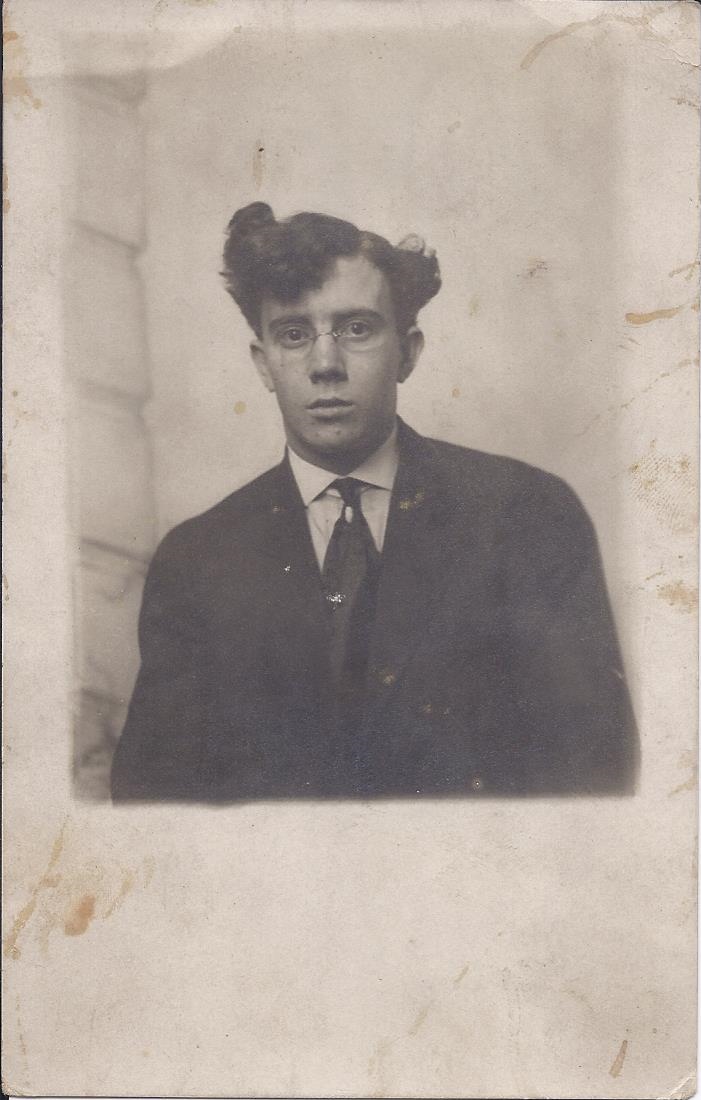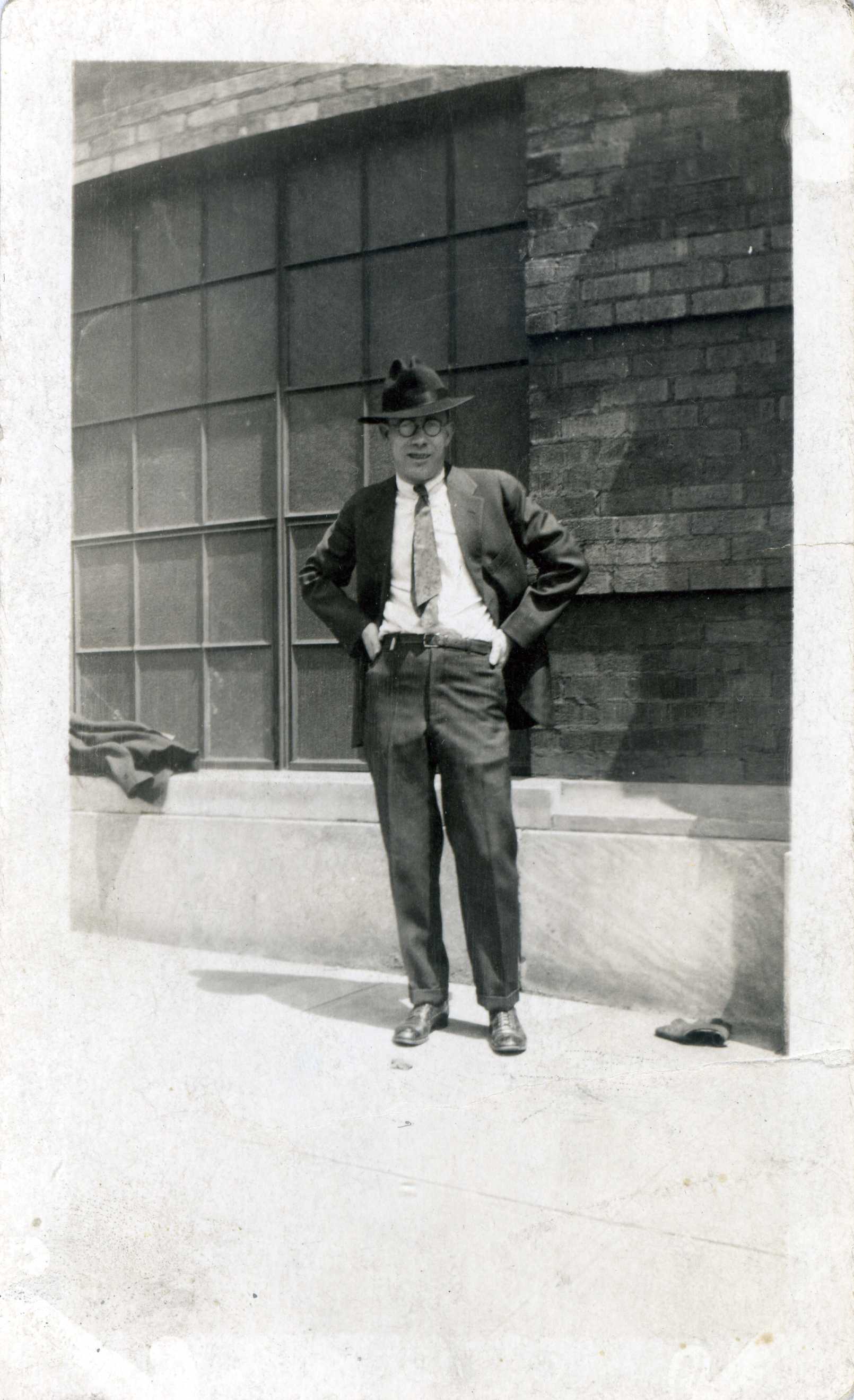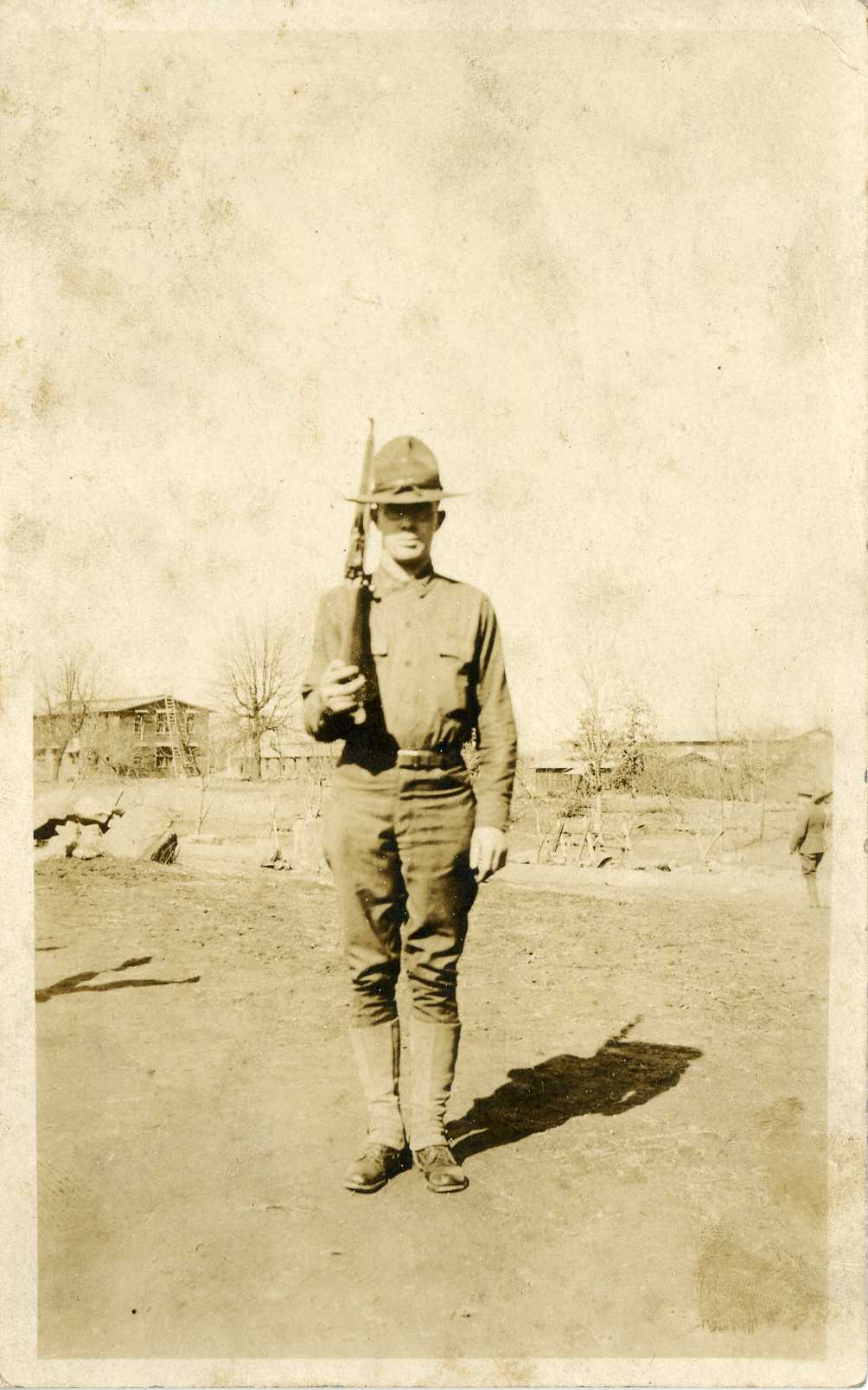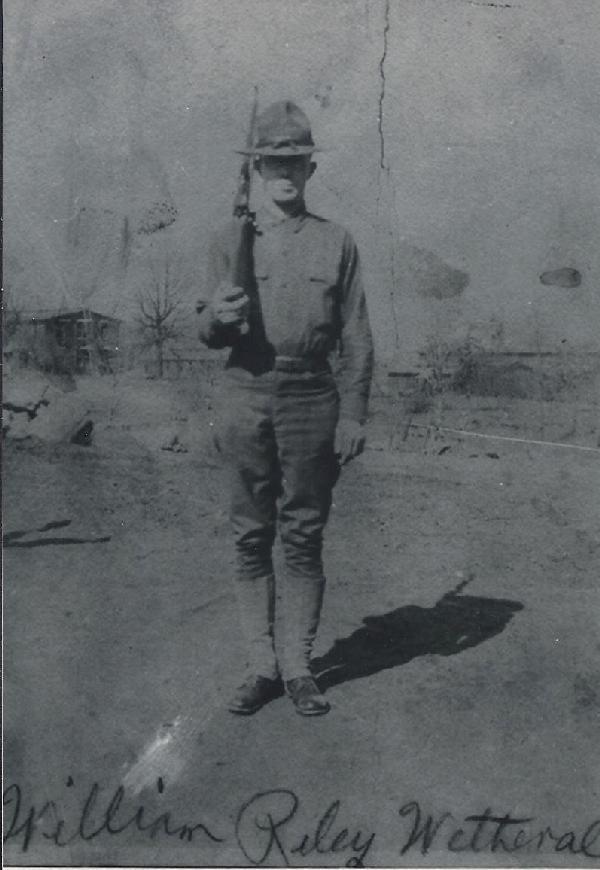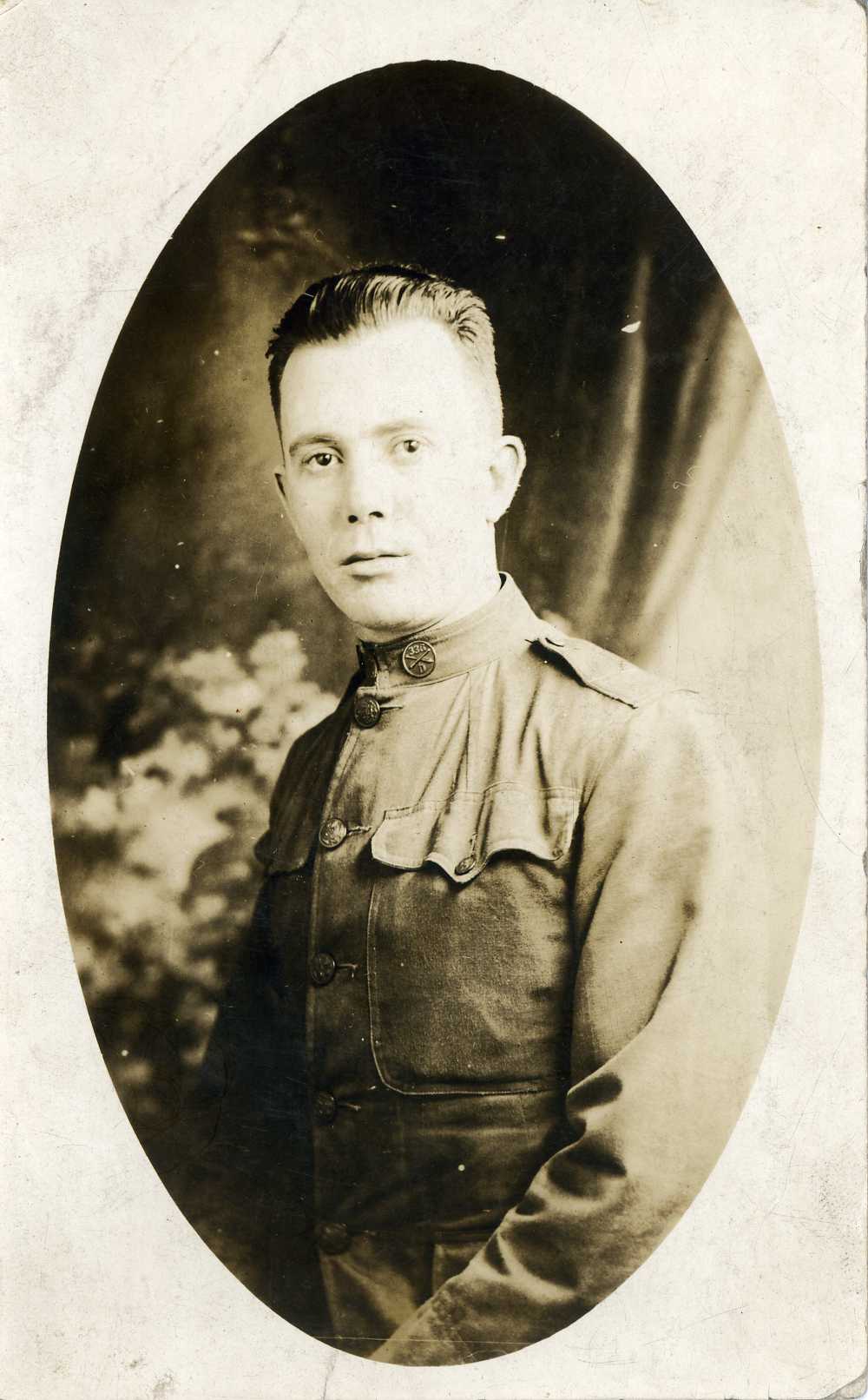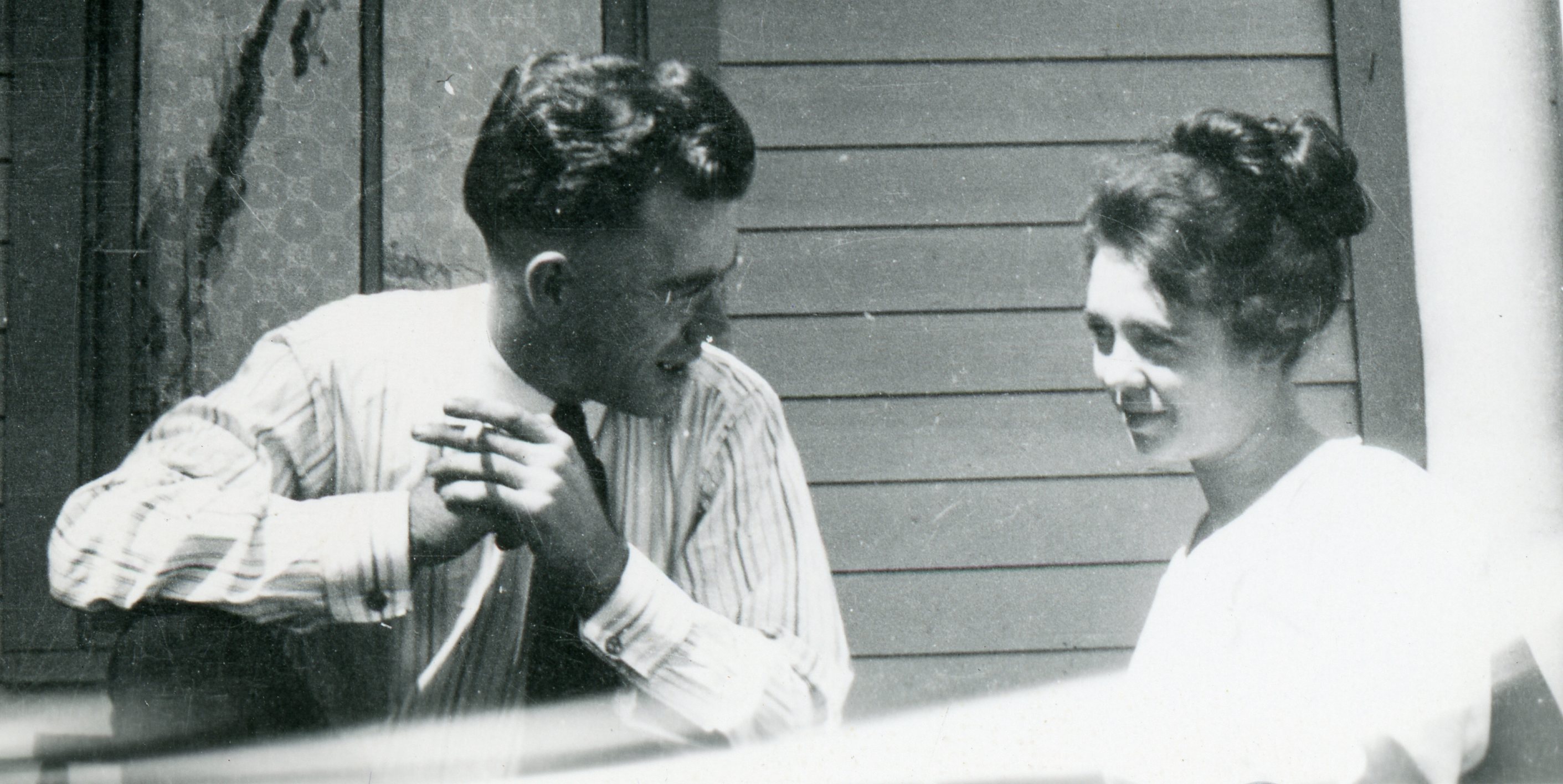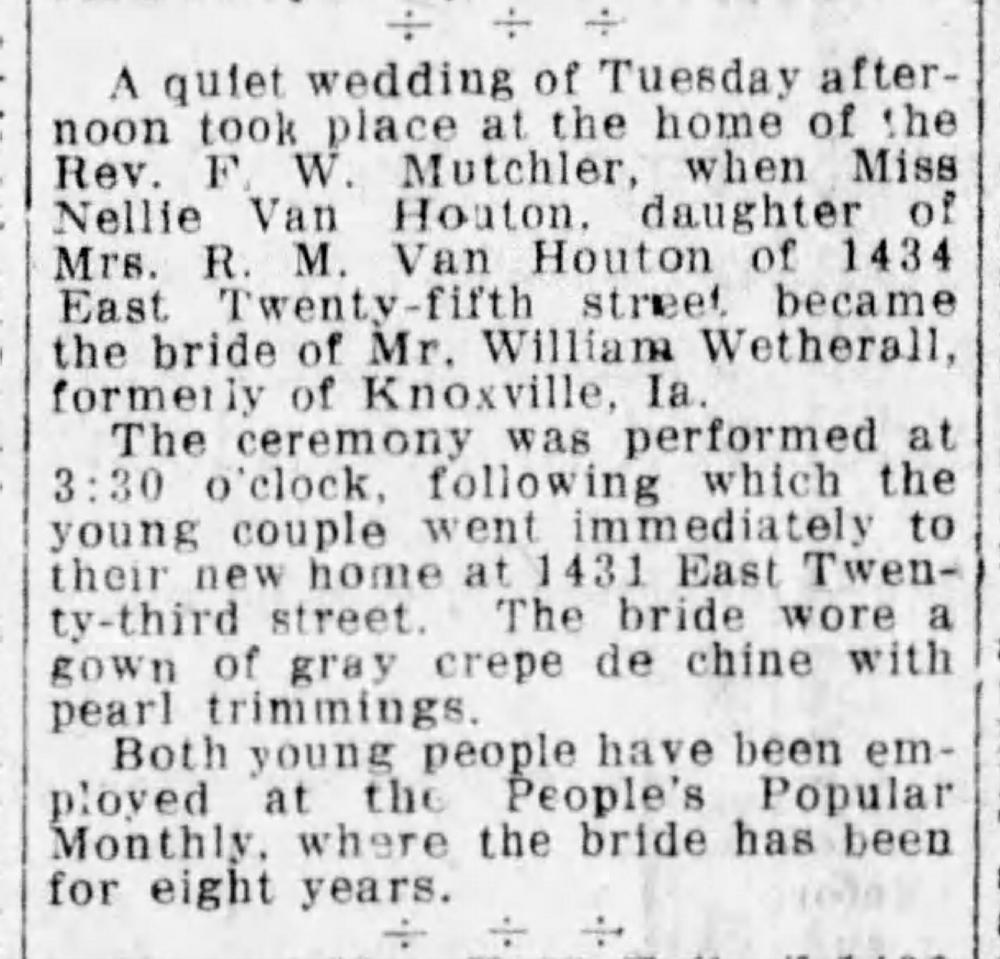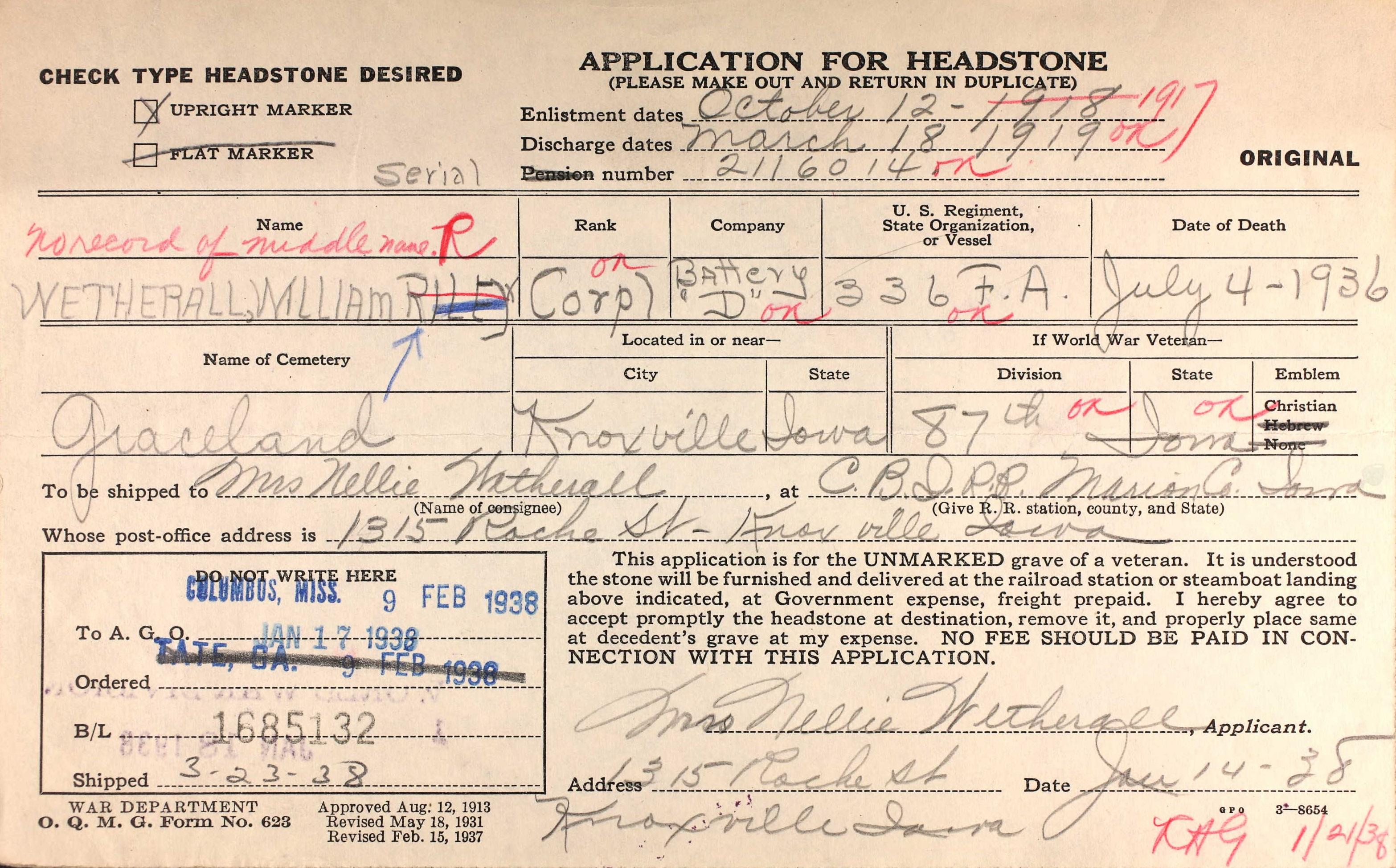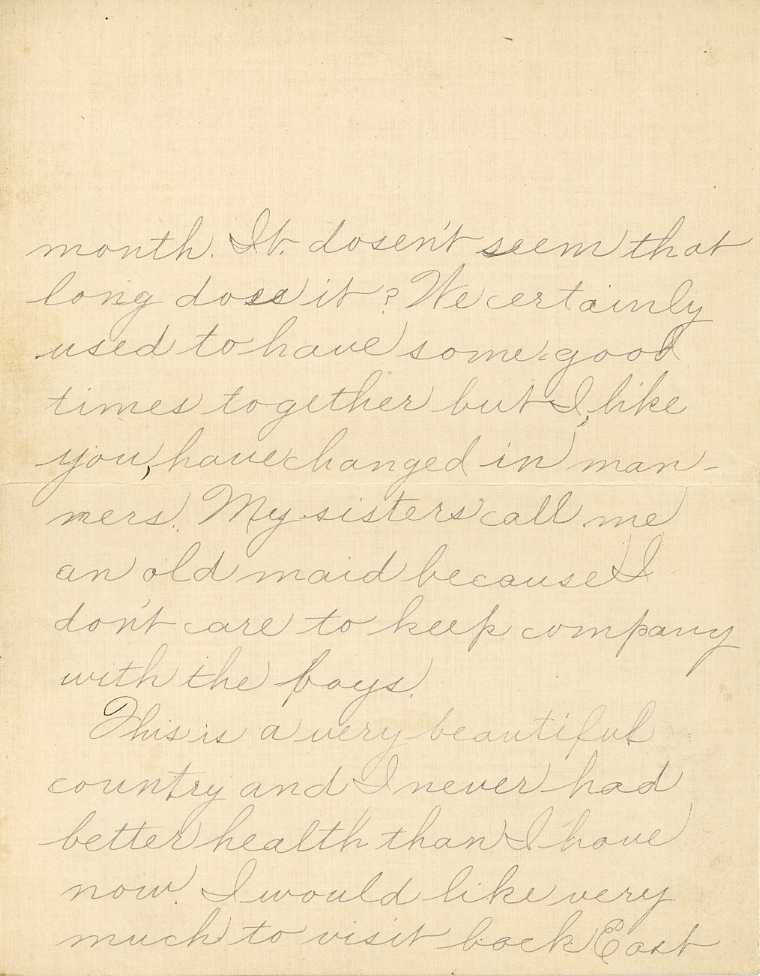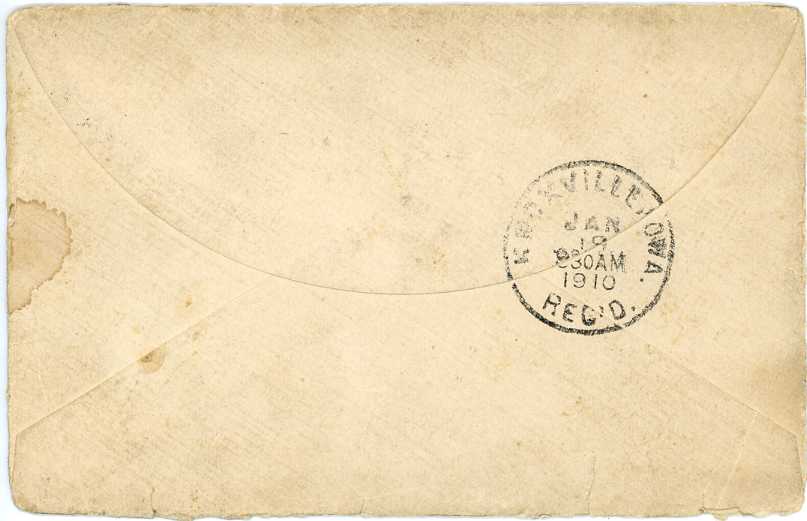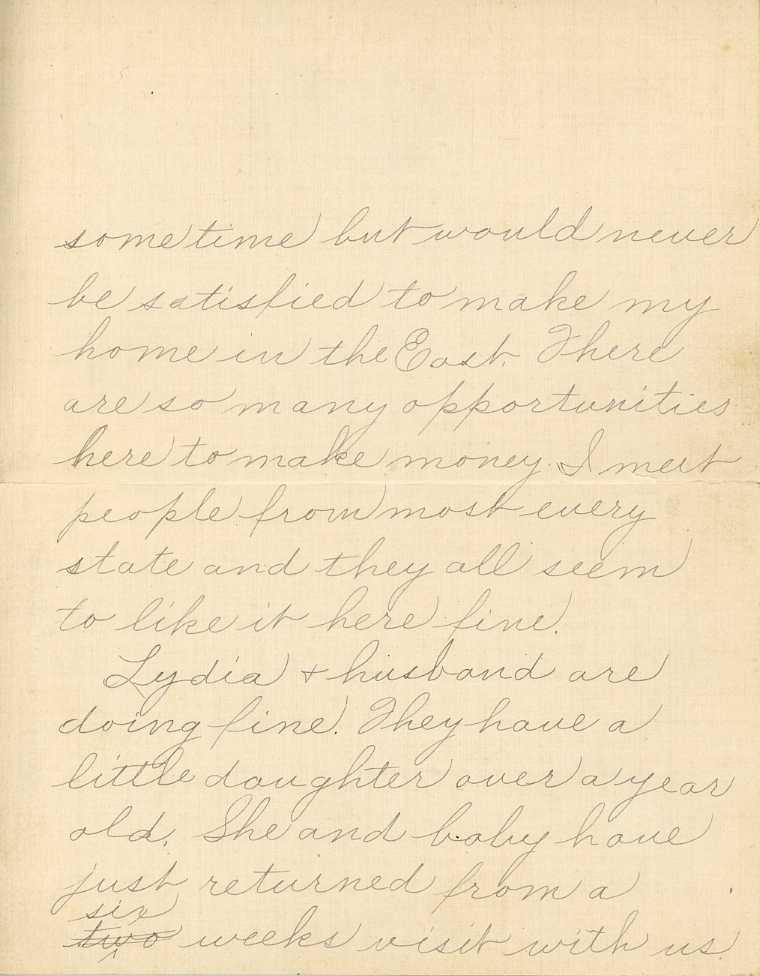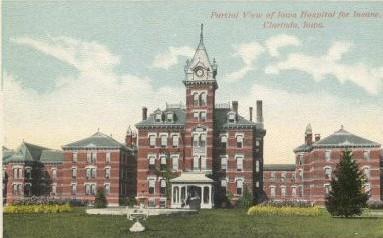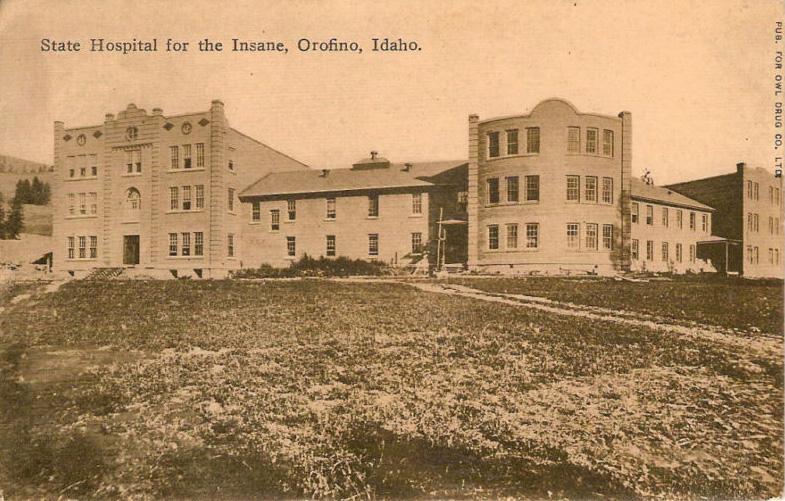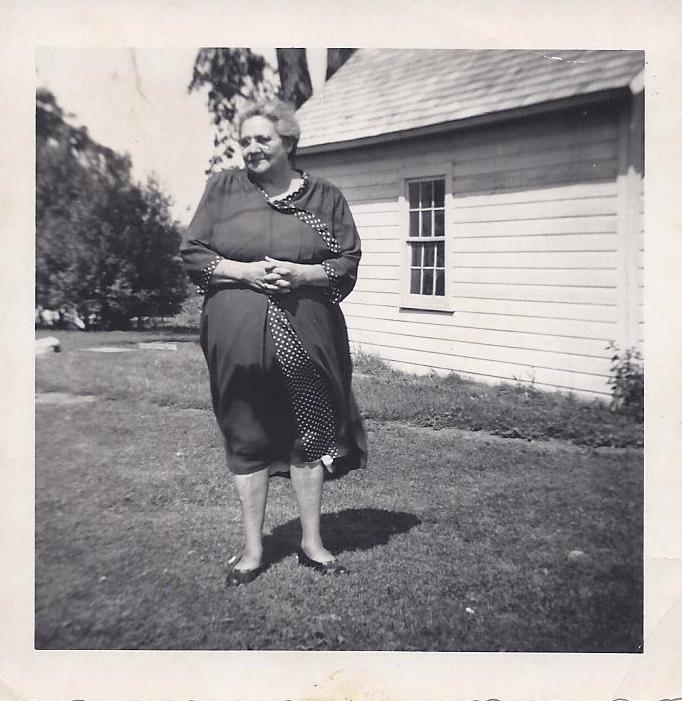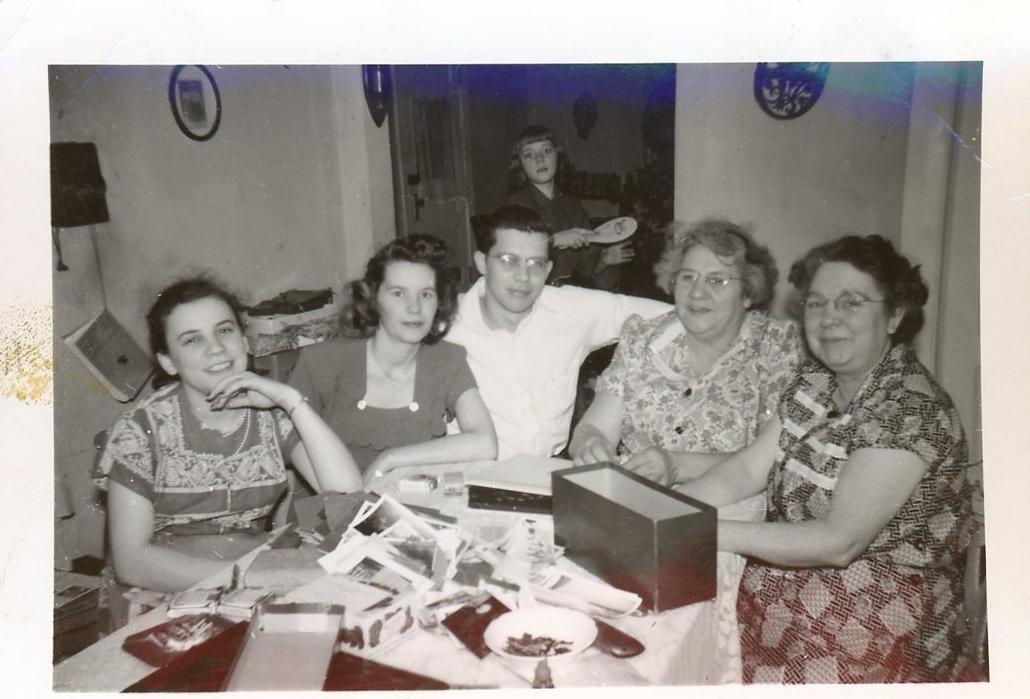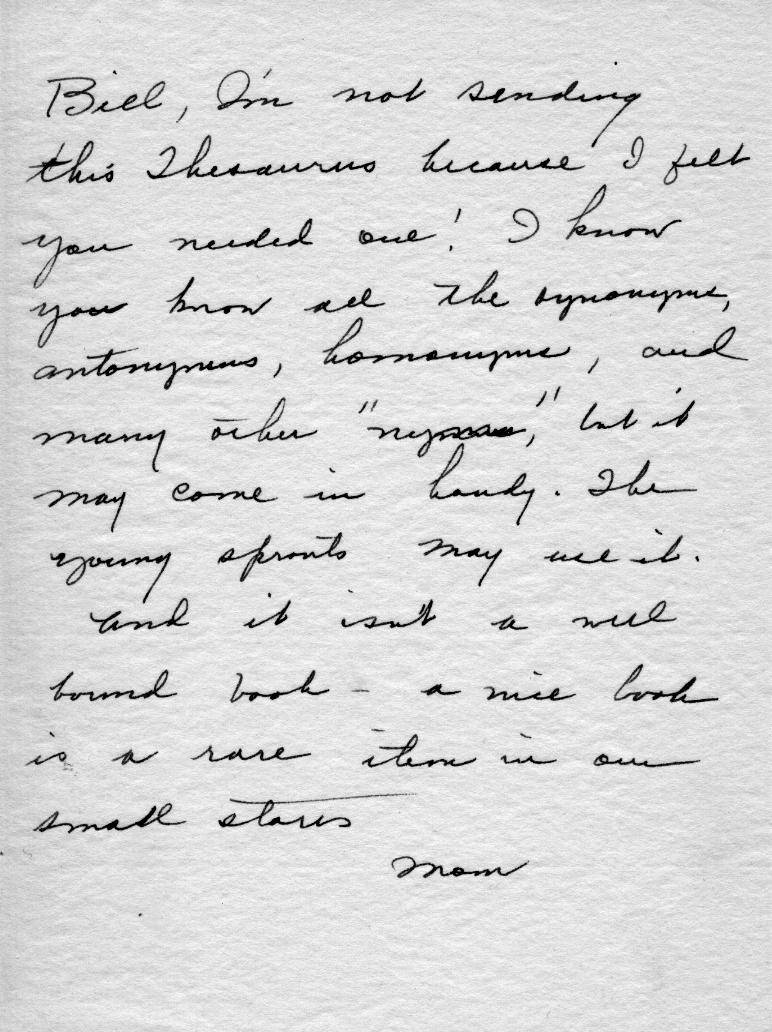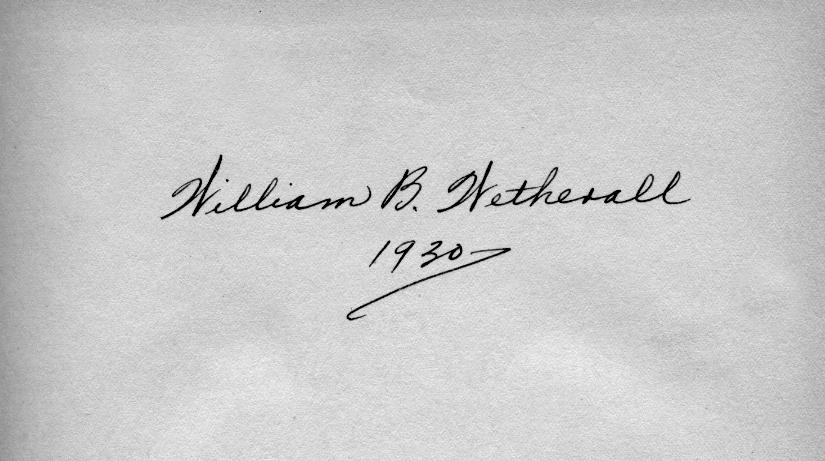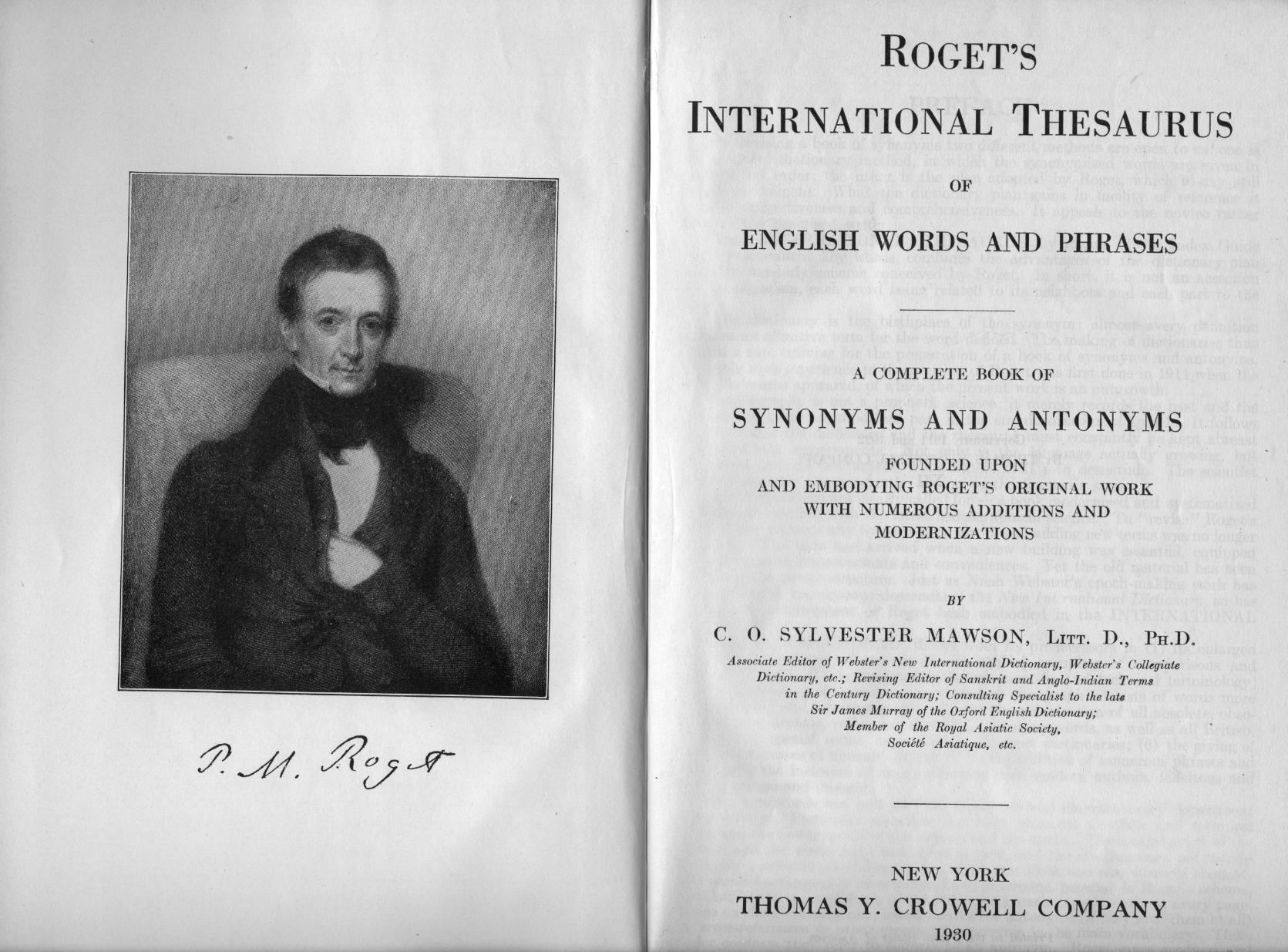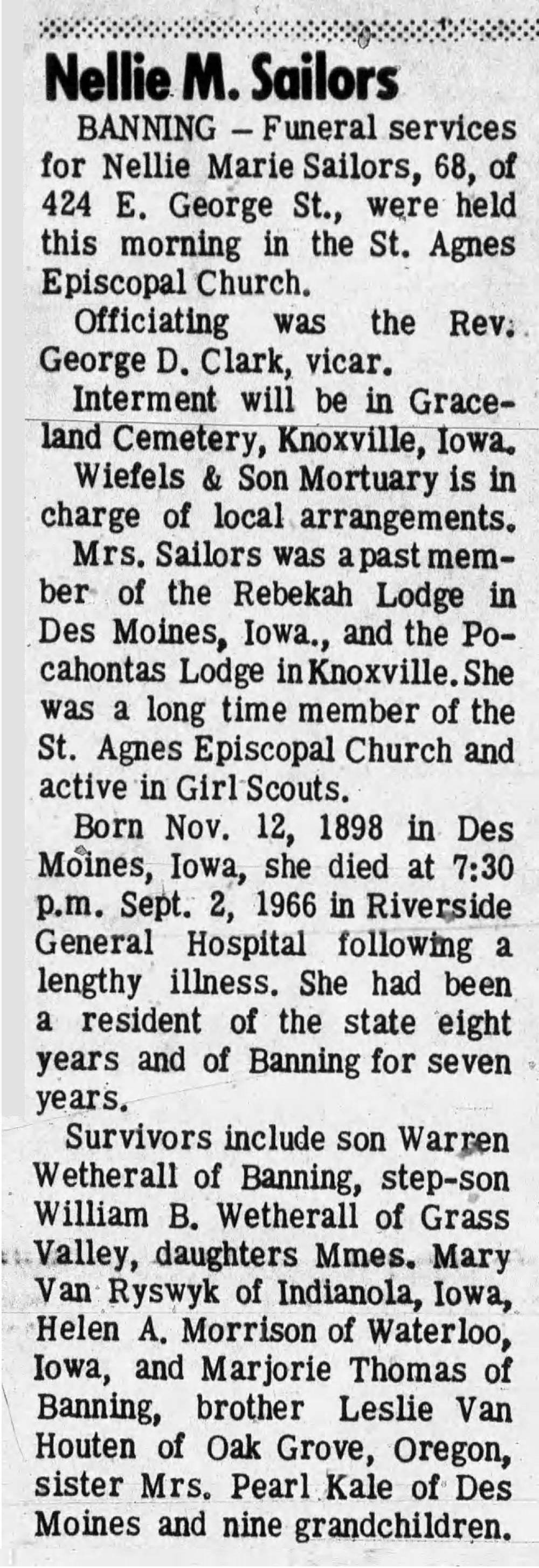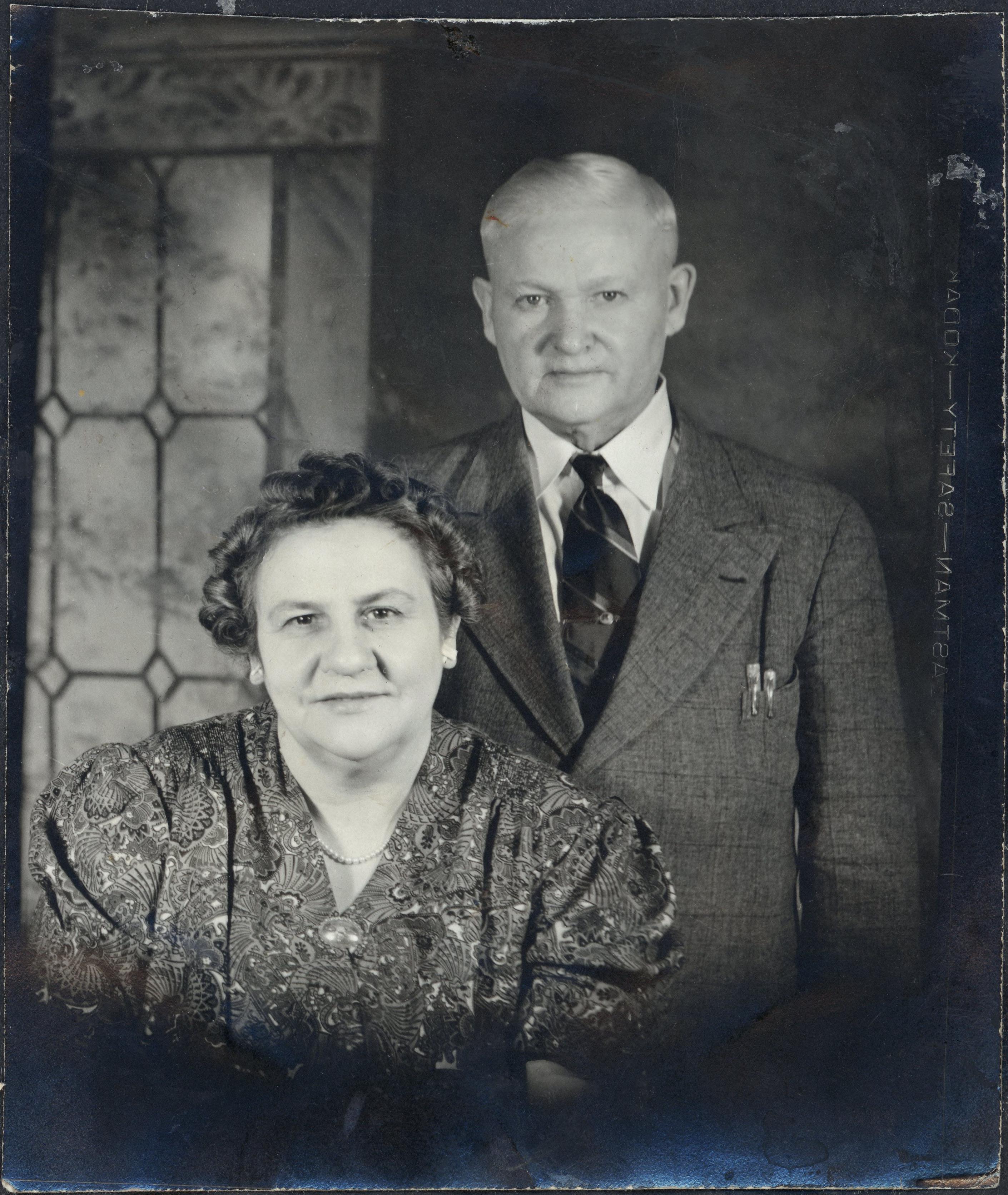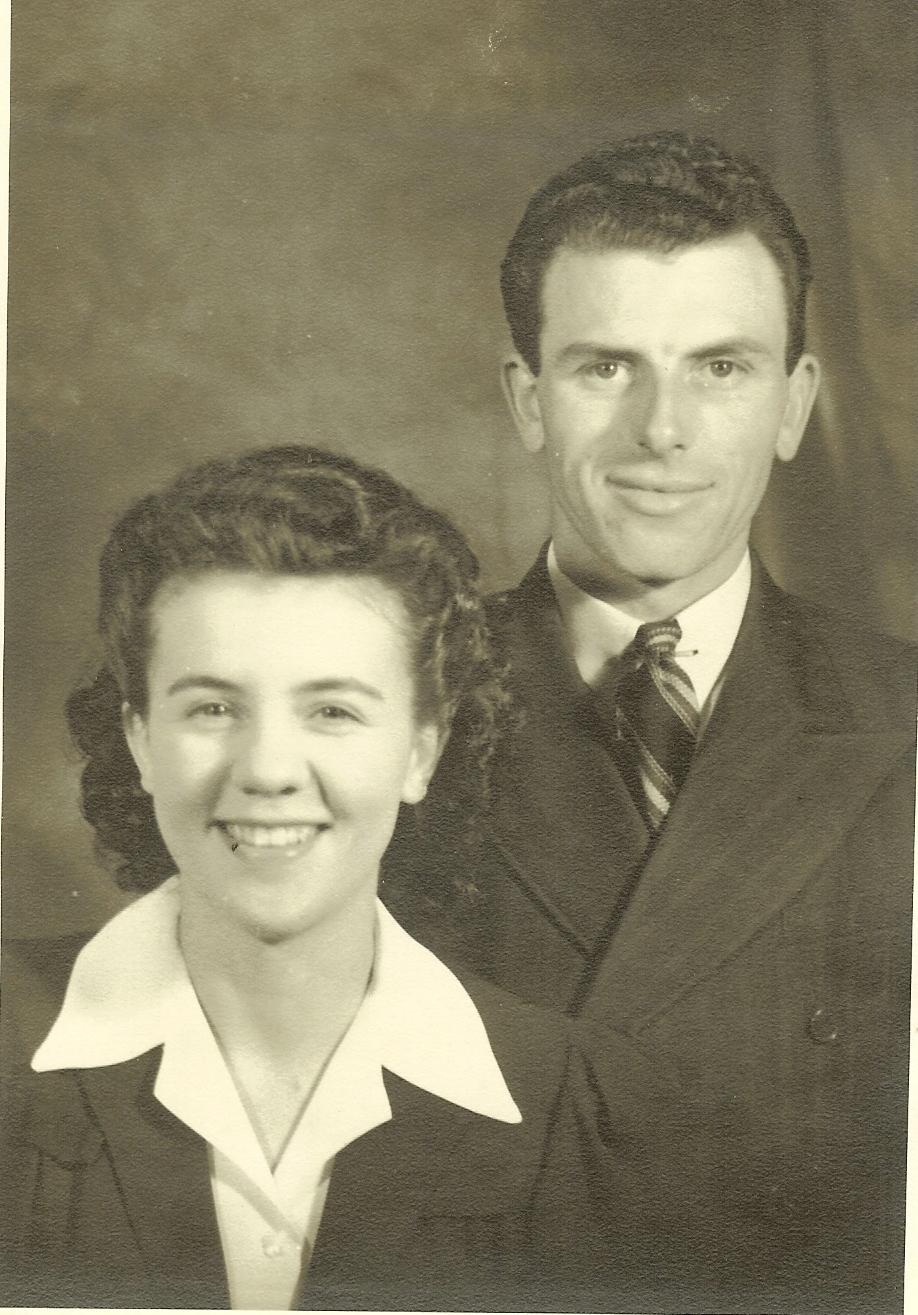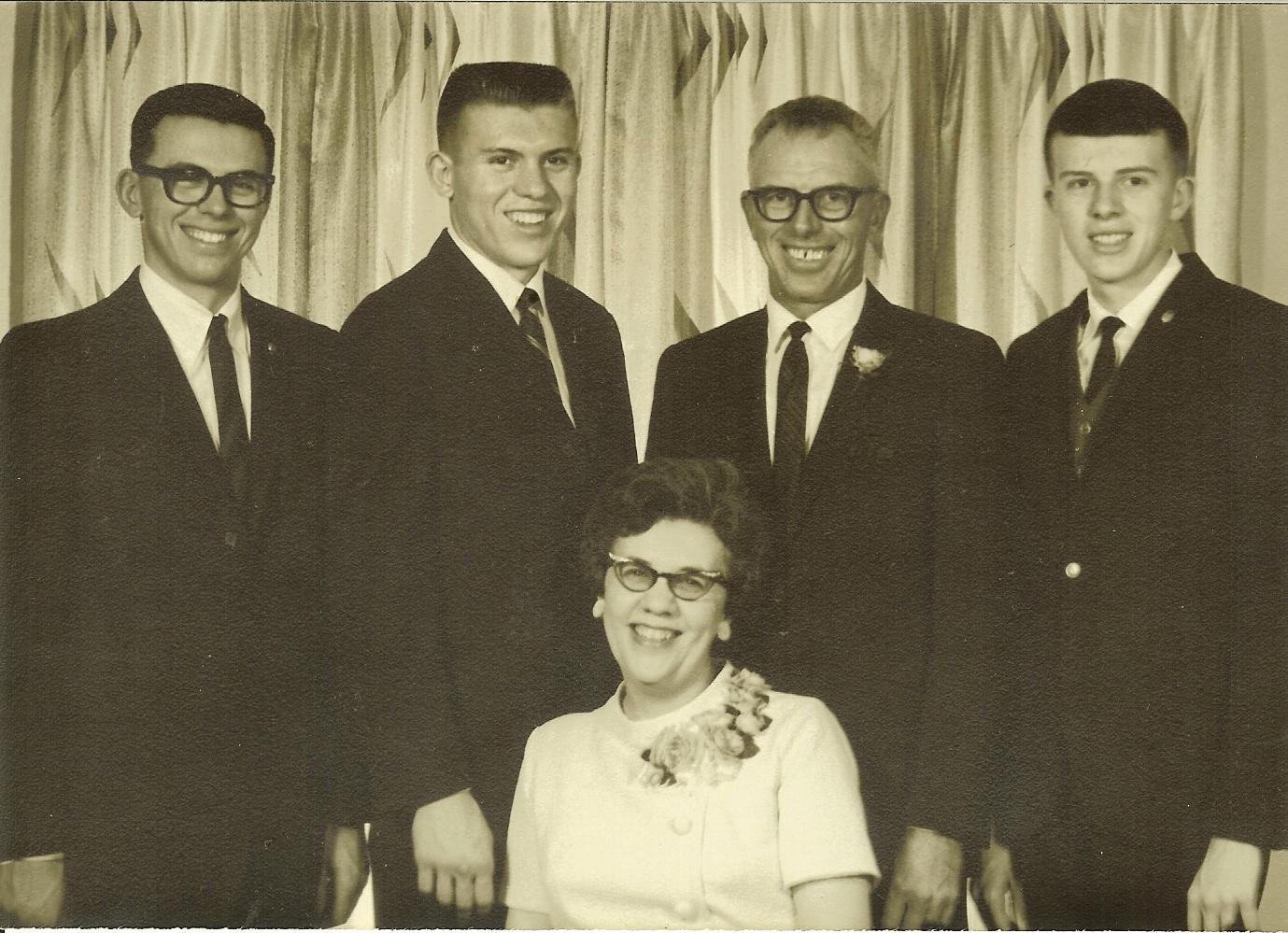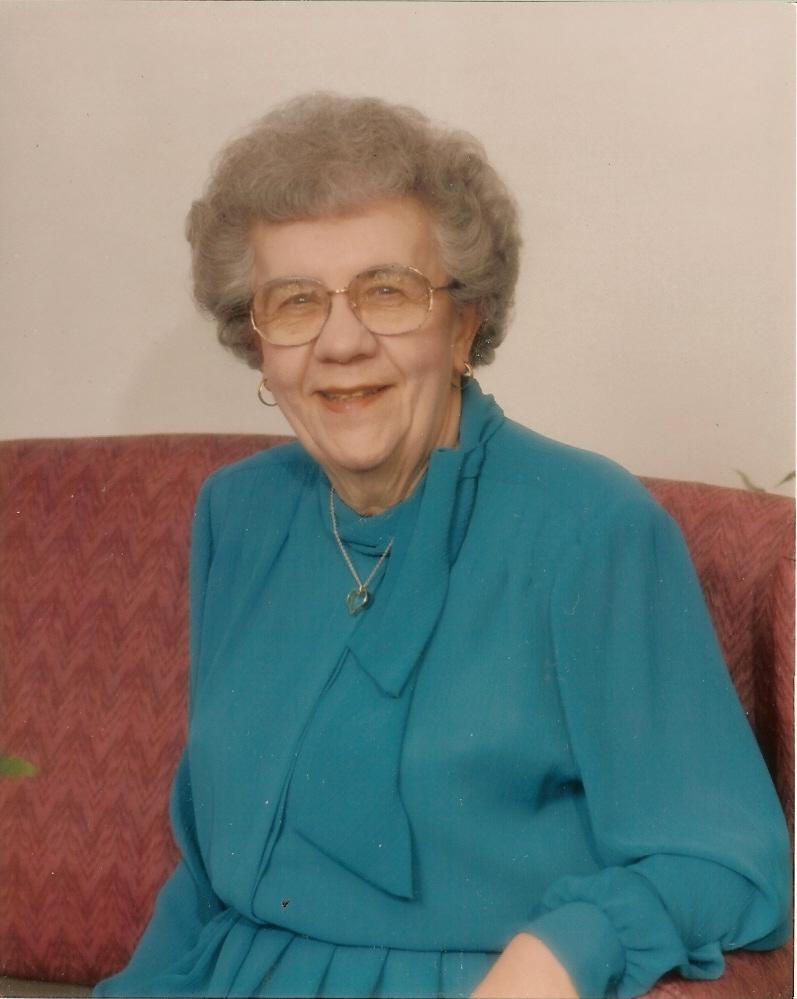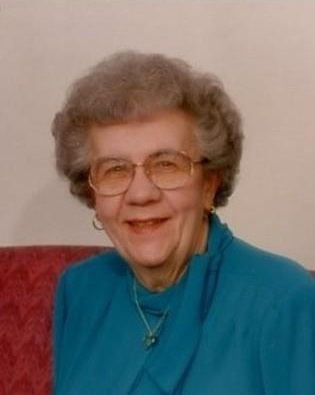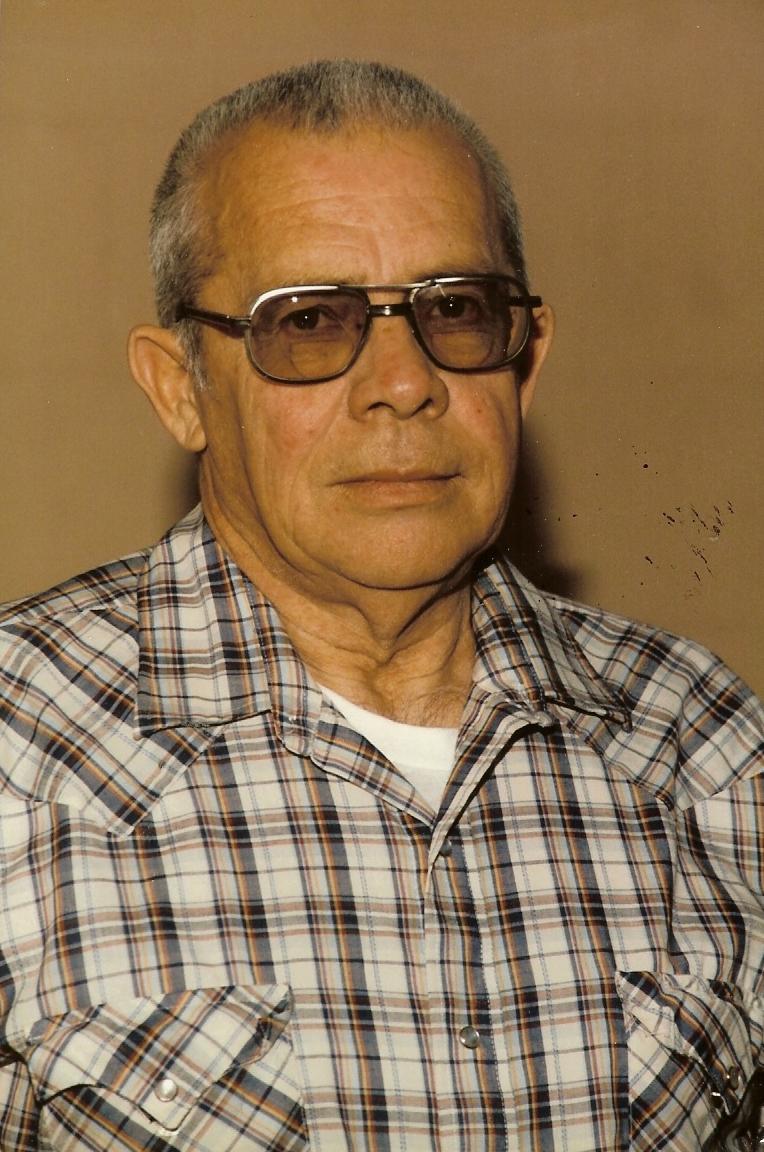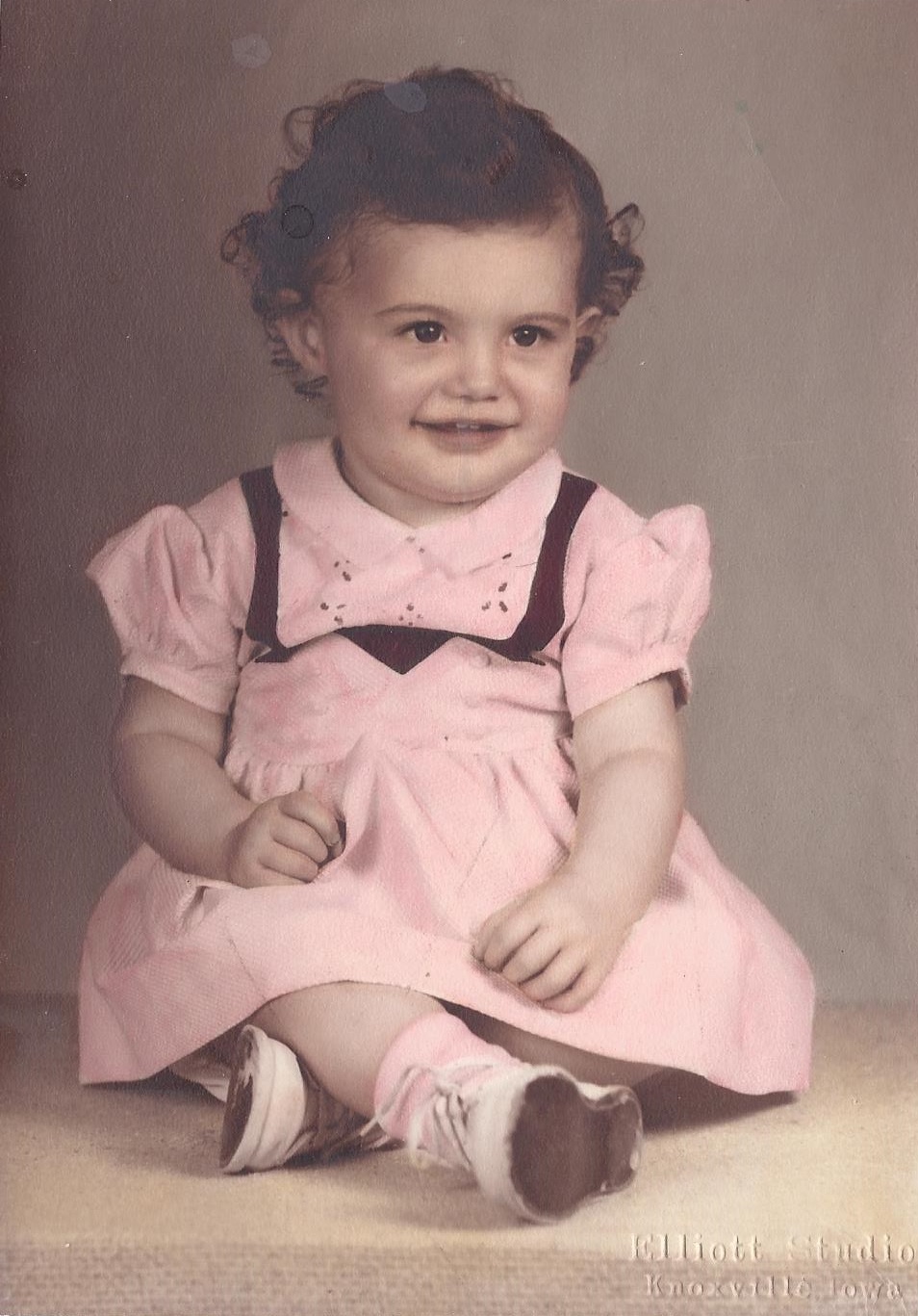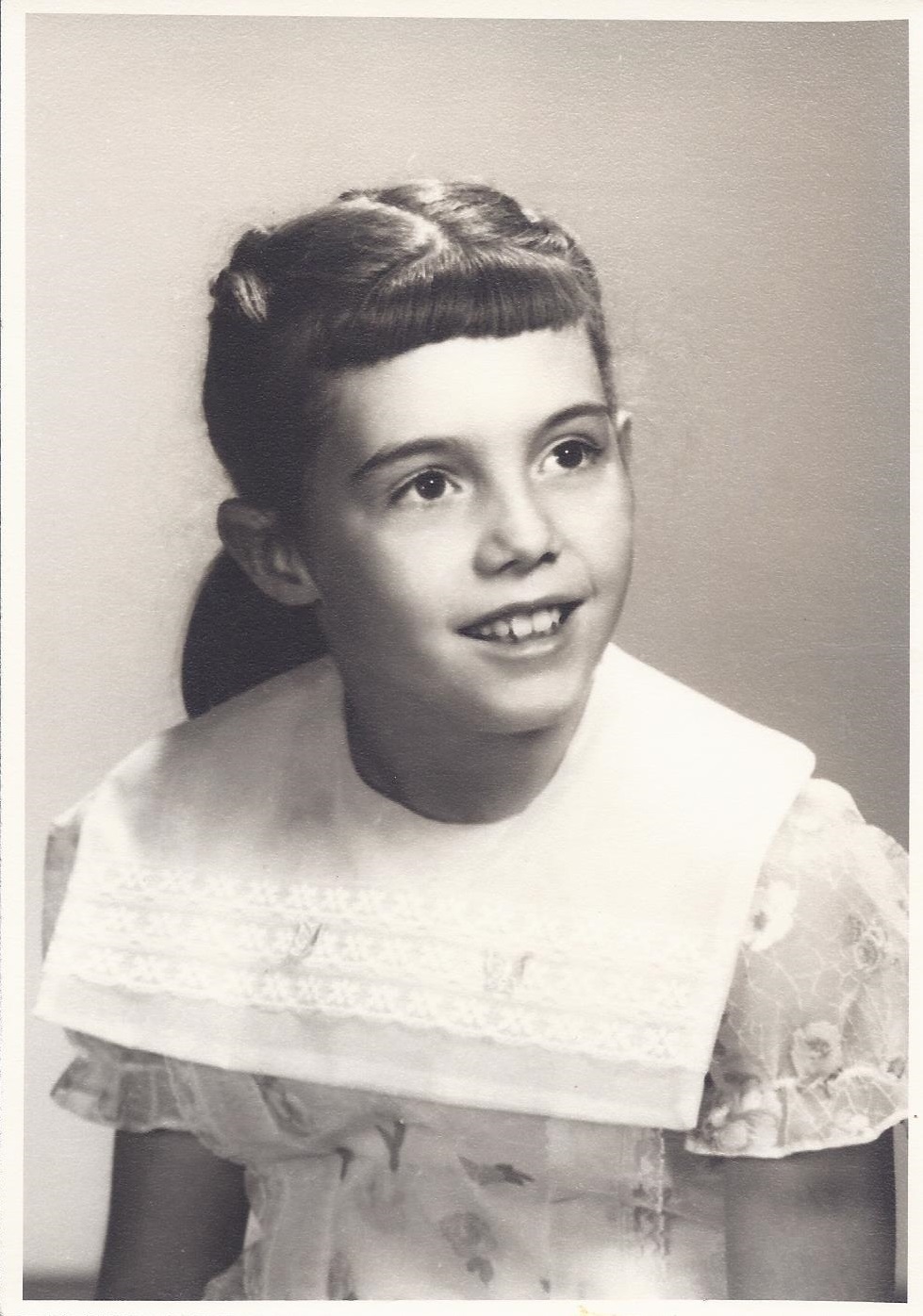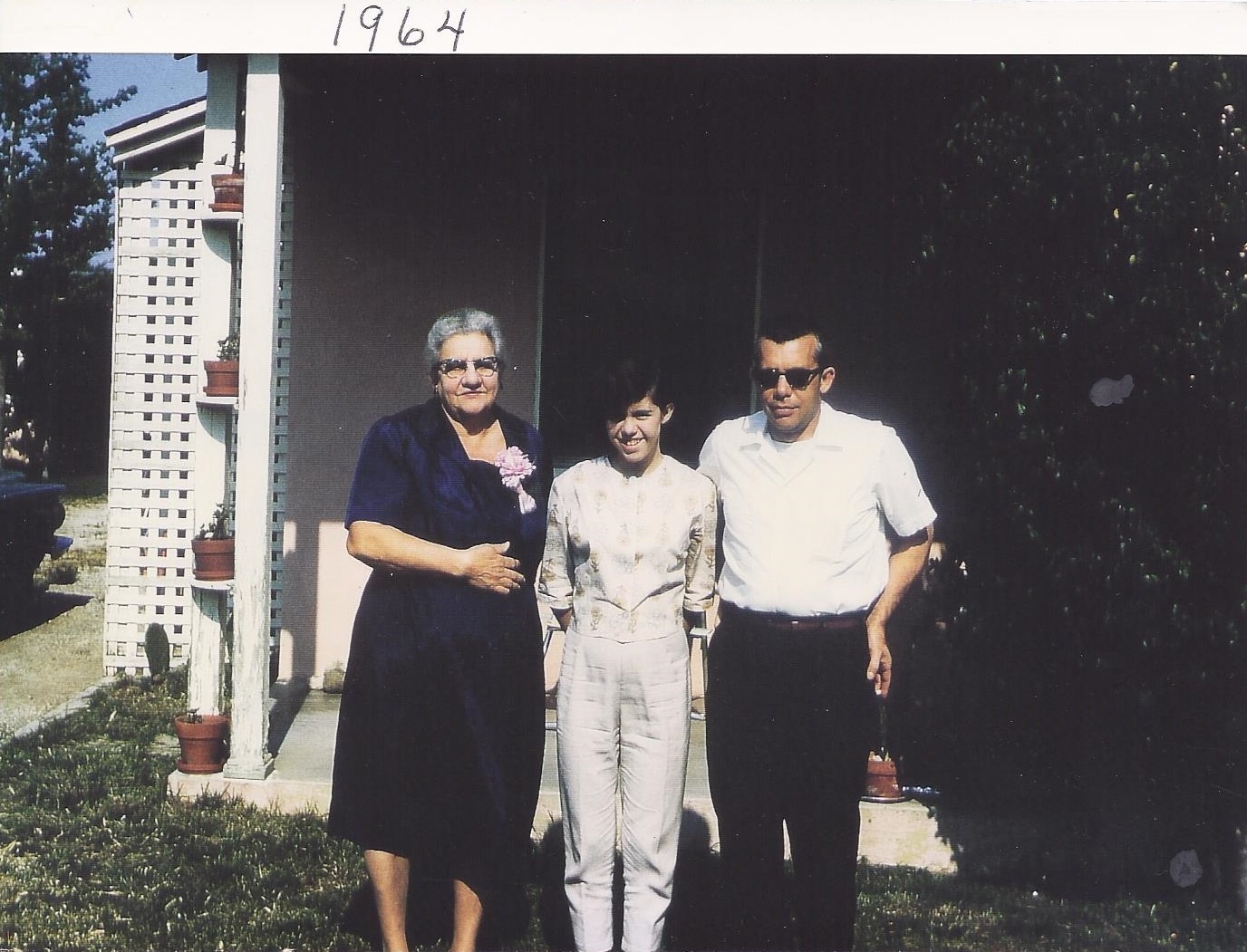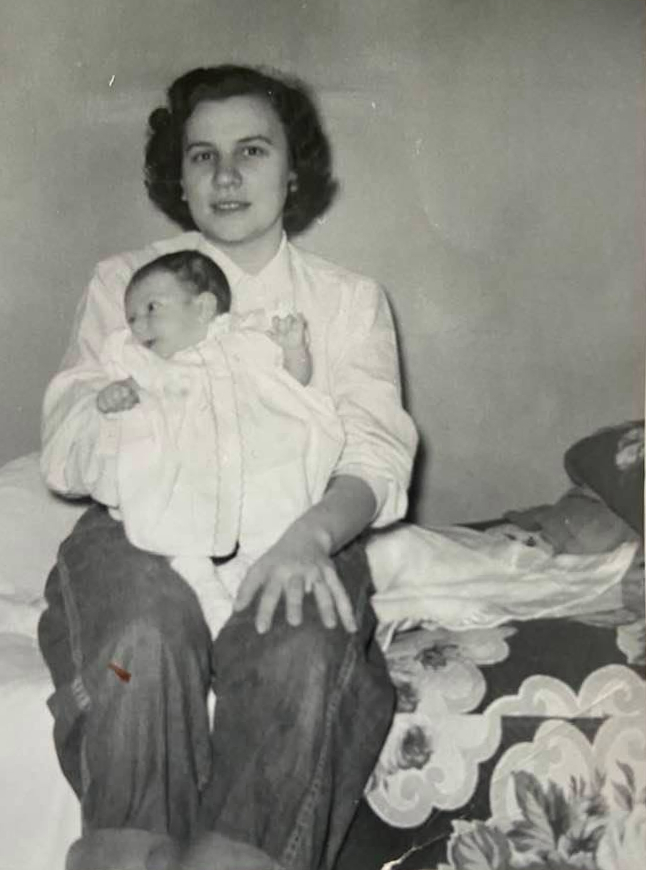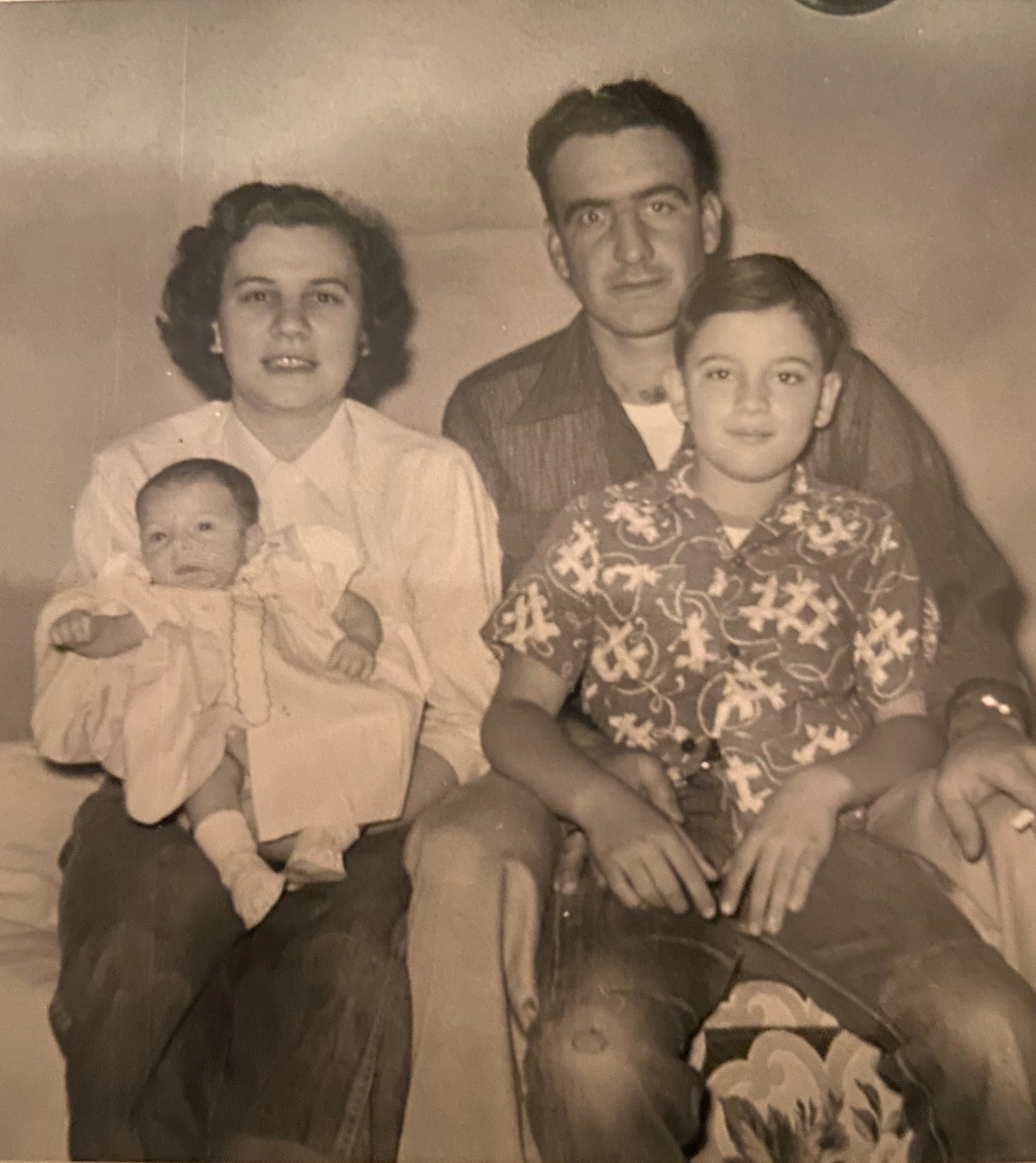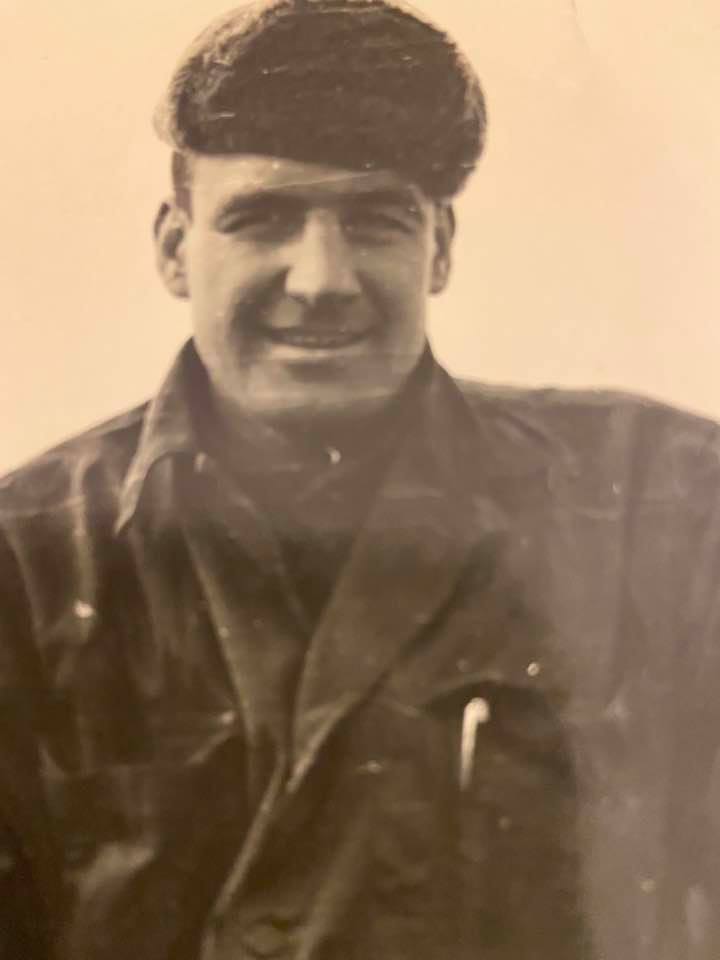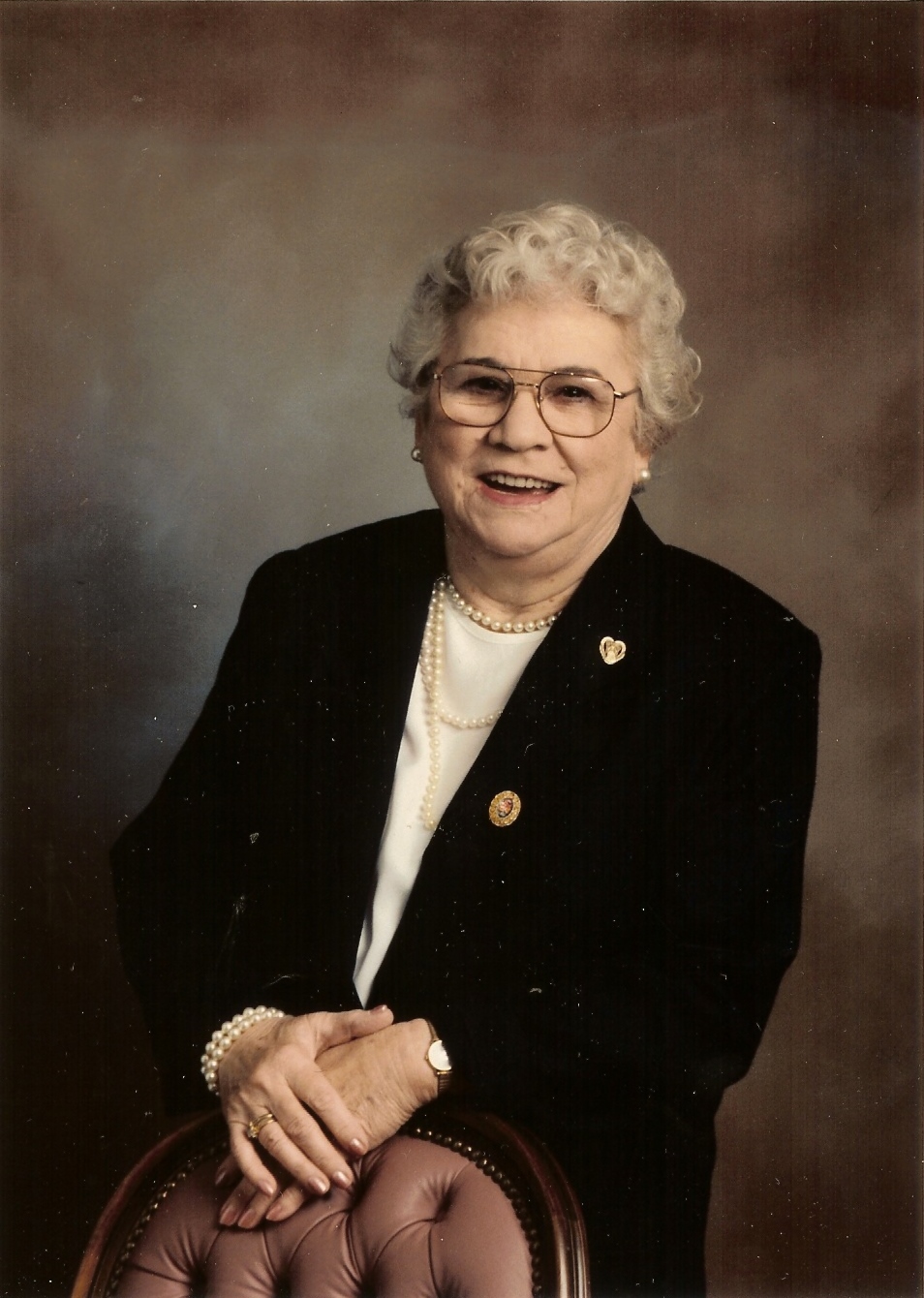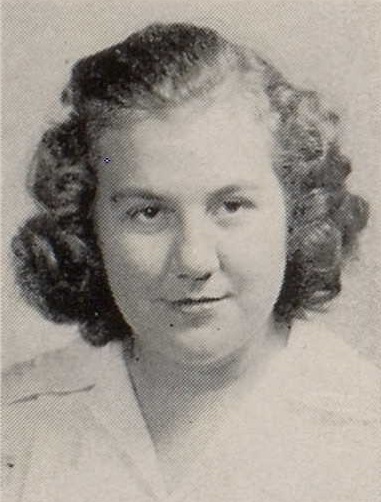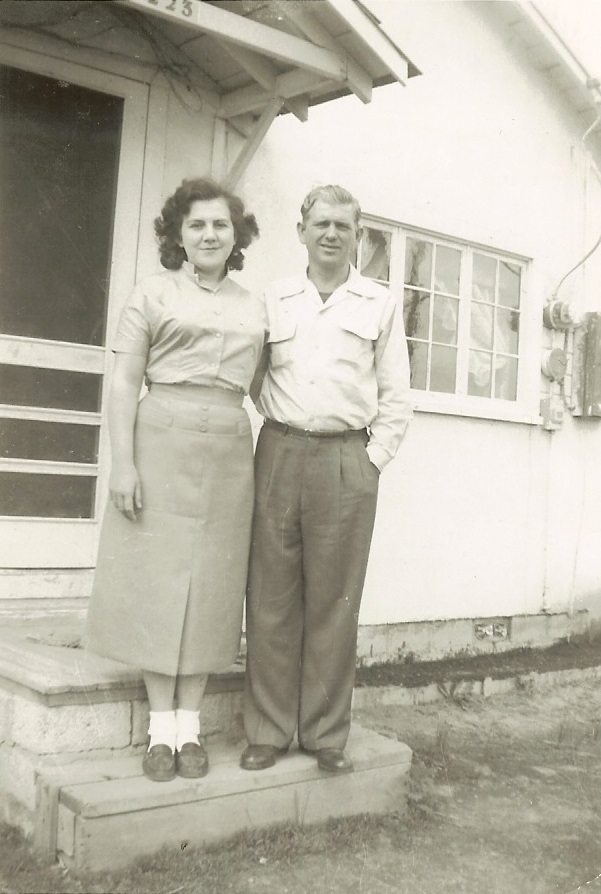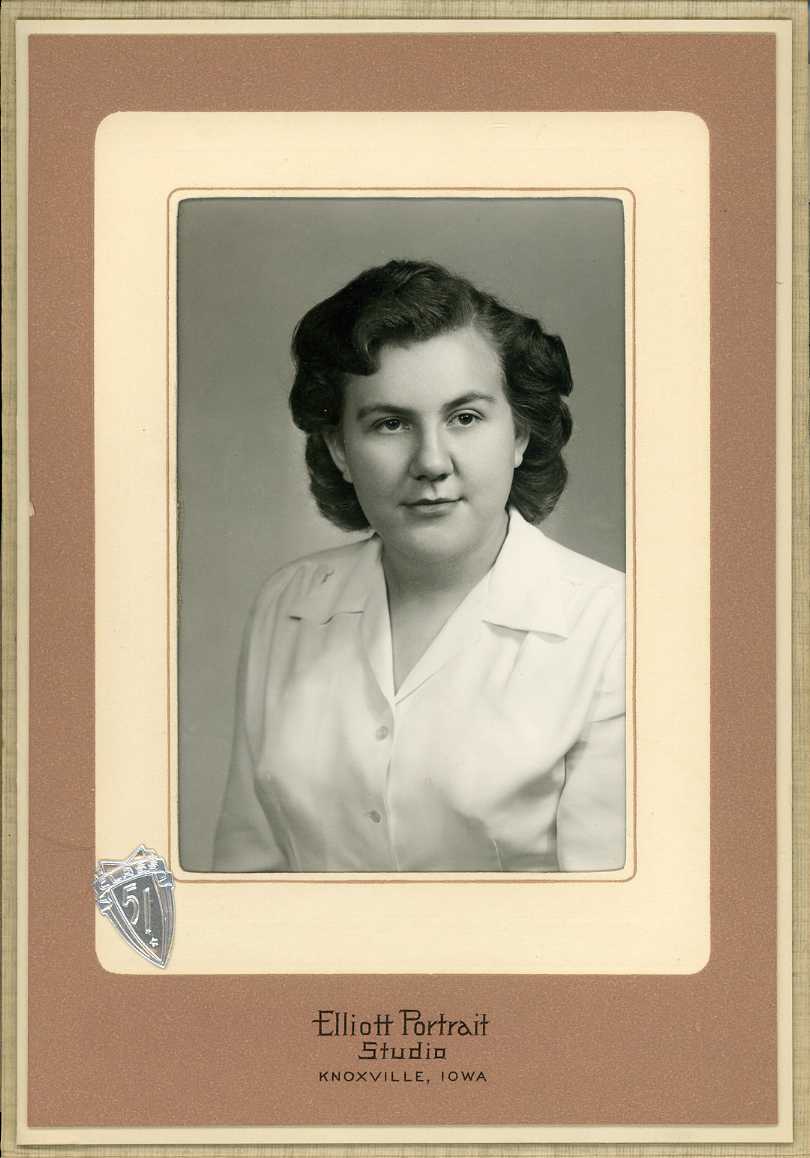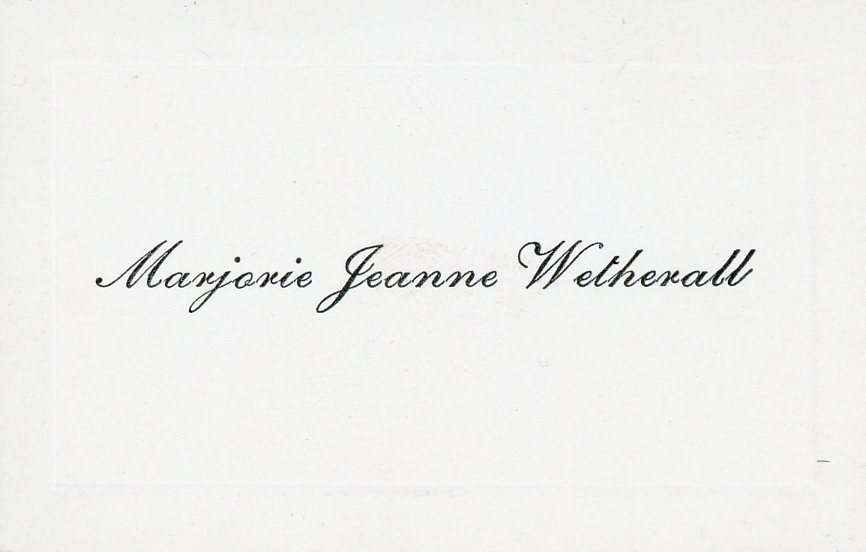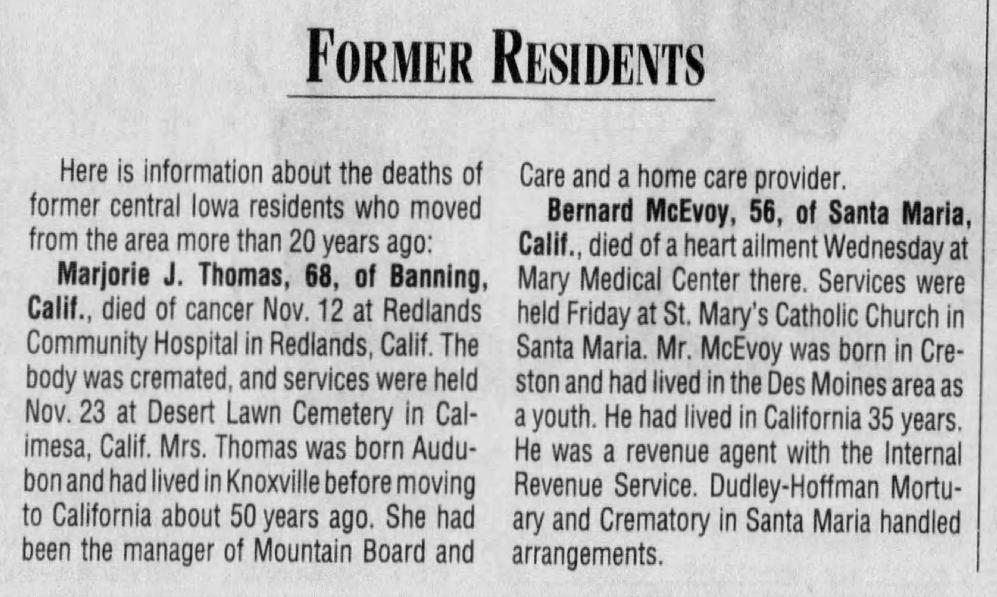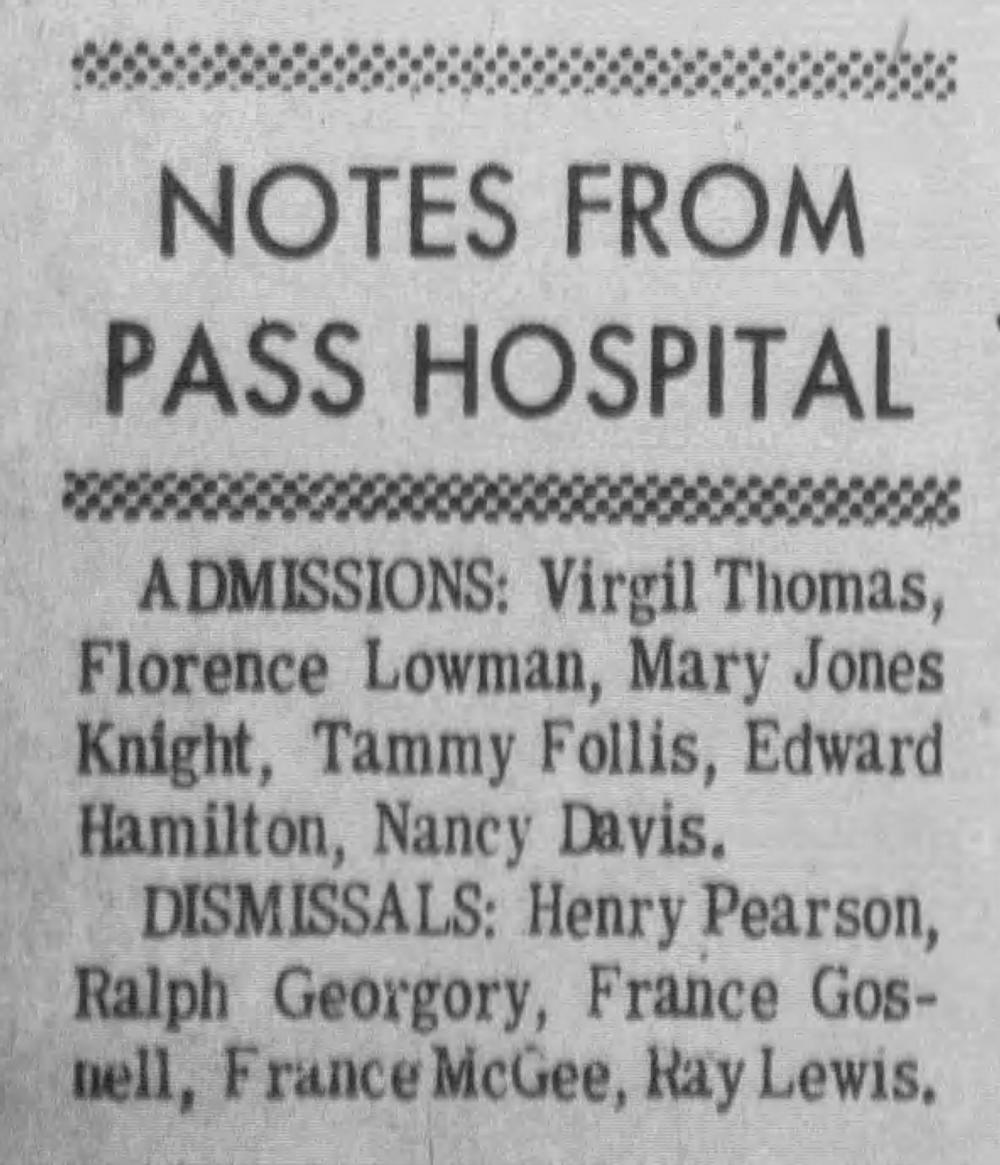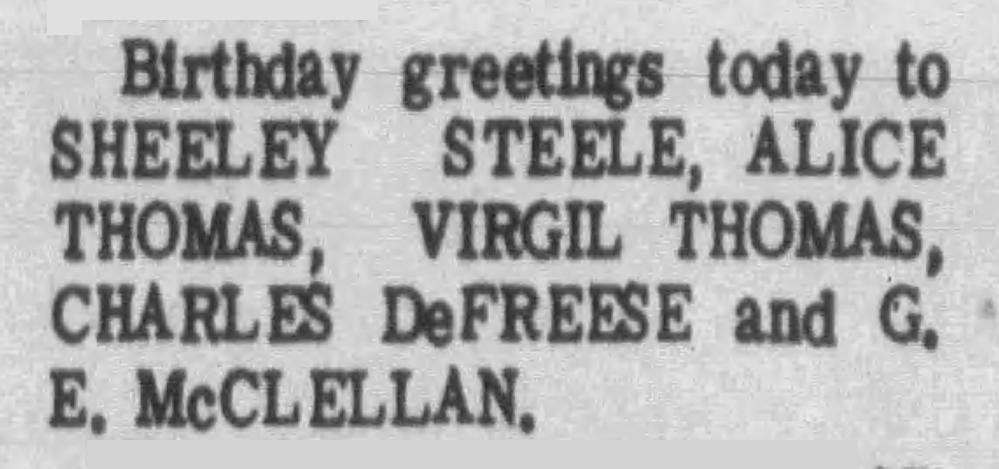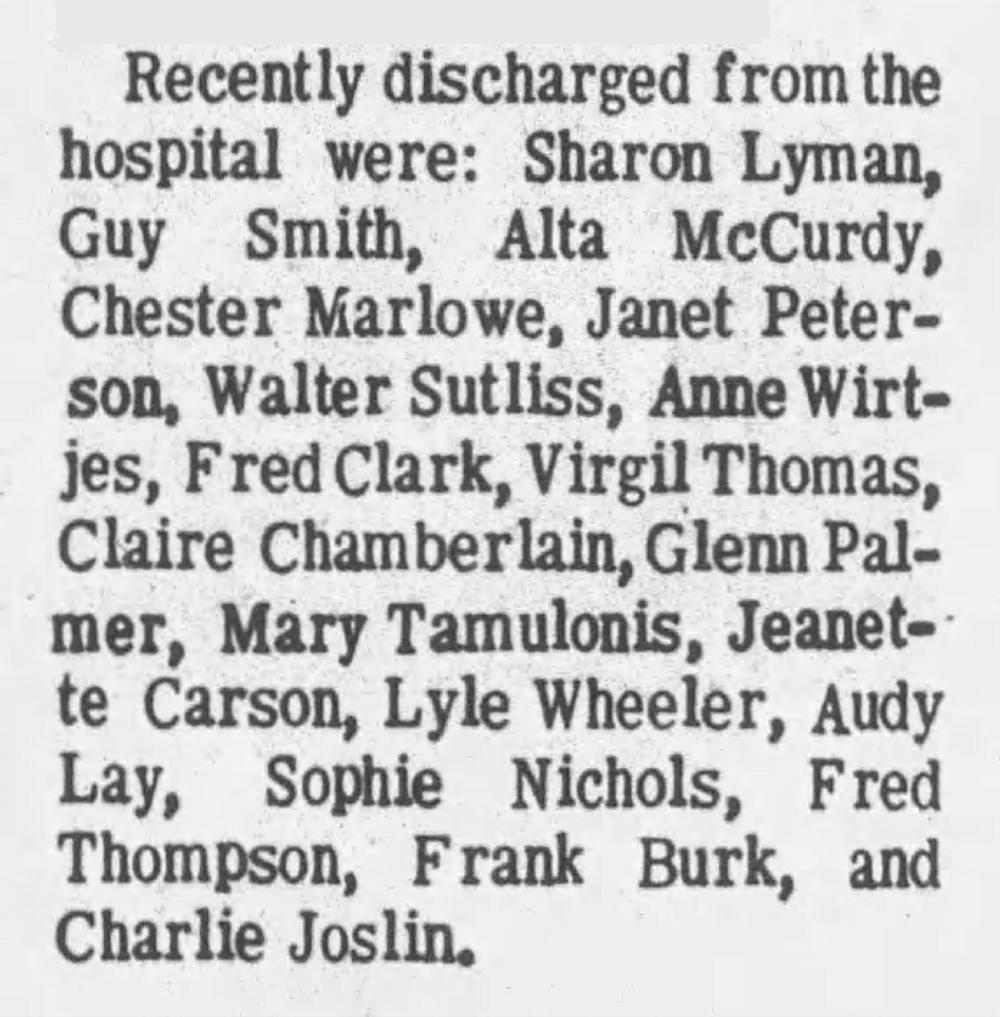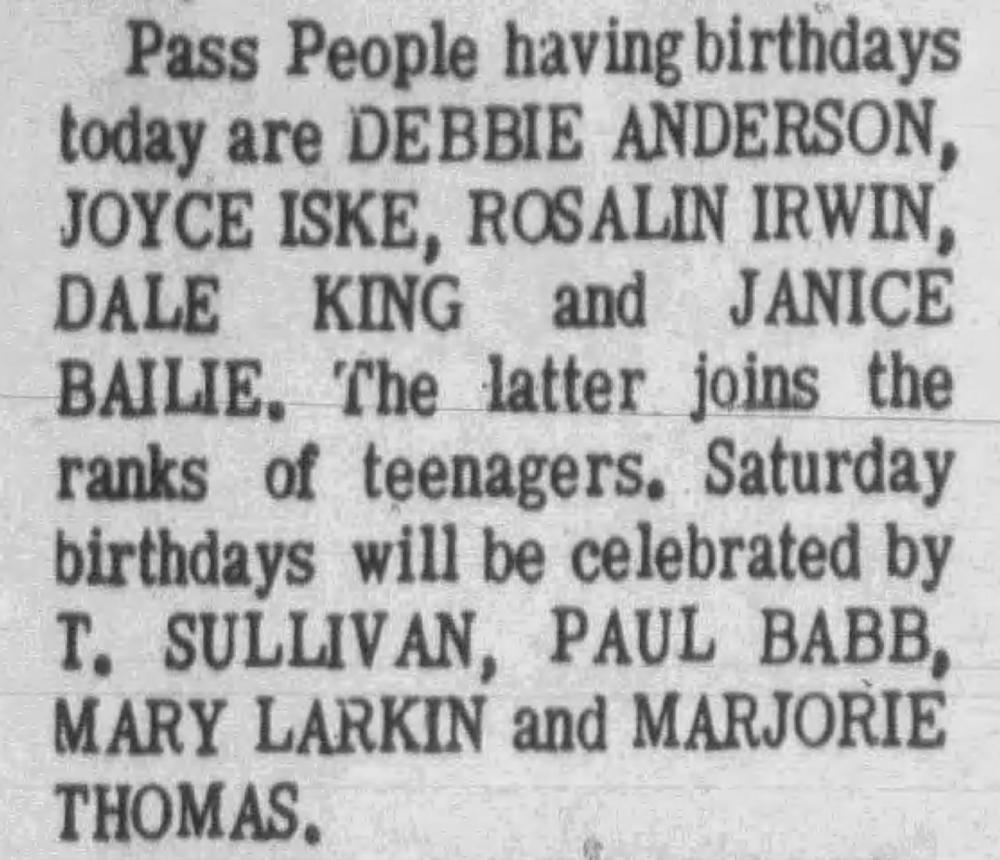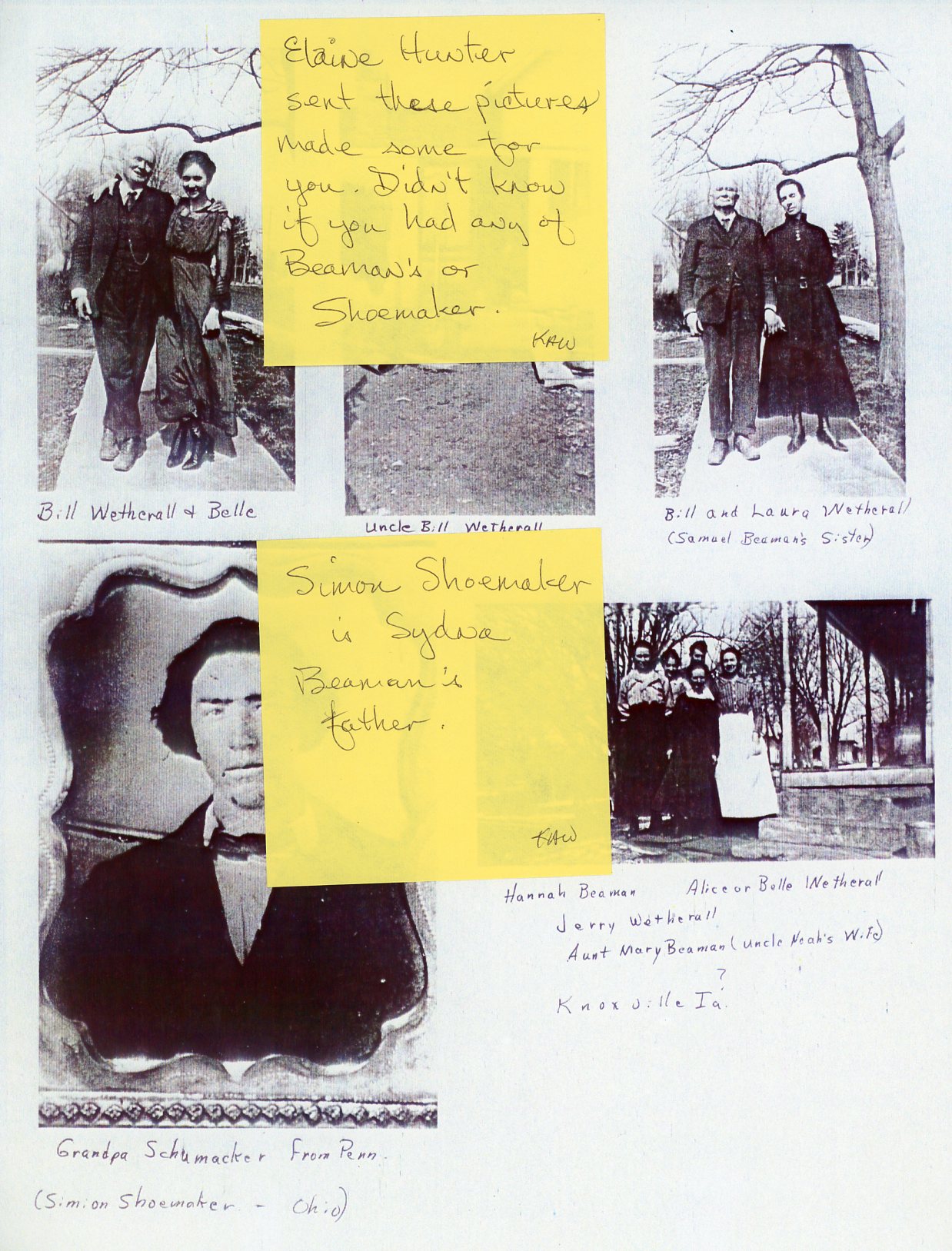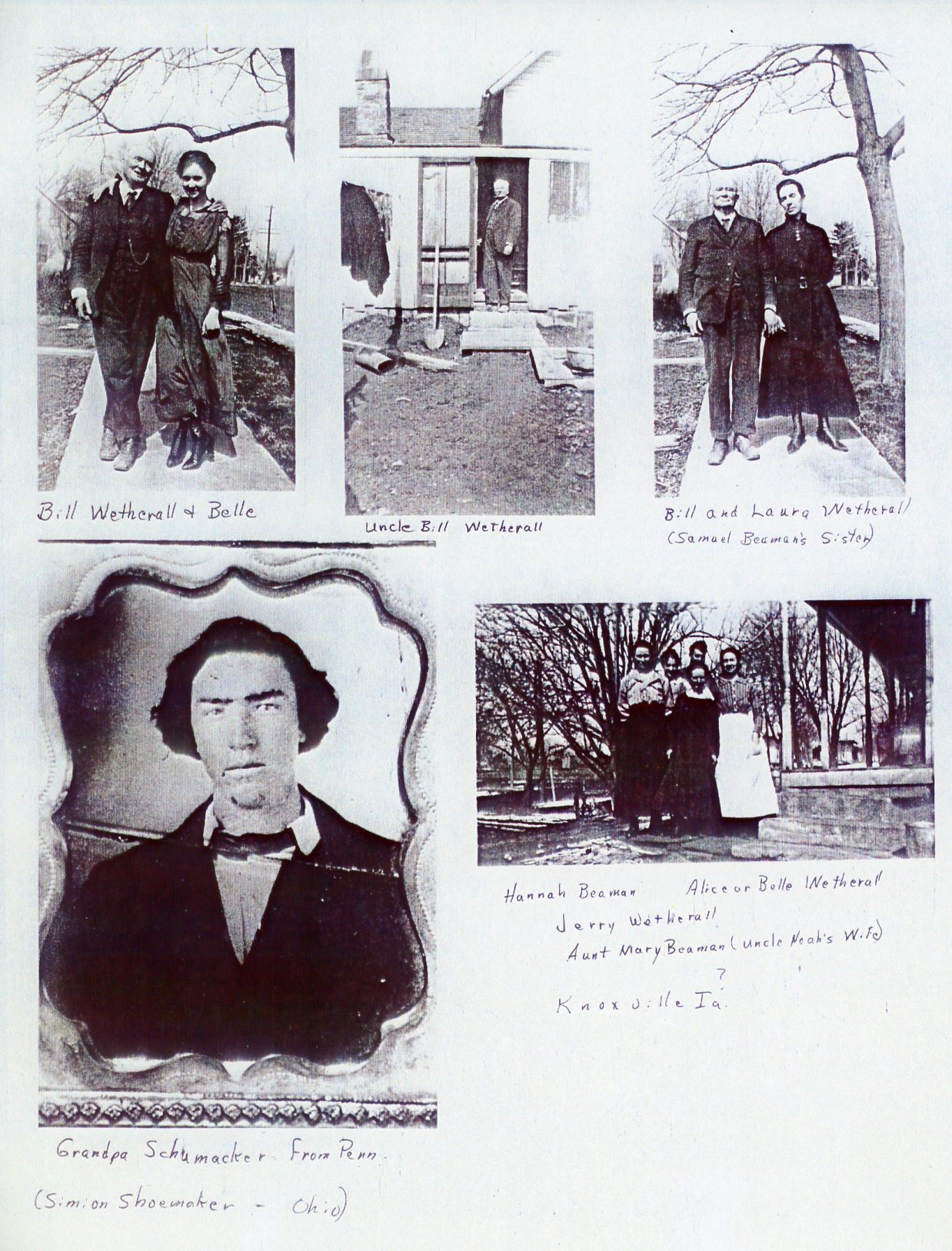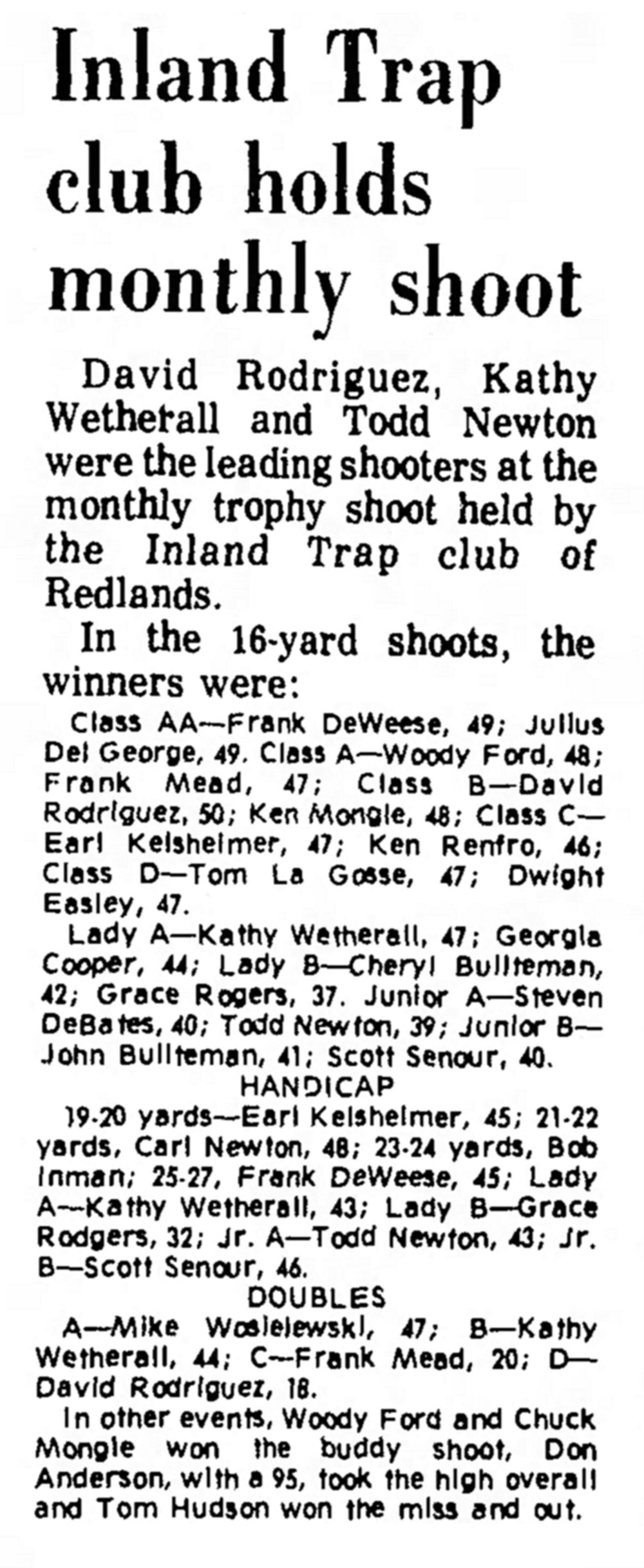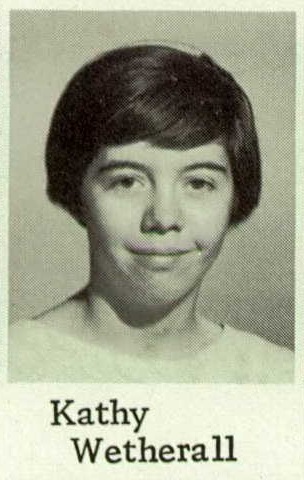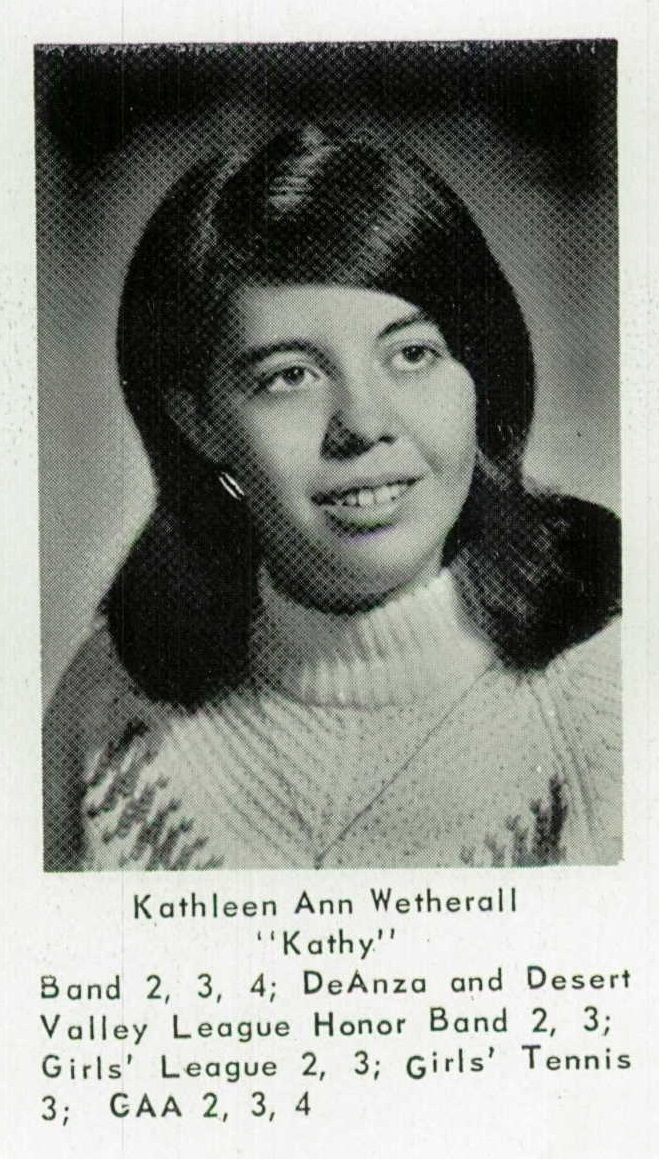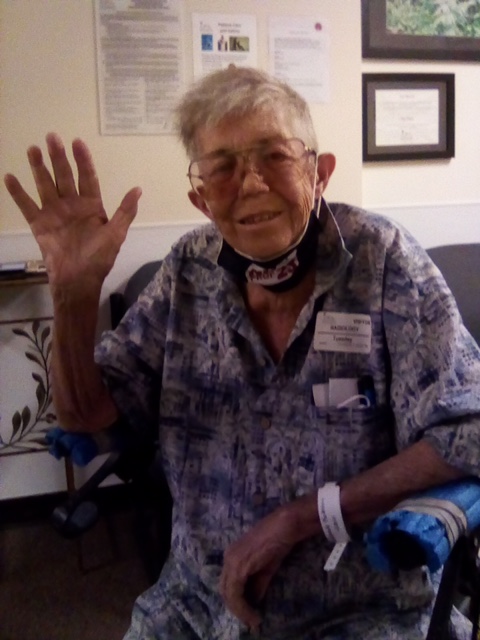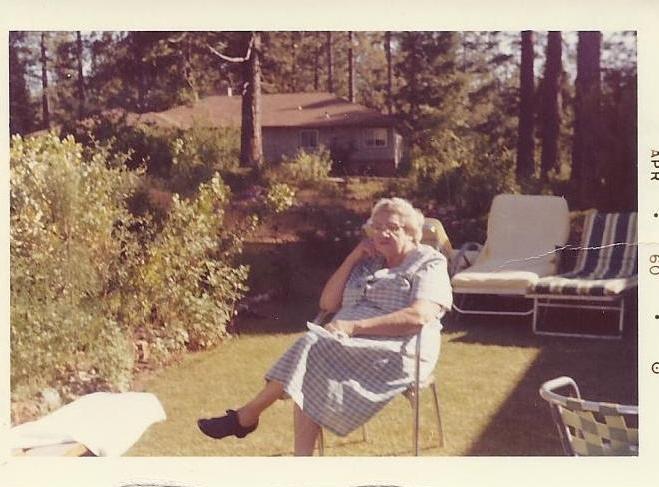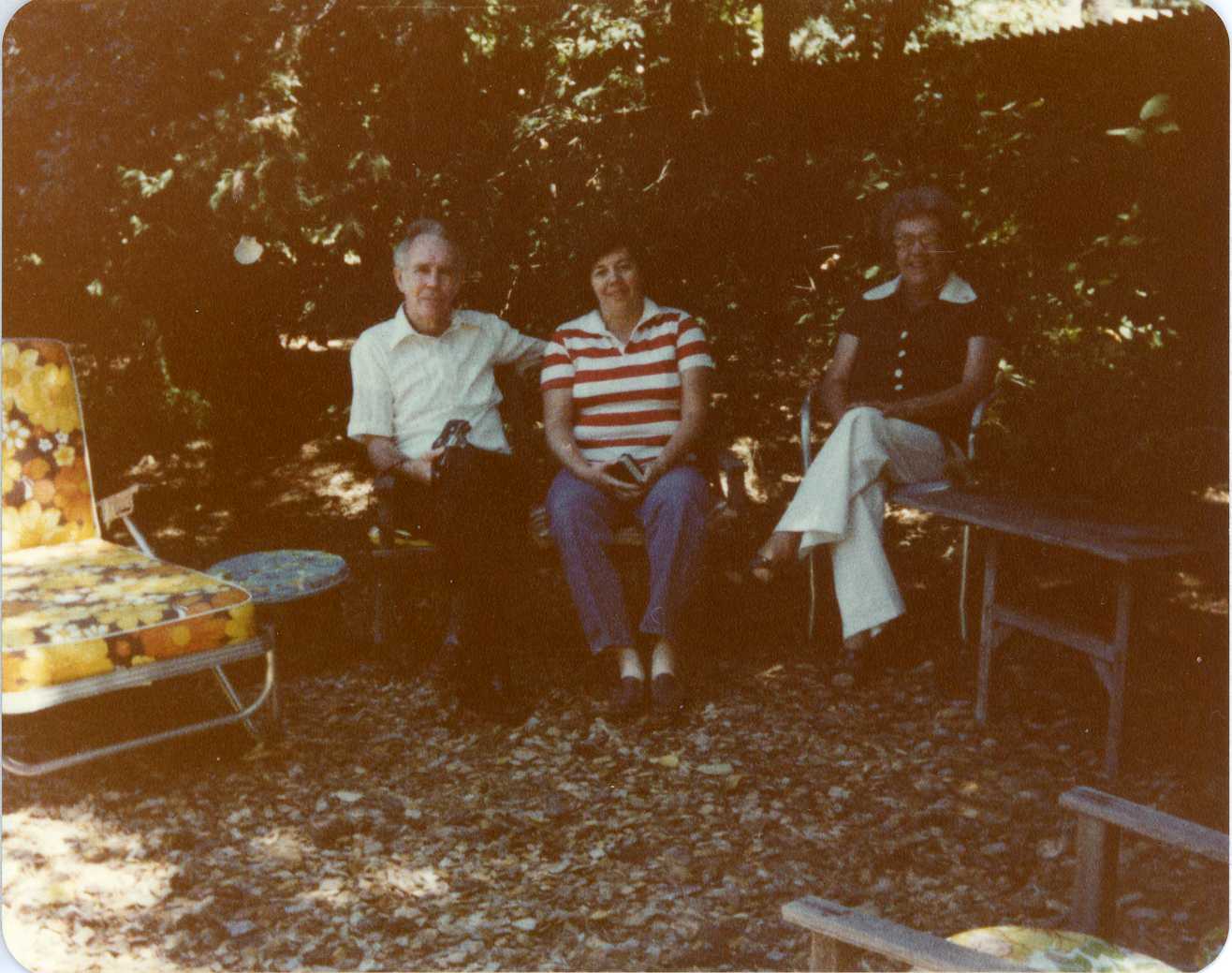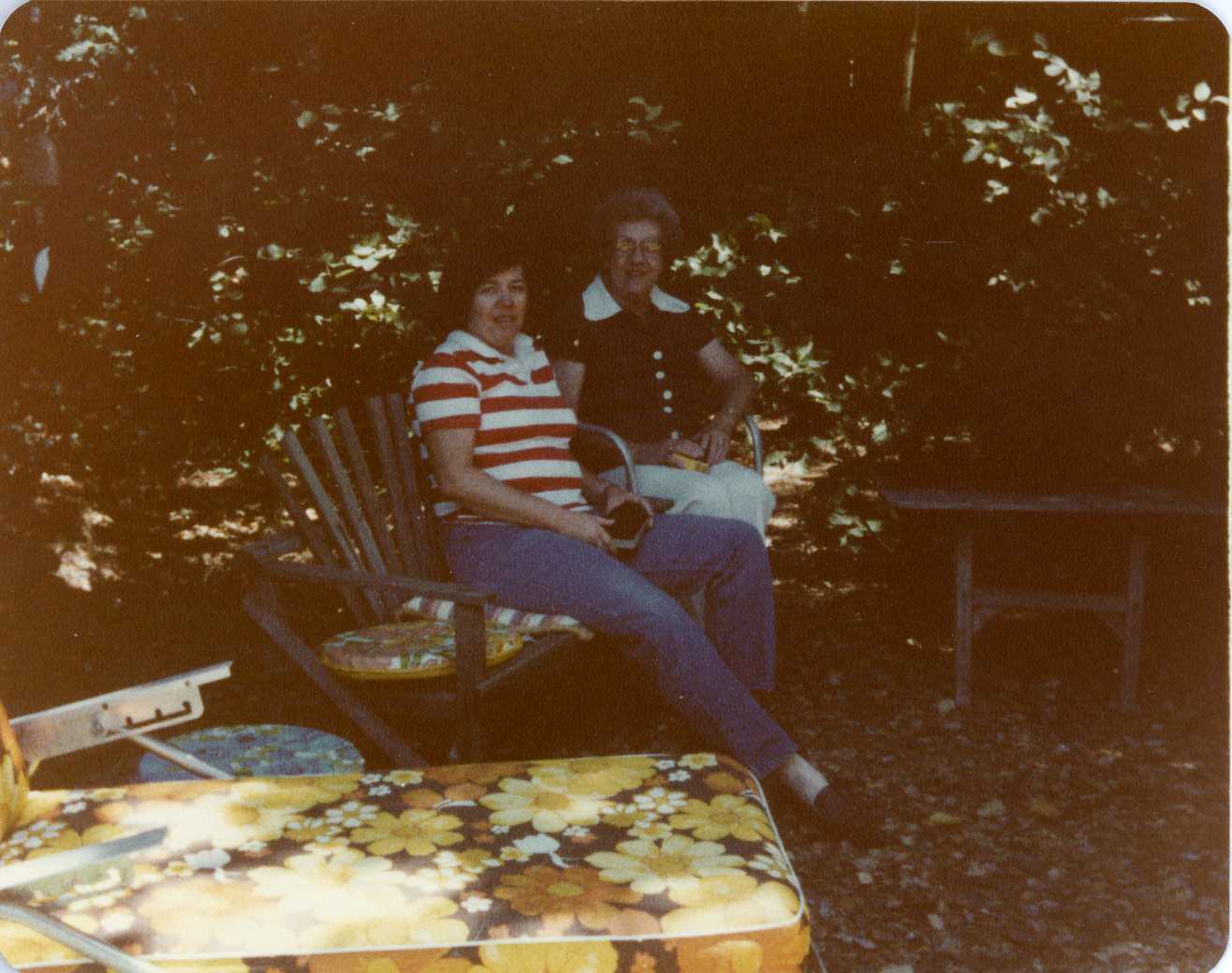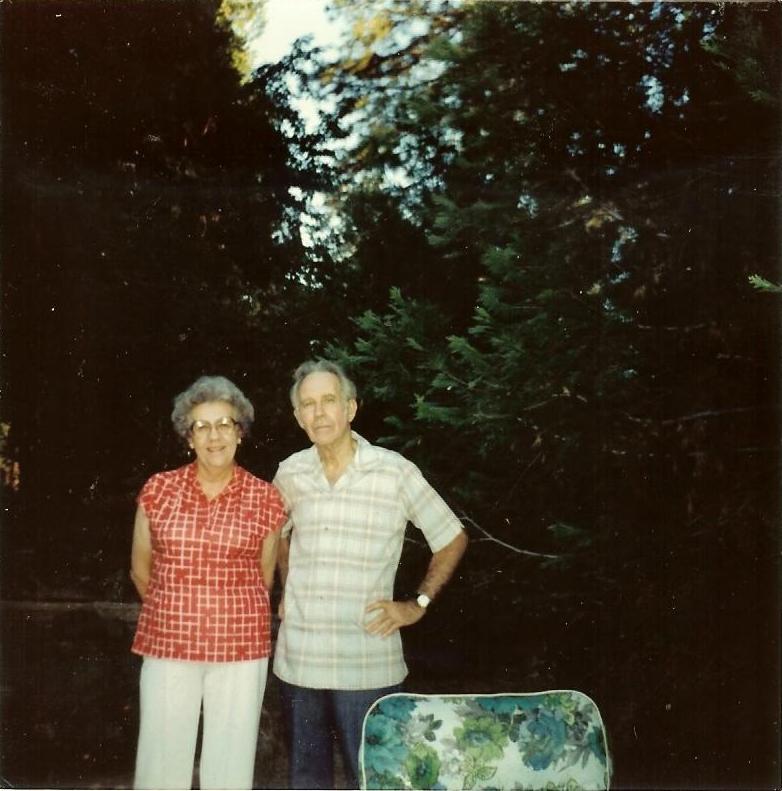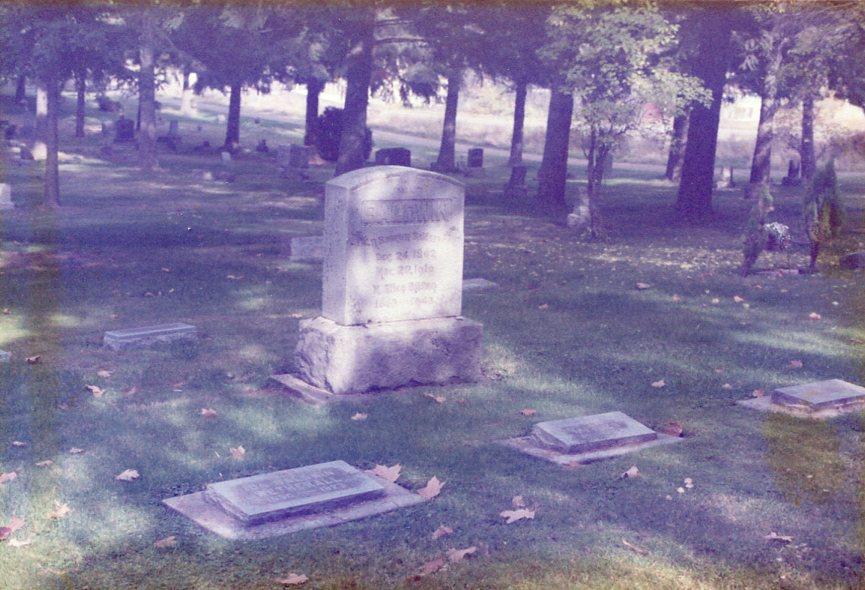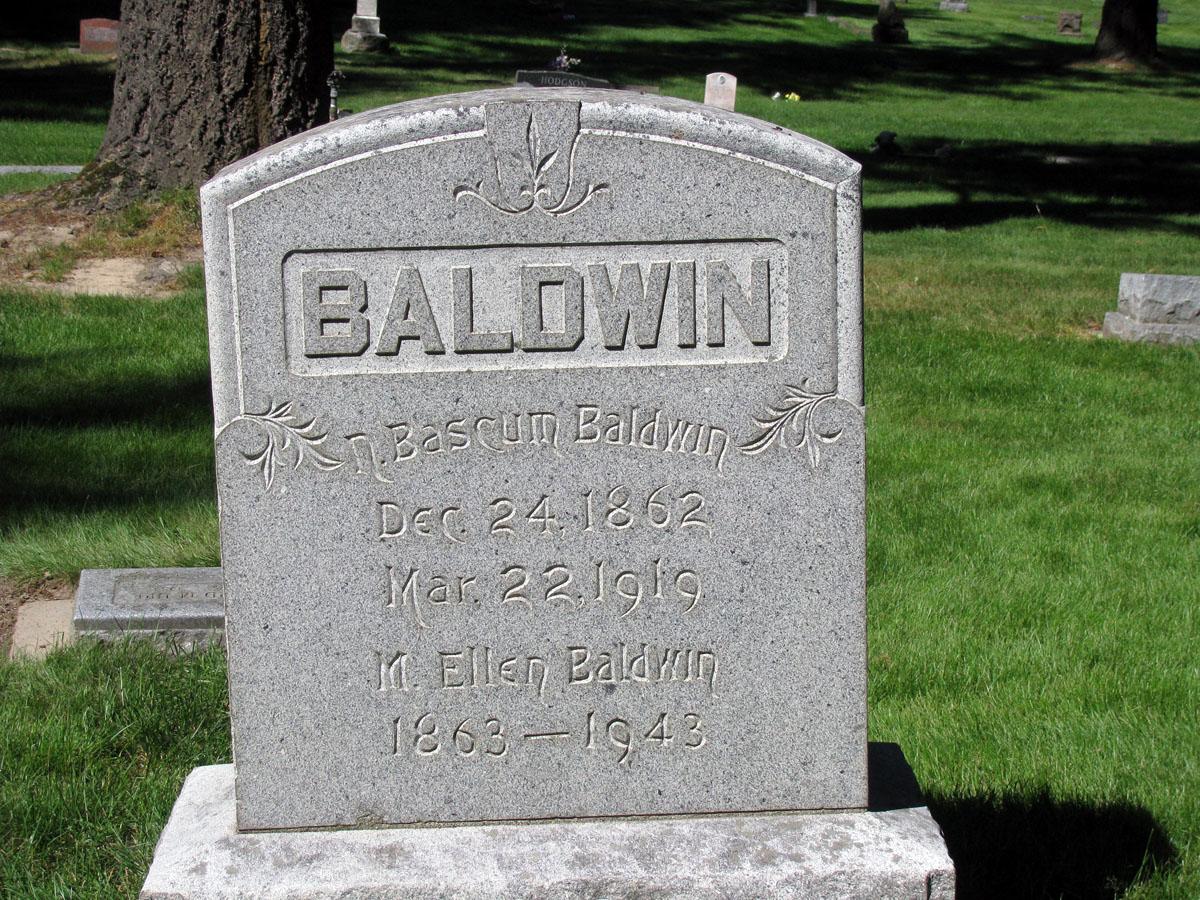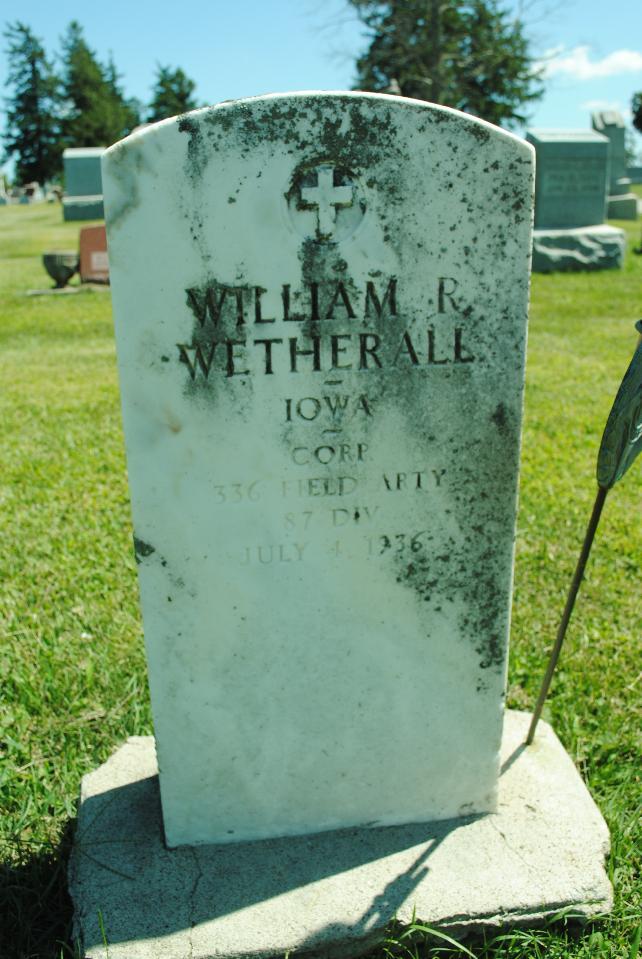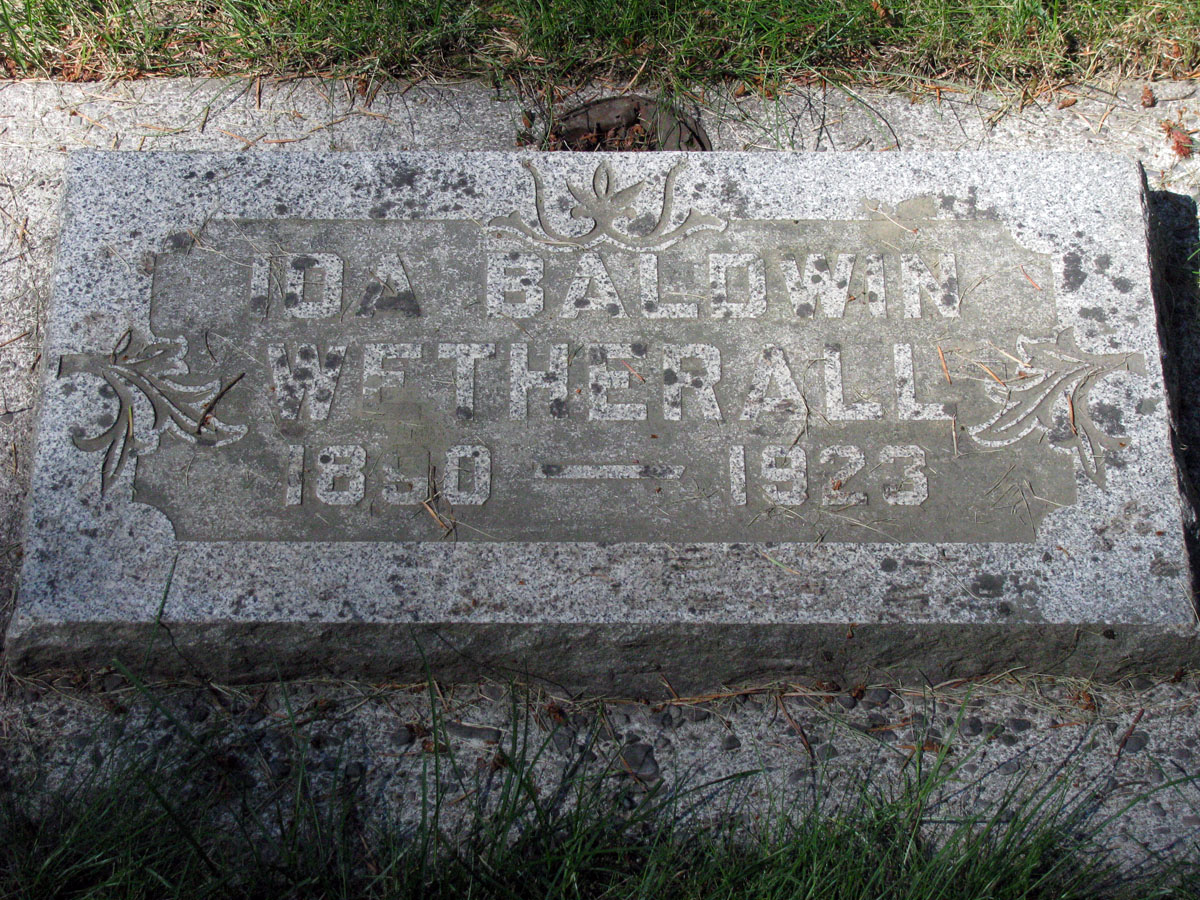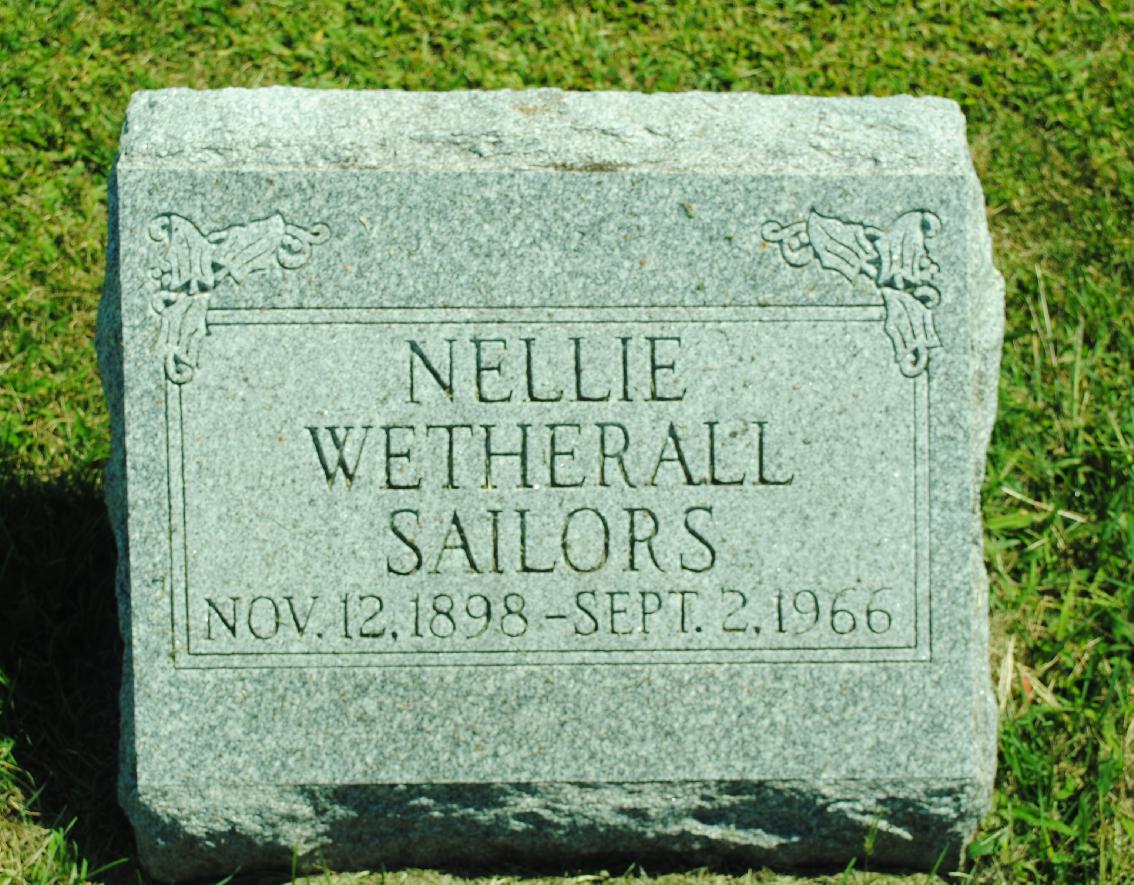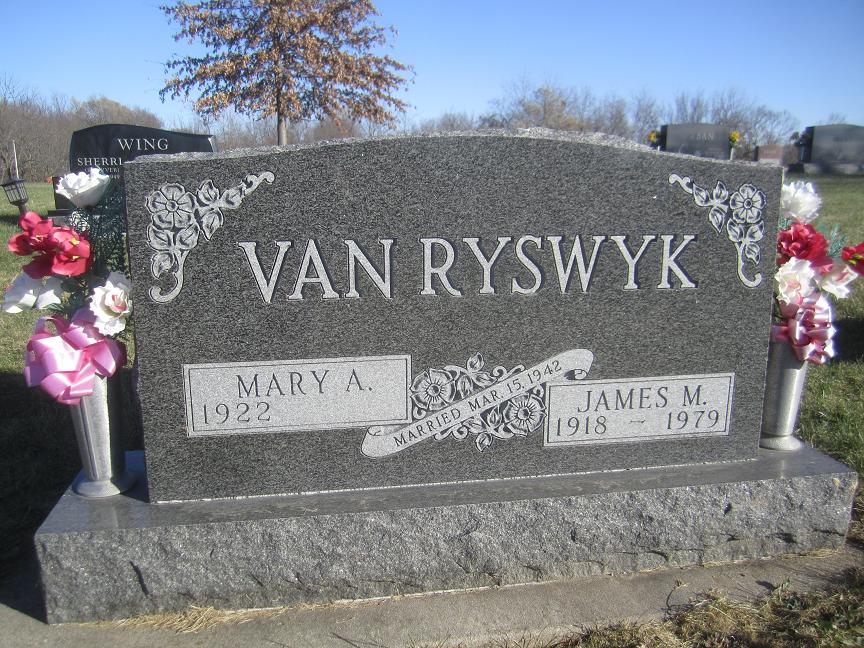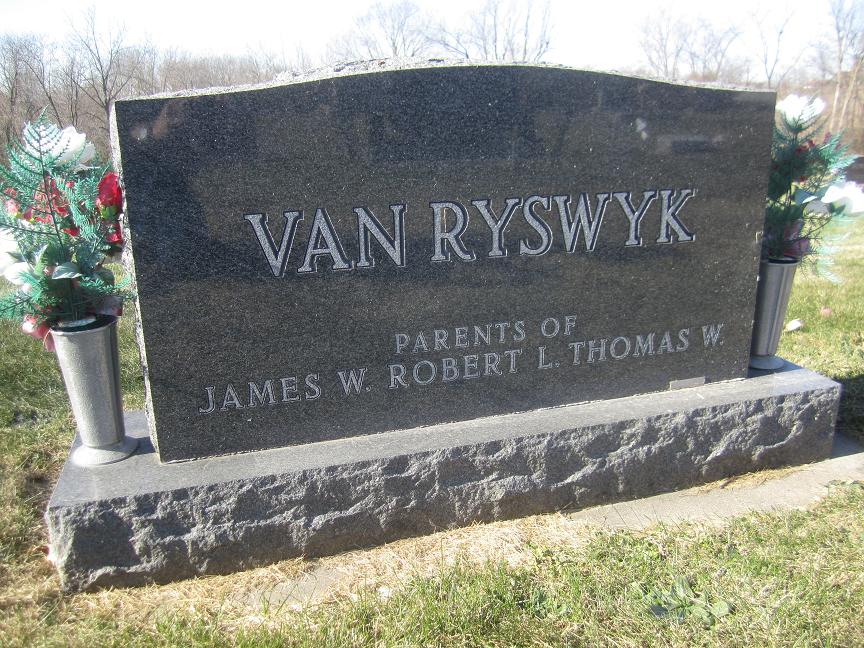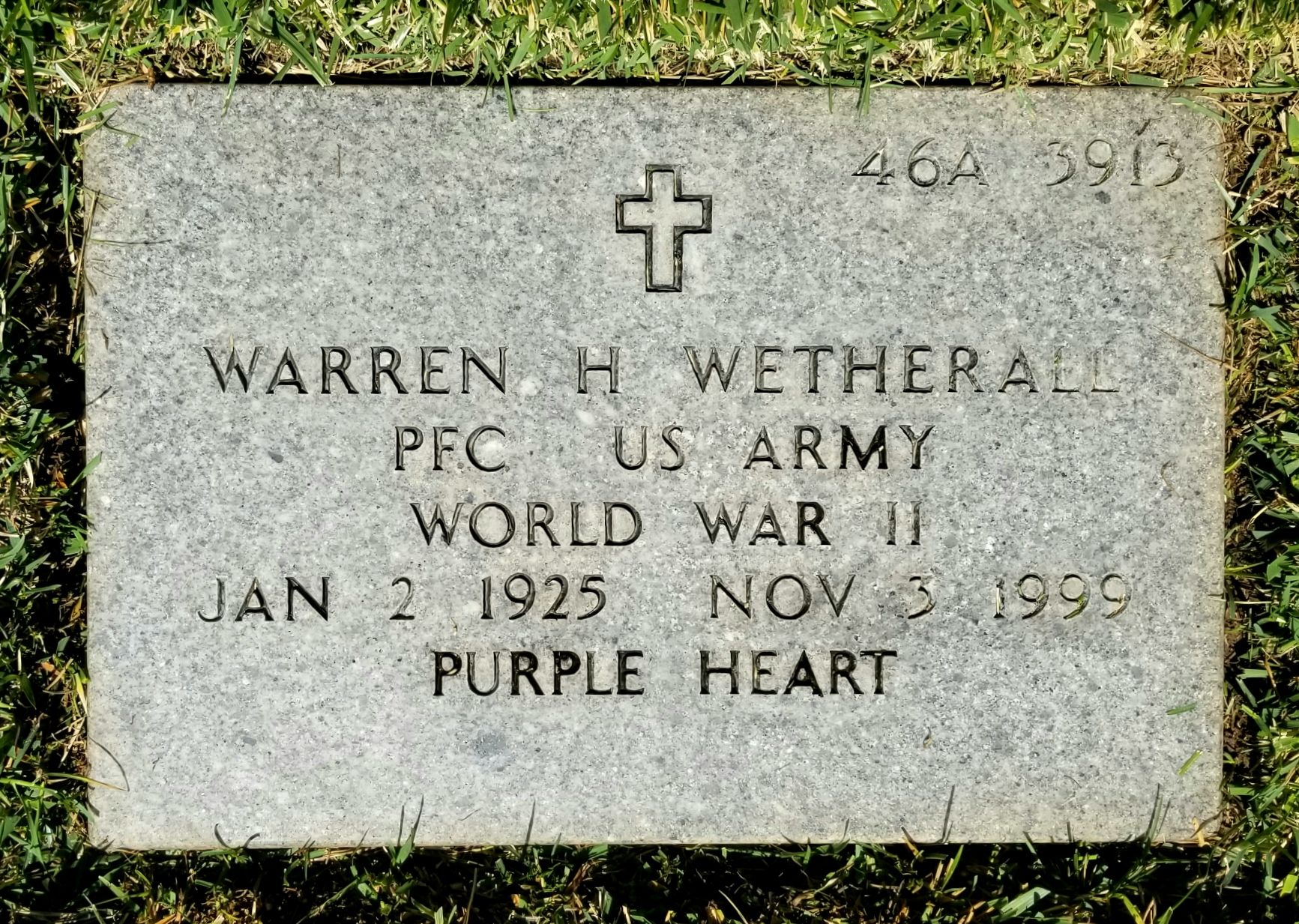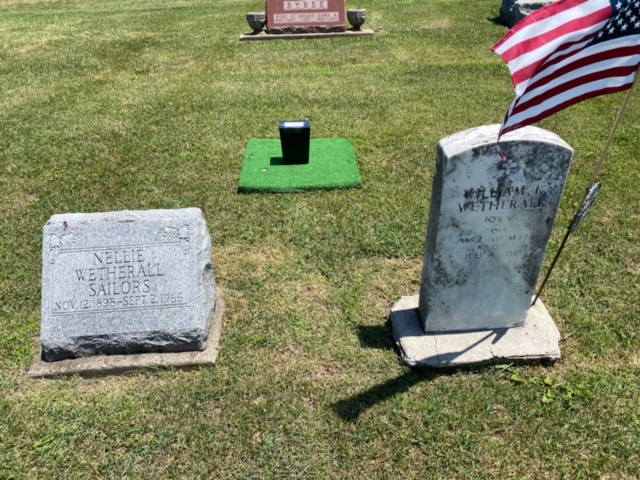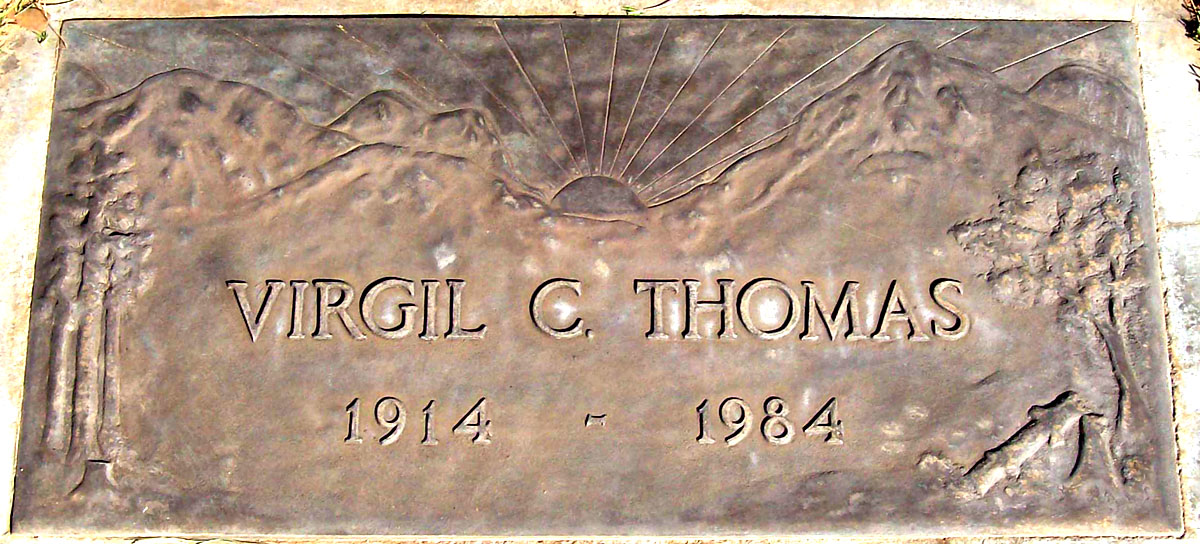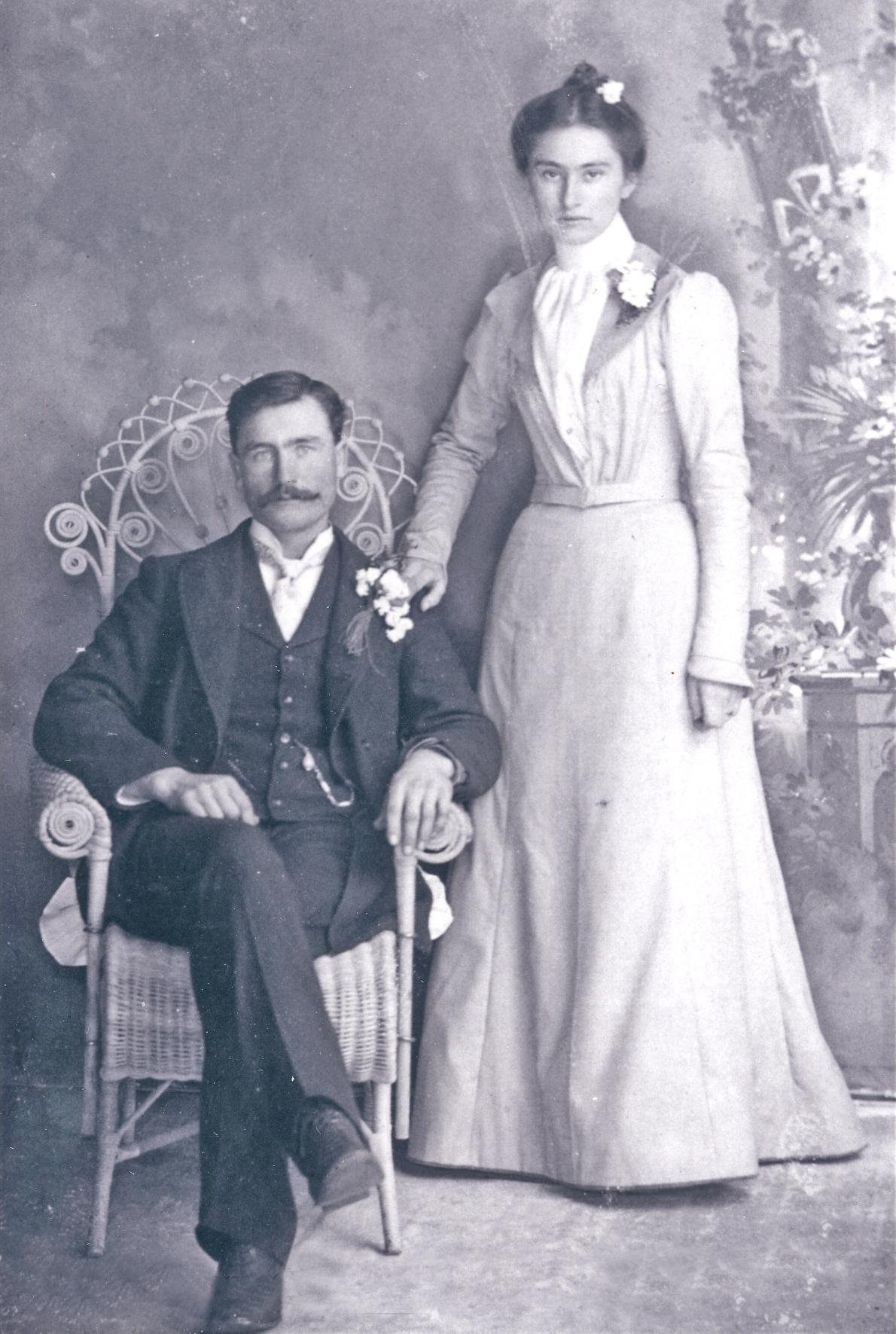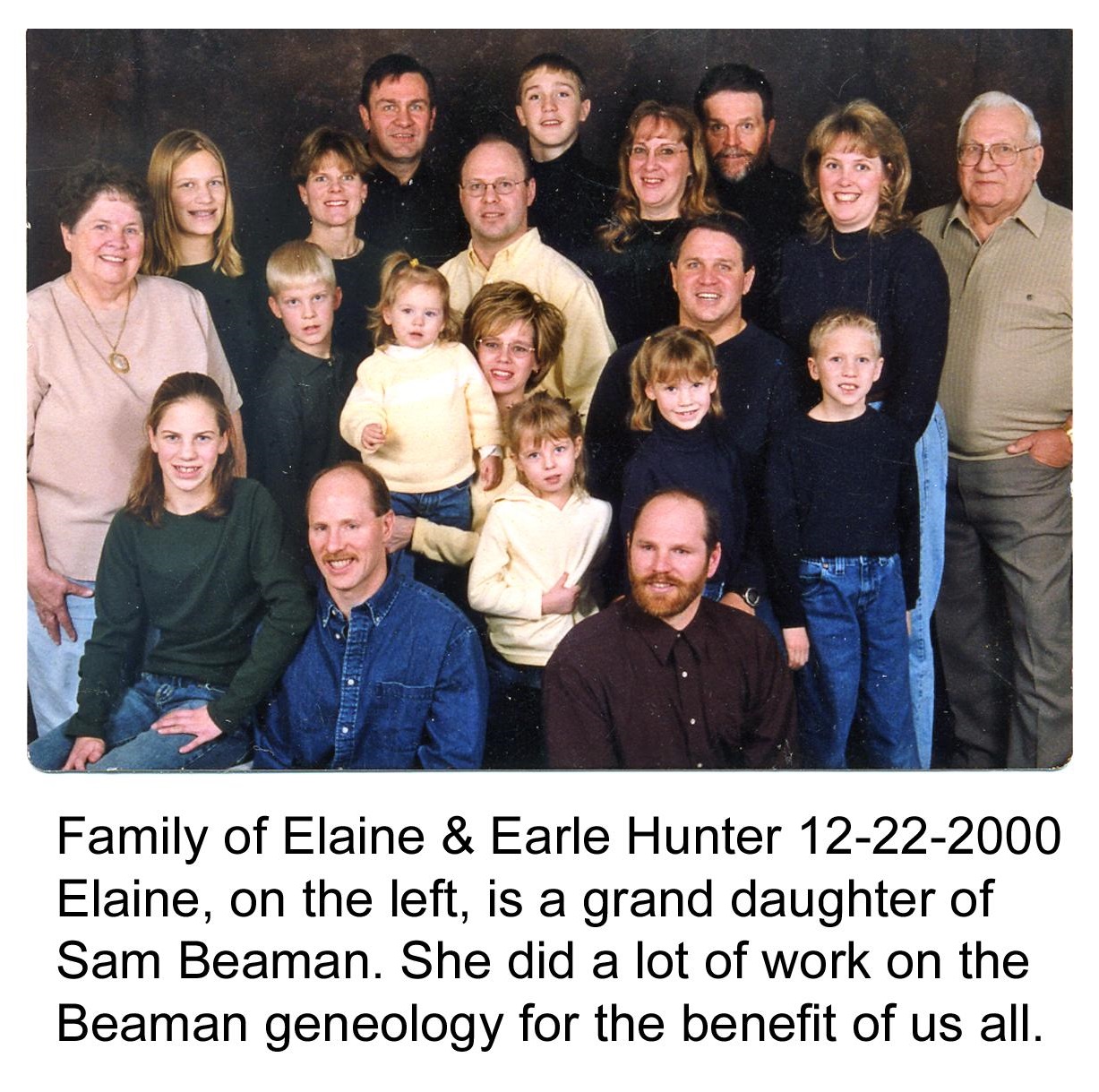2. Wetherall-Baldwin-Van HoutonChildren of William Riley Wetherall and Ida Mae BaldwinChildren of William Riley Wetherall and Nellie Marie Van Houton
|
|||||||||||||||||||||||||||||||||||||||||||||||||||||||||||||||||||||||||||||||||||||||||||||||
William Riley Wetherall (WRW)William Riley Wetherall was the second child and first son of William Franklin Wetherall (WFW) and Laura Belle (Beaman) Wetherall. He inherited the name "William" that his paternal grandfather, William Edwin Wetherall (WEW), appears to have inherited from his own father. The "Riley" namesake is uncertain, though possibly it is someone on Laura Belle's side of the family. But who was Willim Riley? His son, William Bascom, told this writer, his own son William Owen, very little about his father, except that he was a printer, was a good man, and did his best under the circumstances. The questions I should have asked my father didn't occur to me until after he died, when I discovered that Mary Wells, the oldest of his four younger siblings, was still alive in Carlisle, Iowa. Born Mary Arleen Wetherall, Mary was Mary Van Ryswyk when I met her and many other Wetherall relatives at the 1958 Wetherall family reunion in Knoxville (see photographs on Wetherall-Beaman family page). This was the only trip the California Wetherall-Hardman family would ever make back to Iowa. My interests then, at 17, were not in family history. I remember being overwhelmed by all the unfamiliar names and places, which we had never heard of before, and would hear little or nothing about afterward. Only in hindsight do I realize how difficult it was for my father to make that trip in 1958, three decades after he had left Iowa -- and how difficult it must have been for him to never make another.
William R. Wetherall the printerAs soon as I saw the above photograph, I knew I was looking at a composition table in a print shop. The father of a boy I ran around with in the last neighborhood I lived in when growing up in San Francisco had a print shop in his garage. I was enrolled in the printing class at A.P. Gianinni, the Sunset District, junior high school, at the time we moved to Grass Valley in the spring of 1955, and that summer I had a part-time job packaging Christmas cards at the print shop partly owned by my father's law partner. And in high school, I spent some time in the press room of the local newspaper, where a classmate worked. If you had asked me, then, what I wanted to be when I grew up, I well might have said a printer. At the time, I knew nothing about my father's family, much less that his father had been a printer by trade. Even when sorting out the family photos the first time in the 1970s, and the second time in the 1990s, I wasn't sure who the man in this photo was. Could he have been my dad's father? My mother, who took the time to answer such questions, thought it might be but she wasn't sure. My father, when finally I got him to comment on the pictures of people on his side, said it was his father, probably in the early 1930s, but that's as far as he could speculate. My mother had never met her father-in-law, who had died a couple of years before she and my father married. And as children, we never met his family until 1958, and then only once. If you wonder what those hammers are for -- the ball-peen hammer in the foreground, the mallet closer to hand -- they are for pounding, of course. Once the type has been locked into a chase, the faces of all the pieces of type need be leveled so that they are flush with the plane of the printing -- the plane where the paper and type, after inking, meet -- on a flat-bed press or letter press. You begin with the text of the matter to be printed, and a design -- fonts, sizes, layout and the like. You select type from a case and set it in a composing stick, letter by letter, including spaces and punctuation, and you break and space lines as required. The type in the composing stick is then transferred to a galley to be tied up -- literally with a string after confirmation that everything is properly configured. At this point, proofs can be pulled from the tied-up type and changes made as required. The tied-up parts of a larger page are placed into a chase, the metal frame that is mounted on the press. When the page is laid out or made up in the chase, the parts or blocks of type are untied, and various kinds of spacers and locking devices are inserted between the blocks in order to lock up the type in the chase. At this point, too, proofs can be pulled and changes made. Then comes the pounding. The proofs will show which pieces of type are too high or too low relative to other pieces. The compositor places a piece of wood called a "planer" on the type to protect the type faces, and a mallet is used to pound on the board until the faces of all the type are even. That's what I picture my paternal grandfather doing in this picture. And I imagine he enjoyed his work, in the manner that most tradesmen seem to derive a certain kind of pleasure from their vocation. Mary Well's account of her fatherHere is how Mary Wells, at 90, conveyed to me her recollections of her father, William Riley Wetherall, through Mary Sue Van Ryswyk, her daughter-in-law. Mary Sue and her husband, Robert Van Ryswyk, Mary's second son, have been caring for Mary at an assisted living facility in Carlisle, where they also live. Mary's remarks, in Mary Sue's words, were in response to questions I had asked Mary about her childhood memories. What was her father like? Did he come home from work with ink on his fingers? What was her mother Nellie like? Where and how did William R. die? How did the family survive the Depression after his death? And what did she remember about her older brother, William Bascum Wetherall? The following account is a slightly reformated and edited version of email received from Mary Sue on 28 August 2013. The [bracketed] clarifications are mine.
Early memories of William Bascom WetherallWilliam B. Wetherall lived with his father and Nellie, and with three of his four younger siblings, while going to East High School in Des Moines from 1924-1928. Mary's recollections of "hearing from her older brother" refer to the period after Bill left Iowa to go to college in Idaho. during which he sent kept in touch with his Iowa family through letters and even photographs. The well-worn photograph to the left survives in Mary's collection. It was probably taken during the summer of either 1935 or 1936 when Bill was working in blister rust control in a Civilian Conservation Corps (CCC) project in white-pine forests in either Idaho or Montana. In 2010 he recalled that he had been working in blister rust eradication in Montana when his father, William Riley, died on 4 July 1936. He wrote this on the back of the photo to the right (Mary Sue Van Ryswyk, email, 19 August 2013). (There's) charcoal (around) my eyes. It helps break the glare of the sun. No fooling'. Did Mary remember the days they lived together? Yes, according to her daughter-in-law Mary Sue Van Ryswyk (email, 9 August 2013). Mary said she can still remember your dad graduating from East High School [in Des Moines in 1928] and the day he left for Idaho. She can still see his image as he walked down the lane and she cried to see him go. Separation experiencesOur earliest memories are likely to be separation experiences. I clearly recall -- more vividly than any other early experience -- the day my father left me with a toy truck and a bag of Graham Crackers in the play yard of Notre Dame des Victoires (N.D.V) on my first day of kindergarten. The school was at 566 Bush Street between Grant and Stockton, and he would drive me there on his way to work until the beginning of school bus service from the avenues in the Sunset district on the other side of the city where we lived. The year was 1945 and I was 4 years old. I don't recall crying, but I know I felt very tense and anxious. My daughter Saori was delighted to be left alone at kindergarten. She was the sort that wandered off by herself at zoos and in department stores. But my son Tsuyoshi found the experience of watching his mother walk away and leave him to his own resources with a bunch of strangers a bit traumatic. Tsuyoshi like his father, and his father like his father, has shown symptoms of sociophobia. Landmarks of William Riley Wetherall's lifeMy object in charting events in the life of William Riley Wetherall (WRW), in the form of a timeline, is to collate elements of stories told about them by his children, beginning with William Bascom Wetherall (WBW) in 2010 and 2011, and then Mary Arleen Wells (MAW) in 2013, with details about his life gleaned from public records and other documents. WRW frequently moved, especially while living in Des Moines from the early 1920s to the early 1930s. His various addresses are underscored in the following chronology to facilitate understanding his movements according to evidence in census reports, on selective service registration cards, newspaper articles, and local directories. Events related especially to the life of Ida Mae Baldwin are also included in this timeline, as she is at the heart of many of the mysteries that remain to be solved about their brief time together. William Riley Wetherall chronology 1890-05-02 William Riley Wetherall is born in Knoxville, Marion County, Iowa, to William Franklin and Laura Belle (Beaman) Wetherall. See Table 4 and following for details. 1891-03 Ida Mae Baldwin is born in Kentucky to Newton Bascum and Martha Ellen (Steele) Baldwin. See Table 5 and following for details. Ida's son, William B. Wetherall, recalled in 2010 that she was born in Corbin, Kentucky in 1888. Her death certificate states she was born in Kentucky in 1888. Her tombstone states she was born in 1891, and the 1900 census gives her month and year of birth as March 1891. Both the 1880 and 1900 censuses show her parents to have been farming in Pond Creek, Jackson County, Kentucky at the time. 1900 census The June 1900 census shows William Riley, age 10, residing at 803 Pleasant Street, Knoxville, Iowa, in a mortgaged home owned by his father, while Ida Mae, age 9, is living in Pond Creek, Jackson County, Kentucky on a farm owned by her father free of mortgage.
1905-1906 Ida Mae Baldwin and William Riley Wetherall appear to have met in Knoxville while the Baldwin family was living there while making its way west from Kentucky. See Ida Baldwin below for my reconstruction of the boy-meet-girl story. 1908-1910 Ida Mae Baldwin attends vocational schools in Spokane. City directories show her at Northwest Business College in 1908 and at Blair Business College in 1909. In 1909 she is living with her parents.
The Baldwin family was residing in Spokane, Washington in 1908 and 1909, but by 1910 they had moved to St. Maries, Idaho. Ida, however, appears to have remained in Spokane for a while after her parents moved to St. Maries, presumably to finish her schooling at a business college. WBW's recollections In 2010, William B. Wetherall, their son, recalled a number of things he remembered hearing about his parents in their early years. Considering that he must have heard about his mother's life when he was older, after her death, either from his father or later from Ida's older sister Sadie, his memory was remarkable. Ida's parents WBW said that his maternal grandfather's name was Nathanial (he thought) Bascum Baldwin, the son of John Baldwin and Margaret Howard. He gave his maternal grandmother's name as Martha Ellen, the daughter of Jonas Steele and Elizabeth Grubb. All these names are substantiated by other evidence -- except that "Nathanial" turns out to be "Newton". N. B. Baldwin WBW said that N. B. Baldwin ran a general merchandise store among other businesses. He had in his possession a business card which stated "N. B. Baldwin / Dealer In General Merchandise / St. Maries, Idaho / St. Maries at confluence of St. Joe and St. Maries Rivers". Ida Mae's schooling WBW recalled that his mother had lived in Washington for a while before settling in St. Maries. He said that after moving to St. Maries, she graduated from Blair Business College in Spokane and won honors for her calligraphy. He added that she was a specialist in the Palmer Method of penmanship. The names of the places and school are substantiated by other evidence. But the same evidence suggests that Ida remained in Spokane to complete her schooling after her family moved to St. Maries. The two towns, about 90 minutes apart by car today, weren't commutable in Ida's time. William Riley and Ida Mae WBW believed his father had been working as a printer in St. Maries before he married Ida Mae and knew her from that time. It's entirely possible. They had to meet somewhere. As a young man in Iowa, he would have had more reason to head west than she would have had go to Iowa. Blair Business College An advertisment on the back (8th) page of the Thursday Morning, 1 January 1903 issue of The Spokesman-Review features a long description of the college below a picture of a 5-story building with large "Blair Buisiness College" signs along the parapets above the 5th-floor windows facing both streets. The description begins like this.
1907-1908 catalogue The 11th annual catalogue of Blair Business College, for 1907-1908, gives the address of the college as "Corner First Avenue and Madison Street, Spokane, Washington." Present-day descriptions of the 5-story New Madison Hotel, on the corner of W 1st Avenue and W Madison St. in the historic section of downtown Spokane, state that the building was constructed in 1906, and that Blair Business College occupied the top floor. The facades of the Madison Hotel, and the so-called "College building" in an 1903 newspaper ad, are different, but the buildings are of similar vintage and construction. 1910 census The April 1910 census for Ames, Washington Township, Story County, Iowa shows William Riley Wetherall as "William Weatherall".
Where do the twain meet? As of April 1910, William Riley, just 19, still single, is working as a printer in Ames, Iowa. And Ida Mae Baldwin, 18, presumably freshly graduted from a Spokane vocational school, is listed in a 1910 Spokane directory, though possibly it was compiled in 1909. So when and where do they meet? 1910-06-01 William Riley Wetherall and Ida Mae Baldwin marry in Seward, Nebraska.
1911-03-11 William Bascum (later "Bascom") Wetherall, first son and only child of William Riley and Ida Mae Wetherall, is born in Ames, Iowa. Presumably WRW was working there and he himself may have printed the cards announcing WBW's birth. 1911 William Riley and Ida Mae move from Ames to St. Maries when WBW is about 6 months old, to live with Ida's family because she was suffering from depression (according to WBW). 1911-1912 Ida Mae is hospitalized when WBW is about 8 months old (according to WBW). However, Ida Mae appears to have been committed to the recently completed North Idaho Asylum in Orofino. 1915-1916 WRW takes WBW to Knoxville to visit his grandparents when WBW was about four years old. Presumably this was after WBW celebrated his 4th birthday in St. Maries. Guests were invited with cards probably printed by WRW.
1917 WRW moves his son WBW, then 6 years old, to Knoxville, where WBW lives with WRW's parents, WBW's paternal grandparents, William Franklin Wetherall and Laura. 1917-06-05 WRW registers for the draft in Benewah County, Idaho. William Riley Wetherall as civilian
William Riley Wetherall "called to the colors" (1917-1919)
5 June 1917 The Selective Service Act of 18 May 1917 authorized the temporary increase of military forces through a draft system operated through local county boards. The first registration, on 5 June 1917, inclued all men between 21-31, residing in the United States, including naturalized citizens and aliens. The second registration, on 5 June 1918, included men who had become 21 after 5 June 1917, and a follow-up registration on 24 August 1918 included those who had turned 21 after 5 June 1918. A third registration, on 12 September 1918, included all men between 18 and 45. College was a voting precinct within the jurisdiction of the draft board. Draft boards appointed registrars for voting precincts within their jurisdictions. Benewah was established as a county in Idaho on 23 January 1915. Its county seat was St. Maries, where WRW was working as a printer. It is clear from WRW's registration card that he was hoping he might be exempted from the draft on account of his being the father of a 6-year-old son who was soley dependent on him for support. Though stating that he was married, he does not elaborate about his wife's condition of dependency, which would have been a stronger argument for exemption -- but that would have meant disclosing information he may not have wanted to appear on a public document such as a Selective Service record. 1917-09-06 The 6 September 1917 edition of The Pella Chronicle, a newspaper published in a town next door to Knoxville, ran the following report, which apparently first appeared in The Knoxville Journal. for whom all the Wetherall patriarchs -- WEW, WFW, and WRW -- had at one time worked in various capacities (page 6).
The Pella Chronicle was founded in 1866 in the town of Pella in Marion County, Iowa. Pella is about 20 kilometers (12 miles) from Knoxville, Marion's county seat. The Carroll Times was a newspaper in Carroll, the seat of Carroll County in Iowa. Carroll county is four counties west and two counties north of Marion County; three counties west and one county north of Polk County (the home of Des Moines, the state capital); and three counties to the west of Story County, where Ames is located (the county seat of Story is the city of Nevada, proncounced NaVEYda). The paper was launched in 1897, according to one source, "as the outgrowth of differences arising in the ranks of the democratic party in the county." The population of Carroll at the time was about 4,000. Pella's population was over 3,000 and Knoxville had nearly 3,500 people. Knoxville was the home of the Knoxville Journal, founded in 1855, where WRW's father WFW had worked, and where WRW seems to have apprenticed as a printer. Carroll, the seat of Carroll county, is roughly 200 kilometers or 125 miles from Knoxville, the seat of Marion County. The Carroll Times, a Democratic newspaper, was launched in 1897 amidst divisions in the Party as a rival to The Sentinel, which had been the county's dominant party voice. The Carroll Times absorbed the Sentinel in 1914. returned home last Friday WRW returned to his home in Knoxville from Carroll on 31 August 1917. It would appear that he moved from St. Maries to Iowa after registering for the draft in Behad returned to his parents' home in Iowa and was working as a printer at Carroll. called to the colors This implies that WRW was drafted, and that "enlisted" is a euphemism for "registered for the draft". 1917-10-12 William R. Wetherall begins service in U.S Army, entering the army in St. Maries, Idaho, with serial number 20116104. The above events corroborate WBW's recollection in 2010 that his father, WRW, had taken him to Knoxville to live with his paternal grandparents when he was 6 years old -- apparently sometime between 5 June 1917 and September 1917. Whether WRW brought WBW to Iowa because he expected to be drafted, or because he had already been planning on relocating to Iowa, is not clear. Commenting on the "Germany or Bust" picture of WRW in uniform, WBW said he thought the war may have ended before his father got there. WRW appears to have undergone the usual training followed by several months of waiting for deployment. His unit arrived in Europe about the time of the Armistice in November 1918, and a few months later, presumably after spending a few months in France, he was discharged. 1919-03-18 William R. Wetherall discharged from military service. He had been a Corporal in Battery "D" of 336 Field Artillery, which was the heavy artillery component of the 162d Field Artillery Brigade of the 87th Infantry Division of the National Army. The 87th Division was organized at Camp Pike, Arkansas, in August 1917, transferred to Camp Dix, New Jersey, in June 1918, and deployed in France between August 1918 and September 1918, according to Brief History of Divisions, U.S. Army, 1917-1918 (Historical Branch, War Plans Division, General Staff, United States Army, June 1921). Apparently the entire division had arrived several weeks before the armistice in November 1918 and was used mainly as a labor pool. The dates in some reports differ. See the annotations in the 28 July 2011 entry of Byron Graham's Graham Ancestry blog. Graham cites the following "detailed account of the [87th] division's First World War history" (viewed August 2013). The [bracketed remarks] are my digests of Graham's annotations. Graham attributes the account to U.S. War Department, Historical Branch, General Staff War Plans Division, Brief Histories of Divisions, U.S. Army 1917–1918, June 1921, which appears to be a manuscript.
Camp Pike was an army cantonment at Little Rock, Arkansas. It was established on 18 July 1917 to serve as a training camp for the 87th Division, which occupied the cantonment from August 1917 to June 1918. Construction began on 17 June 1917 and continued through 1918. From April 1918 it was an infantry replacement and training camp, from 21 August 1918 an infantry training center, and from 3 December 1918 a demobilization center.
1920 census enumerated in Des Moines, Iowa, on 15-16 January 1920 (datum 1 January 1920) shows "Wetherall Wm R" as a 29-year-old married man born in Iowa. He is a printer at a shop and is a roomer at the residence of a family headed by "McGarry T.F.", the manager of a vinegar works. 1920 census enumerated at North Idaho Assylum [sic = Asylum] in Orofino, Idaho on 26 February 1920 (datum 1 January 1920) shows "Wetherall Ida" as a 36-year-old single woman born in Kentucky and a stenographer by occupation. Ida is the last listed among the female patients. He occupation is stenographer. The age suggests she was born between 2 January 1883 and 1 January 1884, whereas it appears she was born around 1890. 1921 Wetherall Wm R Printer Peo Popular Monthly rms 1536 e Walnut (1921 Des Moines City Directory) 1921 William R. Wetherall marries Nellie M. Van Houton, judging from data in 1930 census (see below) and birth of their first child in 1922 (see below).
1922-10-13 Mary Arleen Wetherall (Van Ryswyk) (Wells), 1st daughter, born in Des Moines. 1922 Wetherall Wm R Printer Peo Popular Monthly res 1431 e 23rd (Wetherall Wm R Printer Peo Popular Monthly res 1431 e 23rd) 1923 Wetherall Wm R emp Peoples Monthly Co res 1431 e 23rd (1923 Des Moines City Directory) 1923-04-23 "Mrs. Ida Wetherall" dies at asylum in Orofino, Clearwater County, Idaho. The death certificate gives her year of birth and age as 1888 and 35. She was married, a stenographer, and her father was "Mr. N.B. Baldwin". 1925 The 1925 Iowa census for Des Moines in Polk County, enumerated on 2 January but recording residence in the state by household as of 1 January 1925, shows the WRW family living at 1308 E 25 Court. Wetherall Wm R, Head, 35, owns the home, which is valued at and insured for $2500 but has a $2100 mortgage on it. Living with him are Wetherall Nellie, Wife, 25; Wetherall Mary A, Daughter, 2; and Wetherall Wm B, Son, 13. Wm R, Nellie, and Wm B completed 8 grades of grade school (Rural 1-4, Grade 1-8, High School 9-12). All three can read and write. Wm B attended 9 months of school in 1924. The second page of the census shows the names and places of birth of the parents of each member of the houshold, and the names of localities where they were married. The data for Wm. B Wetherall correctly states that his mother's name was Ida Baldwin and his father's name was Wm. R. Wetherall, and that they were married in Seward, Nebraska but incorrectly says that she was born in Iowa, when in fact she was born in Kentucky. Warren was born on 2 January that year, the day the census was evaluated, was was not included because the census was a record of residence as of 1 January. 1925 directory Wetherall Wm R printer Peoples Monthly Co h1308 e 25th ct (1925 Des Moines City Directory) 1308 E. 25th Ct. was described as of 2010, when it sold for $75,000, as a 2 bed, 2 bath, 1,008 sq ft home built on a 8,100 sq ft lot in 1920. 1925-01-02 Warren H. Wetherall, 2nd son (1st with Nellie), born in Des Moines. 1926 Wetherall Wm R compositor Peoples Popular Monthly h1308 e 25th ct (1926 Des Moines City Directory) 1927 Wetherall Wm R printer Peoples Popular Monthly h4152 e 32d (1927 Des Moines City Directory) 4152 E. 32nd St. was described as of 2013, when it was offered for $64,900, as a 2 bed, 1 full bath, 976 sq ft home built on a 0.58 sq ft lot in 1924. 1928 Wetherall Wm R printer Peoples Monthly Co h4152 e 32d (1928 Des Moines City Directory) 1928-01-11 Helen Ann Wetherall (Morrison), 2nd daughter, born in Des Moines. 1929 Wetherall Wm R printer h4152 e 32d (1929 Des Moines City Directory) 1930 Wetherall Wm R (Helen M) printer People Pop Monthly h4152 E 32d (1930 Des Moines City Directory) 1930 April 1930 census shows Wetherall William R as head of family living at 4152 East 32nd Street in Des Moines. He owns the home, valued at $4,500, and the family has a radio set. He was 39 at the time and "Age at first marriage" was 31. He was born in Iowa, his father in Iowa, and his mother in Pennsylvania. Family members included Nellie M, wife, age 31, age at first marriage 22, born in Iowa, father born in New Jersey, mother born in Ireland; Mary I [sic = Mary A], daughter, 7; Waren H [sic = Warren H], Son, 5; and Helen A, daughter, 2-2/12. William R is said to be a "Printer" working at a "Publishing Co". No" is written in the box under "Whether a veteran of U.S. military or naval forces / Yes or No". Age of first marriage The ages when William R. and Nellie are said to have first married, and the ages of their children, suggest (1) they married each other in 1921 or 1922, and (2) this was the first marriage for both of them. Why didn't WRW and/or Nellie acknowledge that he had been 20 years old when first married? Did the stigma of his first marriage compel him/her/them to stretch the truth in what would be called a "social" or "white" lie? Whether a veteran of U.S. military or naval forces / Yes or No Why, though, did WRW not disclose his status as a veteran of military service -- assuming the census takers asked and heard him say "No"? Did he not wish people -- the census takers, his children, perhaps even Nellie -- to know? This seems unlikely, yet there it is -- No, not Yes. 1931 Wetherall Wm R (Nellie) printer People Pop Monthly h4152 E 32d (1931 Des Moines City Directory) 1932 Wetherall Wm R (Nellie M) printer Register & Tribune Co h4152 E 32d (1932 Des Moines City Directory) The People's Popular Monthly, which began publication in 1896, at one time boasted of having "the largest circulation of any home magazine west of the Mississippi-- Over 800,000 each month" (postcard). Aimed mainly at women, its early emphasis on current events shifted to household topics. Its articles and stories, which included some fiction, were vehicles for classified and mail-order advertisements, which kept its selling price low. It folded in 1931, two years into the Great Depression, thus forcing its employees, including William R. Wetherall, to find other work. The Register & Tribune Company owned Des Moines two leading newspapers, The Des Moines Register, a morning paper, and The Des Moines Tribune, an evening paper, The Tribune ceased publication in 1982. Only the Register is still published today. 1932-1933 The WRW family moves to Audubon, possibly because the Register & Tribune job didn't last, or because it didn't pay enough to handle the mortgage on the Des Moines home. 1933-07-03 Marjorie Jeanne Wetherall (Thomas), 4th child and 3rd daughter, born in either Des Moines or Audubon. Spring 1933 By the summer of 1933, the Wetherall-Van Houton family moves from Des Moines to Audubon in Audubon County in Iowa, according to transcriptions of social security index and obituary index records stating that Marjorie was born there on 3 July 1933. 1935 1940 census shows that Nellie and the children were living in Audubon, Iowa as of 1 April 1935. 1935-1937 The WRW family moves from Audubon to Knoxville, after if not before WRW's death in 1936. 1936-07-04 William R. Wetherall dies at either Audubon or Knoxville, leaving Nellie with the four children to raise. 1938-01-14 Mrs. Nellie M. Wetherall applies to the War Department for an upright headstone for William Riley Wetherall to be sent to Graceland Cemetery in Knoxville. The copy of the application shows the following information.
1940 April 1940 census shows Wetherall, Nellie residing as head of household at 527 Robinson Street in Knoxville, Marion County, Iowa. She is renting the home for 20 dollars a month. Nellie, 41, widowed, a "Seamstress" who had worked in a "Sewing room" for 32 [52?] weeks the previous year and earned 475 dollars. The box for "doing public emergency work (WPA, NYA, CCC, etc.) during week of 24-30 March" is marked "Yes". Living with her are Mary 17, Warren 15, Helen 12, Marjorie 6, and Garrison Emerson, Lodger, 73. The census notes that, as of 1 April 1935, Nellie and the four children were living in Audubon, Iowa. Garrison Emerson, however, was living at the same address, i.e., 527 Robinson Street. His occupation was described as "Old Age Asst." so perhaps he was receiving public assistance. 1942-03-15 On 15 March 1942 Mary Arleen Wetherall marries James Milfred Van Ryswyk, who was born on 8 November 1918 in Knoxville. 1943-01-02 On 2 January 1943, Warren Henry Wetherall, born 2 January 1925, age 18, a student living at 804 Wilson Streen in Knoxville, Iowa, files a DSS Form 1 at the Marion County Local Board in Knoxville. He is White by Race, Height 5-9, Weight 136, Eyes Brown, Hair Brown, Complexion Dark, and has a scar on the left side of his forehead. Ellen Wetherall is given as the name of the person who will always know his address. "Ellen" is either "Nellie" or a clerical error for Warren's 1st younger sister Helen. Note that a social security record for "Helen Ann Wetherall / Morrison" shows her mother's name as "Ellen M. Van Houton". 1943-05-21 Warren enlists in the U.S. Army on 21 May 1943 at Camp Dodge in Herrold, Iowa. His enlisted record shows he had had 3 years of high school, and apparently his civilian occupation involved metal work. 1943-05-27 On 27 May 1943, Nellie Wetherall remarries Carl Racine Riley Sailors, who was born in Derby, Iowa on 8 February 1885. 1945-06-01 On 1 June 1945, Carl Sailors dies at age 59 at his home in Knoxville. An obituary (of uncertain date and provenance) states that "On May 27, 1943, he was united in marriage to Mrs. Nellie Wetherall, who with the children, survive him." Surviving grandchildren include "James William Van Ryswyk of Knoxville". Among a number of surviving step-relatives were "four step-children, Mrs. Mary Van Ryswyk of Knoxville, Pfc. Warren Wetherall in Germany, Helen Anne and Marjorie Jean Wetherall at home". 1945-03 A military hospital admission record states that, in March 1945, Warren H. Wetherall, and enlisted man, infantry, was discharged from the hospital after a delayed closure of a wound incurred in battle, caused by artilery shell fragments which pentrated his posterior thoracic wall with no nerve or artery involvement. 1949-05-05 On 5 May 1949, Warren H. Wetherall filed an "Application to State of Iowa for World War II Service Compensation". The applications shows the following dates. WBW's memories of his father WRW and paternal grandfather WFWMy father WBW reported that his paternal grandfather, WFW, worked for The Knoxville Journal, a local newspaper, first as a sweeper, later as a collector. His son, William R. Wetherall, WBW's father, is said to have started working for the paper after graduating from the 8th grade. He became a compositor and did other work at the paper before working at print shops in various towns, including Ames, Iowa and St. Maries, Idaho, before he settled in Des Moines and then Audubon, Iowa. WBW recalled that WFW ran for the office of county recorder and barely missed it. Iowa was a stronghold of Republicanism, and his grandfather was an ardent Democrat. Bill said his father, too, was a Democrat and probably a socialist, as he supported Robert La Folette (1855-1925), the popular Wisconsin senator who ran for president in 1924 and captured 17% of the popular vote on progressive ticket opposed to corporatism. Mary Wells' remarksMary Sue Van Ryswyk, a daughter-and-law of my late paternal aunt Mary Arleen (Wetherall) (Van Ryswyk) Wells (1922-2016), reported to me the following remarks by Mary about her and my paternal grandfather (email, 28 August 2013, [bracketed] remarks mine). William Riley [Wetherall] had dark auburn hair with brown eyes. He did [as you imagined] come home with ink on his hands which was extremely had to remove. He moved Nellie, Mary, Warren & Helen to Audubon [Iowa] in 1931. He loved the newspaper/typesetting work but had to leave the trade due to lead poisoning from the ink which resulted in heart problems. He did not pass away until after moving to a small acreage northwest of Knoxville where he began raising chickens. On July 4, 1936 after feeding the chickens he fell outside the back door of the house due to a massive heart attack. Nellie sent Mary, age 12, to the neighbors to call for the Doctor but to no avail as William was dead when he fell. Mary said it was a very hot & dry summer day. Mary remembers her dad struggling to walk home from work in Audubon and being out of breath when he did. "Nellie" was WRW's 2nd wife, hence WBW's step-mother. Warren and Helen were Mary's brother and sister. They and Marjorie, a younger sister, were WBW's half-siblings. I have not seen a death certificate and so cannot comment on the reported cause of death or contributory conditions. |
|||||||||||||||||||||||||||||||||||||||||||||||||||||||||||||||||||||||||||||||||||||||||||||||||||||||||||||||||||||||||||||||||||||||||
Ida Mae (Baldwin) Wetherall (1890-1923)William B. Wetherall said in 2010 that the Baldwins were from Kentucky but migrated to St. Maries, Idaho, and that Ida Mae had studied stenography in Spokane, Washington. He also said that some members of the family had lived in Nebraska. The 1910 census shows William Riley living in Ames, Iowa, not yet -- but very soon to be -- married. And city directories from 1908 to 1910 show that Ida Mae was attending business colleges in Spokane. In 2010, WBW also said that by 1912 his parents had moved to St. Maries, and that Ida Mae was then placed in an asylum in Orofino, Idaho, where she would remain until her death in 1923. In 2011, however, he reported that she had been put in an asylum in Clarinda, Iowa, in late 1911, and was then transferred to the asylum in Orofino. Most of what WBW reported to me, WBW, his son, turned out to be generally correct. He said he did not know how his parents had met, though in his box of treasured letters was one from his mother to an sister of his father, in Knoxville, Iowa, where it turned out Ida had met his father while going to school in the town while the Baldwins briefly lived there during their roughly 3-year migration from Kentucky to St. Maries via first Knoxville, second Lincoln, Nebraska, and then Spokane. See Baldwin-Steele family page for photographs and Ida and stories about her as a member of the Baldwin family. The N. Bascum Baldwin tombstone is surrounded by headstones of other family members. The front-left headstone is that of Ida Baldwin Wetherall, 1890-1923. The name reflects the maiden and married names of Ida Mae Baldwin, born in Kentucky, the youngest of 4 Baldwin daughters -- Sadie, Lydia, Meda, and Ida. The Baldwins moved from Kentucky to Washington during the 1900s. They were living in Spokane in 1908 and 1909 at the time Ida Mae was studying stenography at local business colleges. Spokane city directories show her at Northwest Business College in 1908 and at Blair Business College in 1909. In 1909 she is living with her parents. In 1910 she, but not her parents, is still in Spokane. The 1910 census shows the Baldwins, but not Ida, in St. Maries, Idaho, and the 1911 St. Maries city directory also the family in St. Maries. In 2010, WBW reported that the family had moved from Kentucky to St. Maries but that Ida had lived for a while in Washington and graduated from Blair Business College in Spokane. He added that she had won honors for calligraphy as a specialist in Palmer Method penmanship. His memory of such detail at times superceded his recollection of the order of events on a time line. He could not, of course, had known such details from personal observation, but must have heard stories later in life, probably from his Aunt Sadie. How Ida Mae Baldwin and William Riley Wetherall metMy father WBW could not recall in 2010 where his parents, Ida Baldin and WRW, had met. I don't know if he had once known and forgotten, or if he never knew. The problem of when and where they met nagged me until I discovered that Sadie (Baldwin) Williams, Ida's oldest sister, gave birth to her 3rd child, Faye (Williams) (Mathews) Rebenstorf, in Knoxville, Iowa on 4 October 1906, and to her 4th child, Claude Jennings Williams, in Lincoln, Nebraska on 28 November 1907. The 1900 census showed the Baldwins in Pond Creek, Jackson County, Kentucky. The 1910 census showed them in St. Maries, Kootenai County, Idaho. Other evidence supported the hypothesis that Knoxville, Lincoln, and Spokane had been stops on the family's westward migration, ending in St. Maries. And Sewald, in the middle of Nebraska, had to figure in the picture because that is where Ida's oldest sister settled, and where Ida and WRW married. The clincher came after discovering a cache of letters my father had been given by his Baldwin and Wetherall aunts, later in his life, One of the letters was addressed to "Mrs. L.R. Masteller" in Knoxville, from "Ida Baldwin" in St. Maries. Ida addresses Mrs. L.R. Masteller as "Dear Friend Bertha" -- as that was the name of William R. Wetherall's younger sister. Bertha had married Masteller on 22 September 1909, 6 days before she turned 17. Ida graduated on 22 May 1907 from the 8th grade of the University Place Public Schools, in University Place, which is now part of Lincoln, Nebraska. On 15 January 1910, about half a year before she married William Riley Wetherall, Ida Mae Baldwin sent a letter to his sister Bertha (Wetherall) Masteller. Ida Baldwin's 15 January 1910 letter to Bertha (Wetherall) Masteller
So the puzzle of where WRW met Ida Baldwin was solved. They met in Knoxville, Iowa, where WRW was born and raised, and where the Baldwin family spent a year or so on the first stop of their migration from Kentucky to St. Maries, Idaho. The second stop was Lincoln, Nebraska, where Lydia, while studying at a business college, met Charles Anstine, who was a railroad employee. Seward, between Knoxville Iowa and Idaho, became a Baldwin-Wetherall retreat. Whereupon another mystery arises -- How did WBW end up with his mother's letter to Bertha? Bertha, who died in 1962, was at the 1958 Wetherall family reunion in Knoxville (see photos on Wetherall-Beaman family page). A number of photographs in the Wetherall Family Collection are from her, and I suspect she gave them -- and the letter -- to my father at the time of the reunion, or possibly mailed them to him shortly afterward. Ida and WRW married in Seward, Nebraska, on 1 June 1910. Ida Mae committed to Clarinda AsylumNot long after Ida gave birth to my father in Ames, Iowa, where WRW was working at a print shop, she was committed to the state hospital for people considered "insane". According to an interview with WBW taped by Gregg Schiffner at the Wetherall home on 8 March 2011, Ida was first confined to a "sanitorium" -- or, as he added, an "insane asylum" as it was called in those days -- in Clarinda, Iowa. WBW said the confinement took place shortly after his birth, and that when 8 months old his father took him to St. Maries, Idaho, and moved her to an asylum at Orofino in Idaho. However, in his 2010 reminisence with this writer, his son, he said that the family went to St. Maries when he was about 6 months old and that his mother was confined at Orofino when he was about 8 months old. He also dated pictures of himself with his parents as taken about the time he was 6 months old. WBW's memory of detail changed from day to day, and the fact that he would recall a place name like "Clarinda" and associate it with his mother suggests that the 2011 scenario is the truer version. The 2011 scenario also means that the early photograph of WBW and his parents was taken just before Ida's first confinement. Presumably the object of their move to Idaho was for her to be closer to her parents, and to enlist the help of her parents in raising little Willie.
Ida Mae transferred to Orofino AsylumIda Mae was transferred to Orofino Asylum, on the outskirts of Orofino, Idaho when Bill was about 8 months old, according to all of his various accounts of his early life. In 2010, he said he thought she was admitted to the Orofino facility in late 1911 or early 1912. WBW said in 2010 that his father had come to St. Maries to work in a print shop, and that his father had probably committed his mother, but I would guess that, after he brought her to Idaho from the asylum in Iowa, her parents also became involved in her care and the decision to commit her to the Orofino Asylum. Possibly her older sister, Sadie Williams, who appears have been working at the asylum in Medical Lake, Washington at the time WBW was born in Ames, Iowa, was also involved in the decision to commit her sister,
WBW's memories of his motherBill had only two memories of his mother. One was of seeing her sitting on a swing on the grounds of the asylum. Another was of himself walking ahead of her and Grandma Baldwin on the board walk between the asylum and the town of Orofino. He remembers hearing his mother call "Wait, Willie, I want to walk with you." His expecting mother Ida Mae sent her sister Sadie a color postcard addressed "Mrs. Sadie Williams, / Medical Lake, Washington." and bearing a green One Cent Franklin stamp franked AMES, IOWA Mar 23 12-30P 1911. The message, in blue fountain pen, reads "Dear Sister: / All is well but expecting something everyday. Mother is here. Wish you were. Will write soon again. With love, from, Wm. & Ida." In 2010, WBW said he might have been born in Des Moines rather than Ames, the above card, his birth certificate, and birth announcement card all point to Ames, in Story County, Iowa. about 30 miles north of Des Moines, the capital of Iowa, and 8 miles west of the small town of Nevada, the seat of Story County. It would be an easy 30-minute drive by car today from Ames to Des Moines, but in 1911 the going would have been a bit rougher. The population of Ames in 1910 was around 5,000. That year's census shows William Riley Wetherall, still single, boarding in Ames while working at a job printing shop, presumably also in Ames. Where Ida Mae Baldwin was living at the time, and when and where she and William Riley met married, remain unknown. Ida Mae appears in the 1920 census as a patient at the Idaho Insane Asylum in Orofino. At the time of her death in 1923, WBW was living with his paternal grandparents in Knoxville, Iowa. His fater WRW is living in Des Moines. Bill's mother sent her parents an 8 x 20.4 centimeter sketch of their grandson. Above his head are the words "Forget me not". On the back are two messages: one, in blue-black fountain pen, reads "From Ida, To Papa & Mamma"; the other, in pencil, reads "I drew this to send to you when Willie was 6 months old. He's asleep on the couch. He went to sleep gnawing on a chicken bone." |
Nellie (Van Houton) Wetherall (Sailors)Nellie was in Des Moines in 1930, by then a 32-year-old mother of three. William Riley was still working at the People's Popular Monthly. He'd been working for the magazine for at least 9 years. She was a Des Moines girl and the story I heard in 2013 via Mary Sue Van Ryswyk from Nellie's and WRW's oldest child, Mary (Wetherall) (Van Ryswyk) Wells, who was then 90, is that they met at the magazine, where she worked as a proofreader and he as a typesetter. The 1920 census shows Nellie to be single and a file clerk at a magazine company. WRW is married and is a printer at a shop. I have not seen any documentation of their marriage, but given Mary's birth in October 1922, it would appear that they married around 1921. Ida Mae (Balwin) Wetherall, WRW's 1st wife, did not die until 1923. The 1920 census for the mental asylum at Orofino in Idaho lists her as a patient and states that she is single, meaning never married. I have seen no documentation of a divorce, but it would appear that, as late as 1920, WRW considered himself still married. It is difficult to say when WRW became an employee of the People's Popular Monthly, but Des Moines city directories from 1921 through 1931 show him working at the magazine. It folded in 1931, and from 1932, the directories show him working at the Des Moines Register & Tribune (same company, two papers, one morning, one evening). WBW, having graduated from high school in Des Moines in 1928, is living in St. Maries with a maternal aunt while going to college in Moscow. But he and his step-mother are in touch. In 1930, Nellile sends him a reference book to possibly help him in his studies.
Mary reported, as related to me by her daughter-in-law Mary Sue Van Ryswyk, the following recollections of her mother (email, 28 August 2013).
Nellie and Carl SailorsBy all accounts, Nellie's 2nd marriage with Carl Sailors, his 3rd, was successful. For better or worse, it was short lived, as he died two years later. Nellie would survive him by 21 years. Carl's obituary has been posted by Marion Obituaries (maintained by Allen Hibbard) on the IAGenWeb genealogy website. The text is as cut and pasted, spellings as received, unchecked against the published version. Nellie's obituary was published in The Daily Record-Gazette, a Banning, California newspaper. The obituary states that Nellie had been in California for 8 years and in Banning for 7 years. This implies that she had moved from Knoxville, Iowa, to California in 1958, the year of the Wetherall family reunion in Knoxville, which she and other family members in southern California -- Warren and Kathy Wetherall, and Marjorie and Virgil Thomas -- were unable to attend.
|
| Baldwin and Van Houton Wetherall siblings |
Baldwin and Van Houton Wetherall siblingsThe "Wetherall-Baldwin" union produced 1 child, and the "Wetherall-Van Houton" union produced 4 children, thus 5 Wetherall siblings.
William Bascom Wetherall (1911-2013) |
William Bascom Wetherall (1911-2013)See Wetherall-Hardman family page for biographical details and photographs of WBW. |
Mary Arleen (Wetherall) (Van Ryswyk) WellsMary was the first of William R. and Nellie Wetherall's four children. She married James Van Ryswyk and they had three sons. After Jim's death she married Jack Wells. 2.2 Van Ryswyk-WetherallMary Arleen Wetherall and James Milfred van Ryswyk
Meeting Mary
I met Mary and Jim Van Ryswyk, and their three boys, and most other adult members of the immediate (1st, 2nd, and 3rd generation) family of William Riley Wetherall, at the 1958 Wetherall family reunion in Knoxville (see photos on Wetherall-Beaman family page). I don't recall being present on occasions when Mary or other members of the family visited my parents in Grass Valley (see below). My only "contact" with my father's step-mother and half-siblings, after meeting his step-mother and two of his half-sisters in 1958, was through the photographs I examined with him two or three years before he passed away in 2013. I had organized the photographs several years before I was able to get him to sit down and go through them with me. After my father died, I began to reach out and discover who among his relatives might still be alive, in order to send them news of his death. Using the little family history data I had compiled in the process of going through the photographs, I was already aware that most people had already died. He was the oldest of William Riley Wetherall's 5 children, and the others were from 11 to 22 years younger, and so might still be alive. Using the Internet, I found that his three youngest half-siblings had already gone. But I found an article from a local Iowa newspaper, dated in the fall of 2012, which reported that Mary had celebrated her 90th birthday -- and it gave the address of the convalescent home in which she was living. I immediately wrote, and quickly received a reply from her daughter-in-law, Mary Sue Van Ryswyk, the wife of Mary's 2nd son, Robert, with whom she was taking care of Mary -- who was still alive, and all things considered not doing too badly. In the course of some very intense email correspondence, beginning that summer of 2013, I nagged Mary Sue to nag Mary for as many stories about her life as she felt willing to share. Mary Sue was even more enthusiastic about family history than I was. She was already a veteran, and as I write this, she continues to flesh her own very extensive and elaborate family tree. As thankful as I was that my father's closest sister was still alive, I was also a self-confessed "predator" who viewed her as a surrogate for a father who was no longer able to answer questions, even when pushed. And while Mary Sue was every bit as eager as I was to know as much as possible, she was also in the position of having to take care of Mary and make her life as peaceful as possible. Mary (like my father) turned out to be a bit grumpy when pressed to answer questions about things that seemed to her (him) to be trivial, or which touch on sensitive subjects. I could practically hear her say to Mary Sue, "What does he want to know that for!", in the same tone of voice with which my father would say, "Why are you interested in that!" If pressed to explain myself, I would simply repeat Mallory's retort when asked "Why do you want to climb Everest?" -- "Because it's there." Facts are what make family histories worth reading. The skeletons in all the closest are often more interesting than the carnated bones that keep them shut away. Studio-shot, blemish free portraits are nice, but unpainted faces with blackheads, pimples, warts, pock marks and scars, and wrinkles, also deserve to be seen -- as gossip of scandals needs to be heard along with stories of adventure and romance, joy and grief, tests of faith, promises kept and broken, dreams fulfilled and abandoned. Mary Sue Van Ryswyk conveyed to me the following summation of her mother-in-law's life, partly paraphrasing what Mary told her, partly relating her own understanding of Mary's life (email, 2014).
Dutch roots of Iowa Van RyswyksThe Wetherall-Van Ryswyk clan of Iowa traces its Dutch side back some 15 generations to a late-14th and early 15th-century progenitor in The Netherlands -- Glimmer Jansz. van Ryswyk [Rijswijck], born circa 1370/1380, died circa 1440/1441. A 13th generation descendant of the clan, Dirk van Ryswyk, born in Holland on 28 July 1839, migrated to the United States, settled in Pella, Iowa, and died there on 16 July 1921. James Milfred Van Ryswyk was a member of the clan's 15th generation counting its progenitor, or its 14th descendant generation. He was also a member of the clan's 3rd American generation, meaning its 2nd American-born generation. Jim was actually a "2.5" generation descendant because, while his father was second generation (born to immigrant Dutch parents), his mother was a Dutch immigrant. Jim was born in Greenfield, Iowa on 8 November 1918, and married Mary Arleen Wetherall of Knoxville, Iowa on 15 March 1942. Their three boys are part of the clan's 16th generation and the 4th generation of the branch that migrated to the United States in the 19th century. He died in Carlisle on 13 July 1979. Mary's obituaryMary's obituary was published in shorter and longer versions. The shorter Legacy.com version is attributed to the 13 September 2016 edition of the Des Moines Register. The longer version, shown as a clipping, appeared on page 2 of the Thursday, 22 September 2016 edition of The Carlisle Times in Marion County, Iowa. The photograph that accompanied the obituaries is a crop from a portrait provided by Mary's son and daughter-in-law, Robert and Mary Sue Van Ryswyk, of Carlisle, who wrote the obituary. I have paragraphed the shorter on-line version according to the paragraphing of the longer print version and transcribed the omission in blue. The (parenthetic remarks) are as received. The [bracketed remarks] are mine.
AdoptionFamily histories based on patrilineal surnames are deceiving. All the fuss about "Wetherall" this and "Van Ryswyk" that -- the focus on family or "clan" names -- glosses over the fact that neither "line" could exist without tens of thousands of other families with their own (usually but not always different) surnames. The surnames "Wetherall" and "Van Ryswyk" in, say, their 15th generation -- 14 generations down the line from their respective progenitor families -- each stands on the shoulders of over 32,000 families. Not necessarily that many surnames, but that many families -- each. And when people migrate, crossing borders, they generally mix. So the whole idea of beating the drums of a single name, and taking "ethnic" pride in the name itself, is the epitome of what I call "deceptive identity". The outreach of humanity in an increasingly "borderless" age that remains full of territorial conflict, and the displacement and destruction of families that get caught in the vices of war, give some hope for the future of a civilization still learning to be civil. I'm speaking of adoption. And the mixing and blending transcends blood when families adopt. Patrilineal succession is practically universal. Patriarchy and primogeniture have been losing their grip on families, but people in most countries today continue to idealize father-son biological ties in successive family generations. Countries differ somewhat in how they view adoption. In Japan, you find the usual concern with biological lineage, within each family. But ultimately, families in Japan are defined by "continuity" rather than "blood". The continuation of a family name is more important than the continuation of a genetic line. Today, families are very small. The fertility rate has been hovering around 1.5 child per child-bearing woman for over two decades. In the past, however, families had many children, and it was common for childless families, or families without a male heir, to adopt children to carry on the family name. A family of girls might adopt a man who agreed to be the husband of one and succeed her father as head of household. When couples marry in Japan, one spouse has to adopt the other's family name in the process of becoming a member of the other spouse's household. Each formally defined household -- not a physical house but a corporate or legal house -- had a single name that was shared by everyone in the household. While households today are no longer defined as corporate entities, couples and their offspring continue to define a unit when it comes to inheritance. And so long as members of a household continue to be registered together, as a family, they must share the name family name household. Women, when marrying, have generally adopted their husband's name and identified with his family. But husbands, in the past and still today, are free to adopt their wife's family name. And if a daughter becomes the keeper of her family keys so to speak -- the nominal "head of household" -- then her husband is likely to adopt her name and share the burden of succession -- which may involve the running of a farm or a vegetable shop, or a kiln, or the curating of manuscripts and other materials associated with an historically famous family. In some cases, someone totally unrelated to the family by blood may be adopted as heir to the head of the family, and may marry someone unrelated to the family, thus ending its bloodline. But the ever-important family name will continue. And they will continue to pay respect to the ancestors, and carry on as though the family's line of descent is unbroken. My children go by the name Sugiyama from their mother. People usually take for granted that, within a name-defined family, there is genetic continuity, whether through a male or female biological heir. My children's mother was the daughter of a "bunke" (branch family), and the "honke" (main family) kept most of the family's older records, including older family registers. The registers show all vital events -- birth, death, alliances of marriage and adoption, and dissolutions of such alliances. At one point in the not so distant past, the main family of my children's Sugiyama family found itself in a position of having no successor heir -- meaning no child ready, willing, and able to succeed to the head of the family. So the family adopted a man from one family, and a woman who became his wife from another. They were all of the same social class, however -- "shizoku" or gentrified members of former samurai families. And the adopted couple assumed the responsibility of managing Sugiyama family assets and caring for Sugiyama family graves, in which their own remains were eventually consecrated. In one of her first letters to me, by way of introducing her own family with my 1st cousin Robert Van Ryswyk, his wife, Mary Sue Van Ryswyk, wrote this about their children (email, 9 August 2013, [bracketed] amendments mine).
Consanguineous marriages"Same blood" marriages have also been relatively common in Japan, where attitudes toward cousin marriages -- regarded as "incest" in some societies -- are more flexible. In the United States as well, marriages between 1st, 2nd, or 3rd cousins -- straight up or once removed -- have been more common than some people I have met seem to think, possibly because of preconceptions stemming from "incest taboos". My own maternal-paternal-maternal (great-great) grandparents were straight-up 1st cousins. And there were 2nd and 3rd cousin marriages in contemporary and later branches of these families. See Cousin marriages on the "Hardman-Gallaher" family page. |
Warren Henry Wetherall (1925-1999)Warren Henry Wetherall was the 2nd born of the Wetherall-Van Houton union. 2.3 Wetherall-CristWarren Henry Wetherall and Mary Ethel Crist
Warren Wetherall settled in California and appears to have visited my father, William B. Wetherall, his older half-brother, in Grass Valley, along with Nellie, who was living with Warren. My father may also have visited them during a trip to southern California to deal with some legal matter. The following obituary for Warren has been posted by both the Knoxville Alumni Association and Marion Obituaries (maintained by Allen Hibbard) on the IAGenWeb genealogy website. Warren Henry Wetherall
A memorial service for Warren H. Wetherall, 74, of Banning, California who died November 3, at San Gorganio Memorial Hospital, was held November 11, 1999. Interment will be at Riverside National Cemetery in California. He was born January 2, 1925 in Des Moines and graduated from Knoxville High School in 1943. Warren served in the U.S. Army during WW II. He retired from the U.S. Postal Office in Banning. He is survived by one daughter Kathleen Wetherall, one brother William B. Wetherall of Grass Valley, Conn [sic = California], three sisters, Marge Thomas of Banning, Helen Morrison of Waterloo and Mary Wells of Carlisle. Knoxville Journal-Express December 1, 1999 Warren was born in Des Moines, Iowa, on 2 January 1925 and died on 3 November 1999 in Banning, California. He was buried on 15 November 1999 at the Riverside National Cemetery in Riverside, California, as a World War II veteran. Warren's military serviceWarren Wetherall registered for the draft in January 1943 and enlisted in the U.S. Army in May 1943. He was sent to Europe in November 1944 and discharged from a hospital in March 1945 following treatment for chest wounds. He returned to the United States and was immediately released from active service in March 1946. Warren was 18 when he enlisted in the U.S. Army in Iowa on 21 May 1943. He began his military service on 28 May 1943, trained at Camp Dodge in Iowa, and was discharged as a PFC on 6 March 1946. On 5 May 1949, he applied to the State of Iowa, and apparently received, a monetary bonus of $357.50 for 3-years of military service. The application states that he began a tour of foreign service on 23 November 1944, returned on 1 March 1946, and was released from active duty 5 days later. Warren's foreign service was in Germany, according to a June 1945 obituary for Carl Sailors, Nellie's 2nd husband. His surviving relatives included "four step-children, Mrs. Mary Van Ryswyk of Knoxville, Pfc. Warren Wetherall in Germany, Helen Anne and Marjorie Jean Wetherall at home". Warren's occupationsWarren was employed and retired as a U.S. postal worker in Banning, California. When he began working for the U.S. Post Office is not clear. Before that, however, he had other occupations. A 1951 directory for Newton, Iowa, probably compiled the year before, lists the following information. Wetherall Henry H mach opr Maytag r Knoxville So Warren was working as a machine operator for Maytag Washing Machine Company) [Maytag Corporation] in Newton in Jasper County, east of Des Moines in Polk County, while residing in Knoxville in Marion County. Apparently he communted, for no street is listed. Driving today would take about 45 minutes each way. Mary Sue Ryswyk on Warren's lifeMary Sue Van Ryswyk had this to say about Warren, reflecting both Mary's testimony and her own observations as a member of the family (email 2013). Warren Wetherall was married for a short time and they had a daughter Kathy. The wife left the two of them with no explanation and little was ever heard of her again. Warren left Kathy with Mary & James who did their best to convince Warren to allow them to adopt and raise her. But Nellie wanted to help Warren raise Kathy and finally the three of them left for Banning California. Warren worked for the US Postal service and raised Kathy as a son. She went to college and got a degree in criminal justice but never had a job as Warren wanted her home to take care of him. Warren & Kathy had little ambition thus Kathy's predicament today. I believe Warren died of a heart ailment. Nellie died of a malignant brain tumor. |
|||||||||||||||||||||||||||||||||||||||||||||
Helen Ann (Wetherall) Morrison (1928-2002)Helen was the third of William R. and Nellie Wetherall's four children. She had a son, William Henry Wetherall, out of wedlock , then married Loren Morrison, with whom she had a daughter, Rae Jeanne, and Loren adopted William Henry, who became William Henry Morrison. 2.4 Morrison-WetherallHelen Ann Wetherall and Loren Louis Morrison
Helen Ann (Wetherall) Morrison (1928-2002)Mary Sue Van Ryswyk related the following account of Mary's relationship with her 1st younger sister Helen (email 2013, [bracketed] amendments mine). Helen was a hellion and caused Mary much grief throughout her life. While single she had a son out of wedlock and named him William Henry Wetherall (later to be named Morrison). She married Loren Morrison and while he was overseas in the [Korean] war she spent every dime he sent her that was intended to help support her as well as save for a down payment on a house. Helen lived with Nellie while Loren was away. Loren adopted Billy and together they had a daughter Rae Jeanne. They never told Billy that Loren was not his biological father until he was an adult and it was devastating to him. He became a mercenary soldier and died December 19, 1997 at the age of 51 years in Highlands, Harare Zimbabwe. He died of sudden coronary artery disease was cremated and his ashes disposed of in Zimbabwe. Helen had to pay $440.00 for his cremation & disposal. Life's obstacle courseI met Helen, Loren, Billy, and Rae Jeanne at the 1958 Wetherall family reunion in Knoxville (see photos on Wetherall-Beaman family page). Those may have been the "happier" days for everyone, in the middle of their marriages and childhoods, living in the moment, crossing their fingers. Among the menfolk, I remember Loren the most. The menfolk generally -- including my father, the pride of Aunt Alice's eye, and the center of Mary's and Helen's attention and curiosity -- -- were relatively shabby compared with Loren. He was the tallest, the best dressed, and had a presence. Of course, I knew nothing about the lives of anyone there. And I never heard anything about them again until after my father died over half a century later. But stories I have heard since, passed along by Mary Sue and others, cannot possibly substitute for not having gotten to know the people the stories are about when growing up. Stories told by Mary Wells, through her daughter-in-law Mary Sue, about Mary's siblings, remind me of how "normal" every family is in the variety of difficulties that parents and siblings contend with as they endeavor to accept the bonds of blood, adoption, and marriaage that fate has thrust upon them. In the end, all of us have our complaints. And all of us give -- and receive -- qualified praise from those who remain close to us, even as we drift apart. In this respect, within the extended Wetherall-Baldwin and Wetherall-Van Houton Family, my father's Wetherall-Hardman line, which includes me, is no different than then lines of his half-siblings -- Mary, Warren, Helen, and Marge. The families of all the siblings experienced different obstacles, but all managed to run the course in their own way. That any of us are able to run the course of life at all, without stumbling too many times, is perhaps the most we can hope for. We learn to count our blessings and achievements more than our misfortunes and failings. |
||||||||||||||||||||||||||||||||||||||||||||||||||||||||||||
Marjorie Jeanne (Wetherall) Thomas (1933-2001)Marjorie Jeanne Wetherall was the 4th born of the Wetherall-Van Houton union and the last of William Riley Wetherall's 5 children. 2.5 Thomas-WetherallVirgil Thomas and Marjorie Jeanne Wetherall
Marjorie's lifeMarjorie Wetherall's life is the most invisible and unchartered of the Wetherall-Baldwin-Van Houton siblings. She was born in 1933, hence was 5 years younger than Helen, 8 years younger than Henry, 11 years younger than Mary, and 22 years younger than my father, William B. Wetherall, who moved out of the Wetherall home in Des Moines the year Helen was born. Though someone, possibly Marjorie, had sent my father a copy of her high school graduation portrait with her name card, he did not seem to have any personal recollections of her, other than what he had heard from others. All he could tell me was that she had married a man named Virgil Thomas, and that they had lived in Banning and had no children. I vaguely remember him mentioning Redlands, which is near Banning but in an adjacent county. Marjorie was also born practically 3 years to the day before her father died, and so she may have had no clear recollections of him other than those created through stories she later heard about him, and through photographs. Like her older Wetherall-Van Houton siblings, Marjorie grew up with dogs, and is shown to the right, when 2 or 3 years old, holding the lease of a dog more interested in the camera than she was. Mary Sue Van Ryswyk related the following account of Mary's 2nd younger sister and youngest sibling (email 2013). Marjorie married Virgil Thomas and they had no children. They also lived in Banning CA and both were content with having very little and living the "lazy" life. I believe Marjorie's was only married to Virgil -- must ask Mary about that. Marjorie died of pancreatic cancer. Marjorie in "K" yearbookMarjorie's portrait (right) was used for her senior class picture in the 1951 "K" yearbook of Knoxville High School, sporting the school's "Panther" mascot on the cover. Marjorie's classmates included Willard Dainty (1933-2010), her 1st cousin once removed -- the oldest child of Alice (Wetherall) Dainty, the youngest of the 7 Wetherall-Beaman siblings. My father was raised by his Wetherall-Beaman grandparents while attending all 8 grades of grade school in Knoxville. Alice, the youngest of his father's siblings, was more like a big sister than an aunt. The yearbook describes Willard and Marjorie as follows (pages 11 and 16)
WILLARD DAINTY
MARJORIE WETHERALL Will outlived Marge by 9 years. His life was anything but dull, at least in my eyes, when I met him at the 1958 Wetherall family reunion in Knoxville. He was building a hydroplane (see photos), and that inspired me to build my own boat (see photos). Whether Marge ever get to Pennsylvania, or whether her life proved to be dull, I wish I knew. My father shared her interest in jazz, though he leaned more toward classical music, especially piano concertos. I liked, and used to play, some classical piano music but never cared for jazz. According to Majorie's obituary, as published in a Des Moines paper (see image), she had been living in California about 50 years when she died in 2001. This suggests she moved to California shortly after she graduated from high school in 1951. Did Marjorie meet Virgil in California in the early 1950s, when he was still married to Alice (Wood) Thomas? Did he become involved with her, and did their involvement lead to his divorce and remarriage to her? He and Alice were divorced by 1959, when she remarried in Missouri, where she and Virgil had met and married by 1940. Thomas-Wetherall chronologyThe following chronology is tentative, pending the documentation of 6 July 1914 Virgil Clair Thomas was born in Shannon County in Missouri, according to his D.S.S. (Department of Social Security) Form 1 Registration Card, dated 16 October 1940. 24 February 1919 Alice Wood, also known as Sarah Alice Wood, among other names, was born in Salem in Dent County, Missouri. The 1920 census for Blair Creek in Shannon County, Missouri, shows Virgil as "Thomas Virgil" (6). His father is a laborer at a saw mill. The 1920 census for Texas in Dent County shows Alice as "Wood Alice" (11 months). Her father is a farmer on a general farm. The 1930 census for Newton Township in Shannon County in Missouri shows Virgil as "Thomas Virgil" (15). His father was a farmer engaged in general farming on his own account. The 1930 census for South Union township in Sharp County in Arkansas shows Alice as "Wood Sarah E." (12). Her father is a farmer on a general farm he operates on his own account. 3 older brothers are unpaid laborers on the family farm. 3 July 1933 Marjorie Jeanne Wetherall born in Audubon in Iowa. Her family had recently moved to Audubon from Des Moines. Her father, William Riley Wetherall, would die in 1936, by which time, or shortly thereafter, her mother Nellie Marie (Van Houton) Wetherall, and her older siblings Mary, Warren, and Ellen, had moved to Knoxville. Nlt 1940 Virgil married ""Mrs. Alice Louise Thomas" no later than 1940, according to his 1940 Selective Service registration card (below). 16 October 1940 "Virgil Clair Thomas" registers for Selective Service in Shannon County, Missouri, where he states he was born. He was living in Gladden in Dent County, Missouri, and his wife was "Mrs. Alice Louise Thomas". He was self-employed, and his place of employment was in Timber in Shannon County, which is just south of Dent County. He stood 5'7", weighed 145 pounds, was "White" by "Race", "Light brown" by "Complexion", had "Brown" hair and eyes, and had two scars -- one on his chin, the other in the edge of his hair line on the right side. He signed the card "V.C. Thomas". 16 October 1940 Russell Lionel Stout, of Queen City in Schuyler County, Missouri, registers for Selective Service in Queen City, where he was self-employed. He was born on 7 June 1918 in Worthington, Missouri, and his wife was "Mrs. Juanita Stout". 2 October 1937 A Missouri marriage record show that "Lionel Stout" of Ottumwa in Wapello County, Iowa, married "Juanita McCartney" of Queen City in Schuyler County, Missouri, in Lancaster in Schuyler County. 26 October 1959 A Missouri marriage record shows that "Russell L. Stout" (40) married "Alice Sarah Thomas" (39). The record does not state their marital status at the time, but other records imply that it was a 2nd marriage for both. 26 October 1958 By the the mid 1950s, Alice and Virgil have divorced. And on 26 October 1958, "Alice Sarah Thomas", 39, of Moberly, in Randolph County, Missouri, married "Russell L. Stout", 40, of the same locality, in Kirksville in Adair County, with a license issued in Monroe County on 22 October 1958. Feb 1959 A Social Security record shows Alice's names as "Alice Sarah Wood" (Apr 1937), "Alice Thomas" (Feb 1955), "Alice Stout" (Feb 1959), and "Alice Louiza Stout" (Sep 1964).
22 July 1984 Virgil died in Riverside County, probably in Banning. He is buried in Desert Lawn Memorial Park in Calimesa in Riverside County (Find a Grave). 12 November 2001 Marjorie J. Thomas died of cancer in Redlands, in San Bernadino County, which is immediately north of Riverside County. She was cremated, and services were held on 23 November 2001 at Desert Lawn Memorial Park in Calimesa in Riverside County, where presumably she is buried with Virgil. Her obituary says "She had been the manager of Mountain Board and a home care giver" (see image of obituary). Redlands is in southwest San Bernardino County, immediately north of Riverside County. Calimesa is in the northeast corner of Riverside County, directly south of Redlands, and north of Beaumont, which is to the west of Banning if driving the legs of a triangle. Redlands in less than 30 minutes from Banning on a northwest diagonal route. 18 December 2005 "Sarah Louise Alice Wood" died. She is buried as "Alice Stout" in Cedar Grove Cemetery in Salem, Dent County, Missouri (Find a Grave). Alice's Social Security Death Index states that her "Last residence" as Salem in Dent County, Missouri, but notes that the unnamed recipient of her "Last benefit" was residing in Banning in Riverside County, California. See Alice (Wood) (Thomas) Stout's "Last benefit" (below) for details. 1 December 2008 A newspaper obituary states that Russell L. Stout died in Raymondville, Missouri, on this date, and that he had married Jo Letner [Stout], his wife at the time, on 11 October 1980.
|
|||||||||||||||||||||||||||||||||||||||||||||
Kathy Ann Wetherall (1951-2021)In her reply to my first letter to Mary Wells, Mary Sue Van Ryswyk said this in response to my query about Kathy Wetherall (email 8 August 2013). As to Kathy Wetherall, we have no knowledge of her location. She lost her house and car and virtually began living on the streets and in shelters. We have no address, email or phone number for her. She did call Mary awhile back asking for money or help with a place to live but was using a pre-paid cell phone. It bothers Mary that she is unable to help Kathy but at 90 years of age is unable to do so either physically or financially. The good news is that Kathy seems to be doing well enough to know what's going on in the world and within her own family. She posted the following remarks to an obituary about Mary that had been posted on Legacy.com on 18 September 2016, over a month after I had begun corresponding with Mary Sue Van Ryswyk. Sorry to read about Aunt Mary, she will be missed by me. Having memories of the past, like times on the farm and the last time I saw her will always be remembered. Love to all of you, and God Bless. Kathy -- If you see this, please contact me -- Billy Kathy's family history workIn the late 1990s, I organized family photos for the second and final time , while going through them with my mother, who was always more than willing to talk about her family. This was between 1998 and 2000 or so, a decade before I finally got my father to sit down to go through his family photos and some of the detritus he pulled out of his closet. In any event, by the turn of the century, I was aware that Kathy Wetherall, my 1st cousin, who I had never met, had done a lot of work on the history of the 4 generations of the Wetherall in Knoxville, Iowa. Under a cover letter dated 16 December 1997, in a Priority Mail wrapper, Kathy had sent my parents a very thick sheaf of family history documents. The packet had about 70 pages, including several of photographs Kathy had copied from prints owned by Mary Wells, numerous birth and death certificates, computer printouts of genealogical data, copies of obituaries, and machine copies of biographical articles and other genealogical information she had found in various publications. She had done a lot of library and leg work. And everything was immaculately organized and labeled, using yellow highlighting and post-its with information she had written with a ballpoint pen -- in a neat and confident hand. It is the work of a disciplined reseacher. She included some family group sheets that she hoped my parents would fill out, to help her complete my father's branch of the extended family that she had illuminated with her research. Her work would form the nucleus of my own early work on the Wetherall side of my family, which later benefited from work done by Mary Sue Van Ryswyk, and a few other near and distant relatives I have crossed paths with on Ancestry.com and elsewhere on the Internet. Father advises me not to writeWhile in Grass Valley on one of my seasonal visits from Japan -- a year or so before or after my mother died in 2003 -- I again saw the packet of documents Kathy had sent my father in 1997 with a cover letter. And in his box of family detritus was another letter from Kathy, in which she mentioned my name. For my father had told her that I, too, was working on family history. The letter, like the packet, had Banning PO address, and I told him I would write her. But he advised me not to get involved. At the time I knew nothing about the situation that Mary Sue later reported to me. But I felt my father would not have given me such advise without reason. He did not elaborate but said only "she has problems". And I surmised that they were problems he felt he himself could not, or should not, help her with. ResidencesAncestry.com residential address data for Riverside County is very spotty. But at least one Banning address suggests that Kathy, Warren, and Majorie co-resided, though whether all at the same time is not clear. Kathy's addressesCity directories and other records associate Kathy Wetherall with at least the following addresses. All but one is in Banning. The other is in Cherry Valley, which is also in Riverside County, about 15 minutes by car from Banning, driving west to Beaumont then north toward Redlands in San Bernardino County.
PO Box 606, Banning Warren's addressesKathy's father, Warren Wetherall, is associated with the following Banning addresses.
PO Box 60, Banning Marge's addressesKathy's aunt, Warren's sister Marjerie Thomas, lived at no fewer than two addresses, one the same as one of Kathy's.
240 N 5th St, Banning Virgil's addressesA "Virgil C. Thomas" born in 1900, thus probably not Marjorie's husband, who was born in 1914, is associated with the following Banning address, which does not correspond to either of Marjorie's addresses. 2467 W Williams St, Banning At this point in time (2021), Virgil's identity remains unconfirmed.
Kathy's lifeWarren reportedly married Mary Ethel Crist (1927-1956) in Knoxville, Iowa, on or about 1 July 1950. Kathy was born on 28 April 1951 in Iowa, and apparently Mary left her with Warren around 1953 when Kathy was 2 years old. Kathy's 1st cousin Rae Perszyk recalled her mother, Helen (Wetherall) Morrison, saying this about Kathy's mother (email, 1 June 2021). Regarding Kathy's mother, I do remember my mom telling me she was killed in a car accident and thought Mary Crist might have ran off the road intentionally. It sounds like she had some depression since she left Kathy at 2 years of age. Sometime in the mid 1950s, Warren moved to Banning, California, where his sister Marjorie (nee Wetherall) Thomas and her husband were living. Nellie (nee Van Houton) (Wetherall) Sailors, Warren's and Marjorie's mother, also moved to Banning to help raise Kathy. Nellie died in Banning in 1966 but was buried in Graceland Cemetery in Knoxville. Kathy graduated from Banning High School in 1970 and went on to college and got a degree in criminal justice, according her 1st-cousin-in-law Mary Sue Van Ryswyk (email 2013). Mary Sue related that Warren had raised her as a son, but wanted her to stay home after she graduated from college, and added that they "had little ambition" hence Kathy's later difficulties. Kathy lived most of her life in Banning, California. Judging from her high school albums, she was deeply involved in band activities and sports. Her hobbies includied trap shooting and amateur radio. Kathy as trap shooterKathy's 1st cousin Rae Perszyk also shared these memories of Kathy and Warren (email, 1 June 2021). I do remember Kathy visiting Waterloo in the late 70's for a gun show or a competition and thought she was kind of masculine, but nice and very into her shot guns. I only saw Uncle Warren a couple of times and he seemed nice, but very interested in guns too that I remember. The article to the right, reporting Kathy's placements in local trap shooting competitions, is dated 1977, which compares with Rae's report. Amateur radio buffsWarren and Kathy were apparently amateur radio enthusiasts. A list of FCC Registered Amateur Radio Licenses in Banning, California included the following information when viewed in August 2013. Call Sign: KD6JDN Call Sign: KF6DLD, Licensee ID: L01113159 The same link, viewed in January 2018, showed the same information for Warren but the following updated information for Kathy. Call Sign: KF6DLD, Licensee ID: L01113159, From this it appears that
Other missing 1st cousinsKathy was not alone on my list of missing 1st cousins. I have 6 1st cousins on my father's side and 2 on my mother's side, and I've met all except Kathy. I met 5 of the 6 cousins on my father's side when they were children. Among the 4 who survive, I'm in direct touch with one, with the wife of another, and with the daughter of yet another. And none are missing. I knew both cousins on my mother's side -- her older sister's son and daughter -- while growing up. As adults we occassionly exchanged greetings but gradually fell out of touch. When my mother died in 2003, I'man sent condolences, while Waki, his sister, drove a considerable distance with her husband to attend the memorial service. Both then dropped off the Wetherall family radar. I recently located and exchanged a letter with I'man. He could tell me the name of the town near which he thought Waki might be living, but he didn't know her address or other contacts. And he himself did not appear to have an email address. "Blood is thicker than water" is not true for everyone. Most people probably know someone who is totally estranged from a parent or child they haven't seen for years if not decades. Cousins are "thinner" in blood than siblings. As kin, though, they they may be very close if they grow up in the same community. They're akin to siblings in a collatoral line. My impulse, today, is to reach out to them as I would a brother or sister. Jerry Wetherall gets letter from coroner's officeOn 14 May 2021, this writer's brother, Jerry Wetherall, who's lived in Hawaii most of his life, sent me email with an attachment of a pdf file of a letter dated 29 April 2021, concerning "Kathleen Ann Wetherall", from the Corner-Public Administer of the Riverside County Sheriff's Office in Perris, California, asking him to contact the office at his earliest convenience. Whether the coroner's officer had cast a net for "Wetherall" and came up with my brother, or had connected him with Kathy through this "Trailhead" website, I do not know. I myself did not receive such a letter, but then I live in Japan and have no address in the United States. My brother, in his email, asked me what we should do. I called him and we talked about. We are Kathy's half-first cousins, but neither of us had ever met her. There is photographic evidence that she visited our father at our home in Grass Valley, but neither of us were there. My brother vaguely remembers meeting Warren when he visited, but I have no recollection of being there. In any event, my brother and I agreed the he should call the coroner's office and find out what happened. In the meantime, I would forward the pdf copy of the letter he had sent me to Mary Sue Van Ryswyk, the wife of Robert Van Wyswyk, a son of Warren's older sister Mary (nee Wetherall) (Van Ryswyk) Wells hence Kathy's full 1st cousin. My brother and I had met Robert Van Ryswyk and his parents, and his older and younger brothers, at the 1958 Wetherall family reunion in Knoxville (see photos on Wetherall-Beaman family page). Neither of us had met Mary Sue, but she and I had crossed paths after my father died in 2013, when I wrote a letter to Mary Wells, my father's only surviving half-sibling. Mary Sue handled Mary Wells's correspondence and was the keeper of the keys of Mary's Wetherall-Van Houton family history. And we began exchanging email and scans of family photos in the course of exploring our mutual family histories. Mary Sue Ryswyk oversees Kathy's affairsIt was already night in Hawaii, so my brother wouldn't be calling California until the next day. He did call, but Mary Sue had called first, since she lives in Iowa and woke up to my mail while my brother was still asleep in Hawaii. Mary Sue immediately began dealing with Kathy's affairs with the intent of burying Kathy's ashes with her grandmother Nellie in Knoxville, if not with her aunt Mary in nearby Pleasantville, both in Iowa. She made contact with one of Kathy's friends, and described Kathy's final days like this (email 27 May 2021), [Kathy] died in the night April 15. The day prior her friend (omission) took her to lunch with her special group of friends. She had a good, clear day with lots of laughs. When (omission) went to her house in the morning she was gone. He said she weighed just 115 lbs. Kathy had been on dialysis for several years -- coroner said she died of congestive heart failure. Witnessing my sister's struggles from Japan, it was clear that some people were distancing themselves from her on account of her personal difficulties and related behaviors. She came to depend on the emotional and physical support she got from a few true old and new friends. My sister would not have made it as far as she did without the selfless non-judgemental support she got from her mother, who she didn't always treat very well -- and after her mother died, the equally selfless but perceptibly judgemental support she got from her father, from whom she was emotionally estranged. Her siblings, this writer included, did what we thought we could to encourage her. But I think she perceived the emotional distances that come with living long, infrequent, jet-lagged flights from her daily battlefields. Unlike my sister, Kathy had no family support. For unknown reasons she lost her home and car and found herself without a livelihood. Cries for help to collateral relatives, including Mary Wells and I would guess also my father, were heard with sympathy. But ultimately she was left to fend for herself as an adult with access to the sort of aid the State of California provides for people in situations like hers. Did she work at all, and if so, doing what? Did she live off food stamps and monthly welfare checks? She was probably eligible for Medi-Cal, but was its coverage of dialysis sufficient? Storage unitsAt one point Kathy seems to have had 2 rental storage units. Storage facilities are big businesses in the United States. They figure in crime dramas where a key leads investigators to a body, a hit-and-run vehicle, or a cache of weapons in a dusty storage locker. The storage industry serves the storage needs of people in cases of death, divorce, downsizing, and dislocation -- the "4Ds" that drive the industry. Kathy appears to have faced "dislocation" -- not just a "relocation" with an interval between an old and new place to live -- but a desperate need to store things in the wake of an eviction, repossession, or natural disaster. My guess is that the home Warren left her when he died in 1999, where I gather she had been living with him, was at some point repossessed, perhaps because Kathy was unable to pay off a mortage. And she had to empty the home of everything Warren and she had accumulated during their decades of life in California. By the time Kathy died, she had reduced her storage needs to 1 unit. But the monthly rent had to be paid until her son, who lives in the area, dealt with its contents. Mary Sue also had to deal, at a distance, with the disposal of everything Kathy had left in the house where she was living when she died -- an odd way of phrasing her demise. Kathy's computersShe reportedly left a few computers, so she seems to have had the means to buy a new computer or acquire a used one now and then. If you're working off line, writing only text, you can get by for many years with the same configuration so long as the hardware holds up. But on-line computing evolves so quickly that it's difficult to avoid replacing your computer every 4 or 5 years. When hearing of Kathy's difficulties from Mary Sue in 2013, I imagined Kathy using a terminal at a public library. But apparently she had access to the Internet with her own computer. A "forensic examination" of the computers she left behind would probably shed light on her life -- for people who knew her but had lost contact with her -- and for those like me, who had never met her but knew about her and had missed opportunities to contact her. My father advised me not to contact her. I would guess he had his reasons and my interests in mind. But seeing as how I was living in Japan, what harm could have come from a letter or two? After my father passed away, I began working on his family history. Only then did I wish I had ignored his advice and tried get in touch with Kathy. By then, however, it was too late. No one in Iowa knew where she was. I couldn't find her on the Internet, and I wasn't motivated to otherwise trace her. Kathy and Mary Ellen (nee Wetherall) ZweigAs of this writing (29 May 2021) -- through information mediated by Mary Sue -- I have the following impression of the circumstances of Kathy's last days of life.
Except for economic difficulties, this would describe my sister's circumstances at the time she died in 2017. Mary Ellen had a clear title to a home, and she was cushioned by a small inheritance and a nominal social security income. But she battled all manner of medical demons, physical and mental, that at times tempted her to give up. Yet my sister persevered, as did Kathy. This says something about the resilience of life, the toughness of the body and spirit. My sister's heart beat for 72 and a half years after her time in the womb. Kathy missed turning 70 by 13 days. Kathy Wetherall and Mary Ellen (Wetherall) Zweig -- half-cousins, not that the half-ness matters -- never met that I know of. I don't believe Mary Ellen was living in the Grass Valley area at the time Kathy and her aunt Mary Wells visited the Wetherall home in the 1980s. They certainly knew of each other, though. And they met, in a manner of speaking, after my father died -- when Mary Ellen sent me Kathy's family history report, which was among the detritus my father left at her home in Grass Valley. May Kathy and Mary Ellen -- and Mary Ethel Crist (below) -- rest in peace. |
||||||||||||
The following search for Kathy's mother and possibly a half-sister is very speculative.
|
||||||||||||

"Mary Ethel Crist" as wife of "Richard Dennis McCann Jr" on McCann Family Tree |

Kathleen Ann Wetherall's MyHeritage membership and activity record |
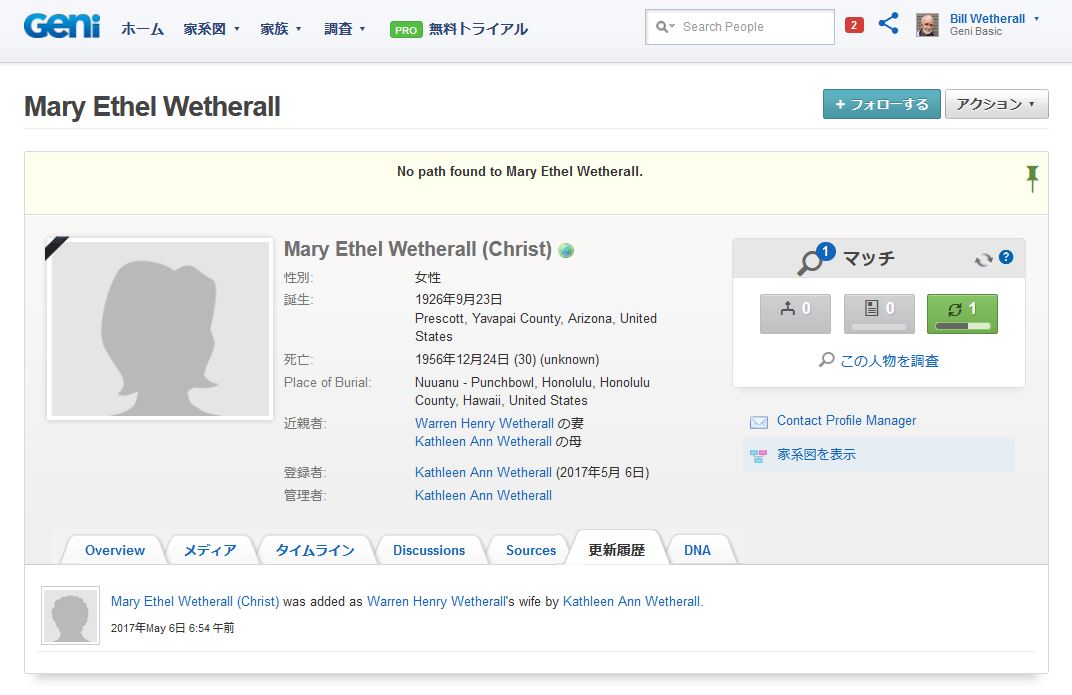
Kathleen Ann Wetherall's family tree showing "Mary Ethel Wetherall (Christ)" |
Two family trees
The computer generated reports probably aggregated information from several family trees that differed in scope and quality. Trees created by immediate family members are not necessarily more accurate, but trees by members of estranged families might substantially differ in how they describe their own side versus the other side of the estrangement.
The principal Wetherall-Van Houton family tree on Kathy's side reflects work by Mary Sue, the wife of Kathy's 1st cousin Robert Van Ryswyk. And Mary Sue's primary source regarding Kathy's mother was another 1st cousin, Rae Perszyk, reporting what she recalls she heard from her mother, Helen Morrison, who as Warren's sister was Kathy's aunt. Essentially, then, no one on Kathy's side really knew anything about Kathy's mother or her family.
But what about Kathy's mother's side? Had anyone in her mother's family created a family tree? And what, if anything, did it reflect about her mother's family's awareness of, interest in, or knowledge about Kathy and her family? And was someone in the mother's family, who might know something, reachable?
McCann Family Tree
I searched Ancestry.com for family trees that included variations of the name "Mary Ethel C(h)rist". None appeared to have been created by Kathy.
But a public tree called "McCann Family Tree" caught my eye. The tree was created by "solstice40", who joined Ancestry.com on 28 May 2013.
The McCann Family Tree showed only 10 members, 0 records, and 0 sources. And 7 of the members were dead. So why would I be interested in such an undeveloped and undocumented tree?
I immediately noted the 1927 date for Mary's birth and the spelling of her family name as "Crist". But what struck me most about the tree was who was and wasn't included -- but especially the indication that Mary had left a daughter presumably fathered by McCann.
Only 5 of the 10 people were identified -- "Richard Dennis McCann Jr." (1928-2002), his father "Richard D McCann" (1891-1967), his mother "Marie Cecelia O'Brien" (1896-1960), and his two wives, "Kathleen Eiko Nakagawa" (1933-2000) and "Mary Ethel Crist" (1927-1956). Mary's parents were both "Unknown", and McCann's 3 children -- a daughter and a son with Kathleen, and a daughter with Mary -- were "Private".
In other words -- the tree was most likely made by one of McCann's children, possibly even by his daughter with Mary.
Mary's profile was as follows Ancestry.com, viewed 25 May 2021).
Mary Ethel Crist
1927–1956
Birth SEP 1927 • Prescott, Yavapai, Arizona, USA
Death 24 DEC 1956 • Honolulu, Honolulu, Hawaii, USA
McCann and his parents, his 1st wife Mary, his 2nd wife Kathleen, and presumably also Mary's unknown parents, had all died by 2002, 11 years before the "McCann Family Tree" was created. Ergo, "solstice40" was probably one of the 3 "Private" children, who knew enough about Mary to identify her.
The McCann Family Tree suggests that Mary's daughter was fathered by McCann. But possibly she was born to Mary before Mary met McCann, and McCann had adopted her. Either way, if McCann's "Mary Ethel Crist" was Kathy's "Mary Ethel Crist", then Kathy had a half sister.
Given the fact that Mary was only 29 when she died on 24 December 1956, and the fact that McCann remarried Kathleen Nakagawa on 12 May 1962, the odds are that Kathleen helped raise McCann's daughter with Mary, as an older half-sibling of their own daughter and son. So who were these McCann children, who had the same father but different mothers?
Mary Ethel Wetherall (Christ)
Kathy, who grew up without her mother, could not possibly have not been curious about her mother's identity. How much, though, did she ever know? Presumably she had, or had seen, a copy of her birth certificate. But even if she had never seen her birth certificate, wouldn't Warren have told her what he knew? Or if not Warren, wouldn't her grandmother Nellie (Van Houton, Wetherall) Sailors who helped raise her with Warren in California -- or one of her paternal aunts, whether Marge (Wetherall) Thomas in California, Mary (Wetherall, Van Ryswyk) Wells in Iowa, or Helen (Wetherall) Morrison in Wisconsin -- have told her?
If my father knew, he didn't tell me. But who knows what gossip he had heard and might have shared with Kathy when she visited him or wrote him.
Kathy had obtained vital records for her father's ancestors. So surely she had the research skills to get copies of her father's marriage certificate and her own birth certificate, if not other evidence of her mother's identity -- assuming she and her father were legally married -- and assuming that her birth was legally registered.
Nothing can be taken for granted, though. Families are known to deal very differently with difficult relationships and developments. Some people keep secrets. Other coat fragments of bitter truths in sugar.
Did Warren leave Kathy copies of documents, letters, or photographs? Or had he thrown them out?
Did anything among Kathy's possessions at the time of death relate to her mother's identity?
Kathy searches for her mother
I found no family tree on Ancestry.com that might have been created by Kathy -- or, for that matter, any tree that included documentary evidence or immediate family accounts of Warren's marriage to Mary or of Kathy's birth.
However, on 30 June 2021, Mary Sue Van Ryswyk, the wife of Kathy's 1st cousin Robert Van Ryswyk, emailed me a link to a family tree on Geni.com with the remark "This info was provided by Kathy, I think". I immediately went to the link. Sure enough, the "Update" tab showed that the tree had been created by Kathy on 5 May 2017, and that Kathy had added the record of "Mary Ethel Wetherall (Christ)" as the wife of her father on the following day, 6 May 2017.
The day before I got the link to Geni.com, results of a DNA test came from MyHeritage. I am not a member of either, but I bought a DNA test from MyHeritage because my son had gotten a MyHeritage test and I wanted to see how we compared on the same company's test. MyHeritage had allowed me a few weeks of access, so I looked for various combinations of "Mary Ethel" with "Crist" and "Christ" and "Wetherall". And, incredibly, MyHeritage revealed a record of member activity showing that "K. Wetherall" had searched for "Mary Ethel Christ" on 3 May 2017 -- 2 days before Geni reported that "Kathy Wetherall" had created a record for "Mary Ethel Wetherall (Christ)" (see screen capture to right). Moreover, the MyHeritage record corroborated my impression from the Geni record that Kathy's activities were very focused on, and limited to, finding her mother and publicizing the relationship between her mother and both her father and herself.
Significantly, I think, Kathy's MyHeritage and Geni activities came 7 months after she posted a condolence to an on-line version of Mary Wells' obituary. In other words, 4 years before she herself would pass away, Kathy had been thinking about her parents enough to want to establish their relationship to each other, and to her, their daughter, through MyHeritage and Geni.com. In yet other words, after about a decade of what appear to have been very difficult years -- isolated from her ancestral relatives, aware that she was growing old, and dealing with medical problems -- Kathy resumed working on her family history, focusing now on herself.
The quality of Kathy's information
My impression is that Kathy had only fragments of unconfirmed information -- (1) a name, which sounded to her like "Christ", and (2) a recollection from family lore that her mother had died shortly after leaving her with her father. And with only this, she went fishing on genealogy websites.
Where did Kathy get her information about Mary Ethel Crist? Why did she spell Mary's name "Christ" and think that Mary was born in 1926? Are these Kathy's errors, or errors in her sources?
Kathy pinpointed the place where "Mary Ethel Wetherall (Christ)" was buried as "Nuuanu -- Punchbowl, Honolulu". The location happens to be site of the National Memorial Cemetery of the Pacific, where "Mary Ethel McCann" is buried. However, Kathy did not name the cemetery or make any reference to a grave with a headtone reading "Mary E. / wife of / Richard D McCann".
A photograph of Mary E. McCann's headstone was posted to Find a Grave on 9 September 2015 -- about 2 and a half years before Kathy's quest. Apparently she didn't know that her mother had remarried. Yet she knew, or thought she knew, where "Mary Ethel Wetherall (Christ)" died and was buried.
Did thinking her mother's name was "Christ" and not "Crist" prevent Kathy from finding other information about her? Or did she know more than is evident from her public posting, but chose to limit her posting to her mother's identity as Warren's wife and her mother?
While the McCann Family Tree included only 10 members, all dead except the 3 half-siblings shown only as "Private", Kathy's family tree included only her parents, who were dead, and herself. If the McCann Family Tree ranks 5 on a 1-10 scale of loneliness, Kathy's tree ranks 10.
Did either Kathy or her McCann half sister know about the other? Probably not.
Both trees claim the same mother, but neither shows any awareness of the other family.
Family histories are full of estrangements of parents that result in separations of siblings who never hear about each other's existence. In the past, the odds their paths would cross were practically zero. Today the odds are considerably better.
Imagine a scenario in which Kathy Wetherall and a woman named McCann, both wanting to know about mothers they never knew, have DNA tests. The results come back with half-sibling matches. They can't believe their eyes, but they reach out, exchange stories and photographs, and confirm that they are siblings. They arrange to meet, and their meeting is captured on a video that attracts a few million viewers on YouTube.
Sidebar on genealogy businessesWhen searching for someone on different genealogy websites, differences in the websites become obvious. It also becomes obvious that some websites are closely related. Users of Ancestry.com, which includes U.S. records, quickly became familiar with prompts to pay for subscriptions to websites with United Kingdom or other national records. When clicking some links on Geni searches for Kathy's mother, I was usually passed on to MyHeritage and prompted to initiate a trial subscription there. Why was this? Geni and MyHeritageA blog called The Legal Genealogist, by Judy G. Russell, an attorney cum professional genealogist, gives a detailed account of the relationship between the two companies in a series of articles titled MyHeritage and Geni (5 July 2016). Part 1 includes these observations. MyHeritage was founded in Israel in 2003. Geni was founded in California in 2007. In November 2012, MyHeritage acquired Geni and since then Geni is a fully-owned subsidiary of MyHeritage. Geni is developed and maintained separately from MyHeritage, and the Geni team reports to the executive team of MyHeritage. MyHeritage currently [July 2021] has approximately 83.2 million registered users. Geni currently has approximately 10.6 million registered users, of which 1.8 million are also on MyHeritage. Together they have 92 million unique registered users. The missions of the two genealogy services, however, remain very different. Geni is building a single world family tree. Members may create a family tree, but as soon they, other members, or website curators find a link to another isolated tree, or the global tree, the trees are linked by merging and thus deleting duplicate profiles. Toward this end, any member or curator may edit the profile of any person on the tree in the process of merging trees. In sharp contrast, like Ancestry.com and most other genealogy services, MyHeritage permits members to develop family trees that belong to the member, not directly linked to other trees, and cannot be edited by other members unless permitted by the owner. Individually owned trees can be as sloppy or as exacting as the owner wishes, whereas Geni's profiles are collectively owned and subject to editing if not deletion in the process of merging trees. Geni's pitch is that its integrated tree approach allows a member to immediately trace connections with any famous person whose profile may be included on the single world tree -- whereas members of services with unintegrated trees must manually trace their connections and duplicate the profiles of people they believe are part of their tree. AncestryAncestry.com originated from a company founded in Utah in 1990 to market LDS (Latter-day Saints) publications on floppy disks. The company developed through a number of acquisitions, and improvements in database and information sharing technologies, to the point that it launched Ancestry.com as a subscription website 1996. Ancestry's business model territorializes several country or regional databases, each of which requires separate subscriptions. Ancestry requires separate subscriptions to access two of its most important subsidiary websites -- Fold3.com, which is dedicated to U.S. government military records -- and Newspapers.com, which offers searchable scans of thousands of newspapers. In 2013, Ancestry acquired Find a Grave, which is linked to Ancestry.com but is publicly accessible and charges no fees for membership. |
Descrepancies
The above MyHeritage and FamilySearch reports are computer-generated from incomplete information. And some of the information does not match information on actual records.
If "Mary Ethel Christ" was the daughter of Frank and Isabelle, then it appears she was born "Crist" (not "Christ") on 24 September 1927 (not 1926).
Both "Crist" and "24 September 1927" are consistent with Mary's birth certificate and other paper records. The spelling "Crist" is also consistent with 1930 and 1940 census sheets.
"Christ" is the most familiar spelling of the name pronounced "Krīst". The name has been spelled many ways, including "Crest".
Some people are known to adopt a more common variation of the spelling of their name, but most people protect their spellings. I can hear a Crist family member say "'Krīst' without 'h' -- C-r-i-s-t" -- just as I commonly say "'Weather' without and 'a' plus 'a-l-l'" -- and hope the listener gets "Wetherall".
Public documents ard newspapers are not immune to spelling errors. Careless census takers and clerks, and journalists, are known to spell names in ways that "sound right" to them, without confirming the spellings with the name owner.
Genealogists, too, are known to corrupt the spellings of names their eyes hear by ear. They "see" Crist but "hear" Christ. They "read" Wetherall but "write" Weatherall.
The Tuesday, 4 December 1923 edition of The Sacramento Star announced that a marriage license had been issued to "Frank Elmer Crest" [sic = Crist] of Oakland and "Isabelle G. Matheson" of Los Gatos (page 10).
Oakland is in Alameda County east of San Francisco Bay. Los Gatos is in Santa Clara County south of the Bay. Both are part of the 9-county San Francisco Bay Area -- Alameda, Contra Costa, Marin, Napa, San Mateo, Santa Clara, Solano, Sonoma, and San Francisco. The Crists were Bay Area people, and several of these counties figure in Mary Ethel Crist's life.
Frank's and Isabelle's son, Frank Elmer Crist, Junior, was born in Oakland in Alameda County in California on 25 April 1923, apparently out of wedlock, given the date of their marriage -- and assuming Isabelle was his mother.
A probably corrupted computer-generated transcription, rather than a physical scan, of a birth index gives the maiden name of the mother of a "Frank E. Christ" born on 25 April 1923 in Alameda County as "Sutherla" (Sutherland?). But a death index for a "Frank Elmer Crist" born on 25 April 1923 shows his mother's maiden name as "Matheson".
Frank Jr. died on 15 June 1989 and is buried as both "Frank E. Crist" and "Frank Elmer Crist" with acknowledgements that he had been given a Purple Heart as a Corporal in the U.S. Marines during World War II.
Documentary evidence
I have cribbed most of the following information on "Mary Ethel Crist" from scans of documents and transcriptions of records I found on www.ancestry.com (viewed 26-27 May 2021).
"Mary Ethel Crist" was born on 24 September 1927 in the city of Prescott in Yavapai county in Arizona to Isabelle Gladys Crist (nee Matheson, born 30 May 1903, died 15 March 1996) and Frank Elmer Crist (Occuption: Patient at Whipple). "Whipple" is a reference to Fort Whipple hospital for veterans with respiratory illnesses, especially TB but also World War I nerve gas injuries.
1930 census for Township 3 of Contra Costa in California shows Frank E. Crist (33), Isabelle G. Crist (26). Frank (7), and Mary (2). Frank E. Crist is "Retired" -- i.e., he is unable to work because of effects of his illness.
Father Frank E. Crist died on 25 December 1930 in Contra Costa County, California at age 34 (born circa 1896).
On 11 July 1934 Isabelle G. Crist married Oscar M. Higuera in Oakland, Calfornia.
1940 census for San Francisco, California, shows Oscar M. [Martin] Higueras (32) [sic = Higuera], his wife Isabelle G. (36), his [their] son Fredrik M. (4), then California-born "Frank E. Crist" (16) and Arizona-born "Mary J. Crist" (12) [sic = "Mary E."] as Oscar's step-son and step-daughter. Oscar is a "Driver" for a "Milk Co." [Borden's Dairy Delivery].
On 12 November 1954, "Mary Ethel Rillings" (27), divorced, "Teletype operator", daughter of Isabelle Gladys Mathewson [sic = Matheson] of San Francisco, married Ervin Porter Weston (27), divorced, "USN", in Portsmouth, New Hampshire.
Judging from the above evidence, there is no doubt that the "Mary Ethel Crist" born to Frank and Isabelle Crist was the divorced "Rillings" who married "Ervin Porter Weston" in 1954. If she is also the "Mary Ethel Christ/Crist" who is supposed to have married Warren Wetherall in 1950, then the following possibilities come to mind.
- Mary married Rillings after leaving Warren, then divorced Rillings before marrying Weston in 1954.
- Or Mary had been Rillings before she married Warren, and preferred to go by Rillings than by Wetherall when she married Weston.
I played around with "Rillings" and found a scan of a California marriage index ordered by the name of the groom, which showed the following marriage (see also image below).
On 14 May 1949, "Edward L. Wooldridge" (22) married "Mary E. Rillings" nee "Mary E. Crist" (22) in Sonoma County, California.
This was interesting, but it posed 2 problems.
- 14 May 1949 was very close to 1 July 1950, when Mary is supposed to have married Warren -- after somehow meeting him -- where? -- in Knoxville?
- Is the "Rillings nee Crist" who married Wooldridge in 1949 the same "Rillings nee Crist" (who married Weston) in 1954? And was she Crist (or Christ), Rillings, or Wooldridge when she married Warren -- making Warren the 3rd of 4 husbands within 5 years?
While looking for "Mary Ethel" whoever with 24 September 1927 birthdates, I found the following inscription on the headstone of a "Mary E. McCann" in the National Memorial Cemetery of the Pacific in Honolulu in Hawaii (Find a Grave (headstone photo by David A. Swiger, viewed 27 May 2021).
MARY E / SEPT 24 1927 DEC 24 1956 / WIFE OF / ETC RICHARD D McCANN / USN
ETC means "Electronics Technician Chief Petty Officer".
The "Mary E" and the "SEPT 24 1927" were expected since that was what I was looking for. What intrigued me most about this record was the fact that her husband was "USN" and apparently she had died in Honolulu.
So at this point I had two more isolated facts that were possibly parts of the same picture.
Till facts do us part
In any kind of research or investigation, you run with one or another hypothesis until you encounter fatal contradictions in objective facts. I had several facts -- or rather fragments of facts -- but none were contradictory. I had initials without names, names without birthdates, and partial names and birthdates without places of birth. The dates lined up but the locales were all over the map.
The point is that, while there were huge gaps in the chronology, and numerous unanswered questions, there were no contradictions.
The challenge was to find missing parts that either connected these fragments into a larger picture, or exposed a contradition that forced a fragment to be rejected on the grounds that it didn't fit.
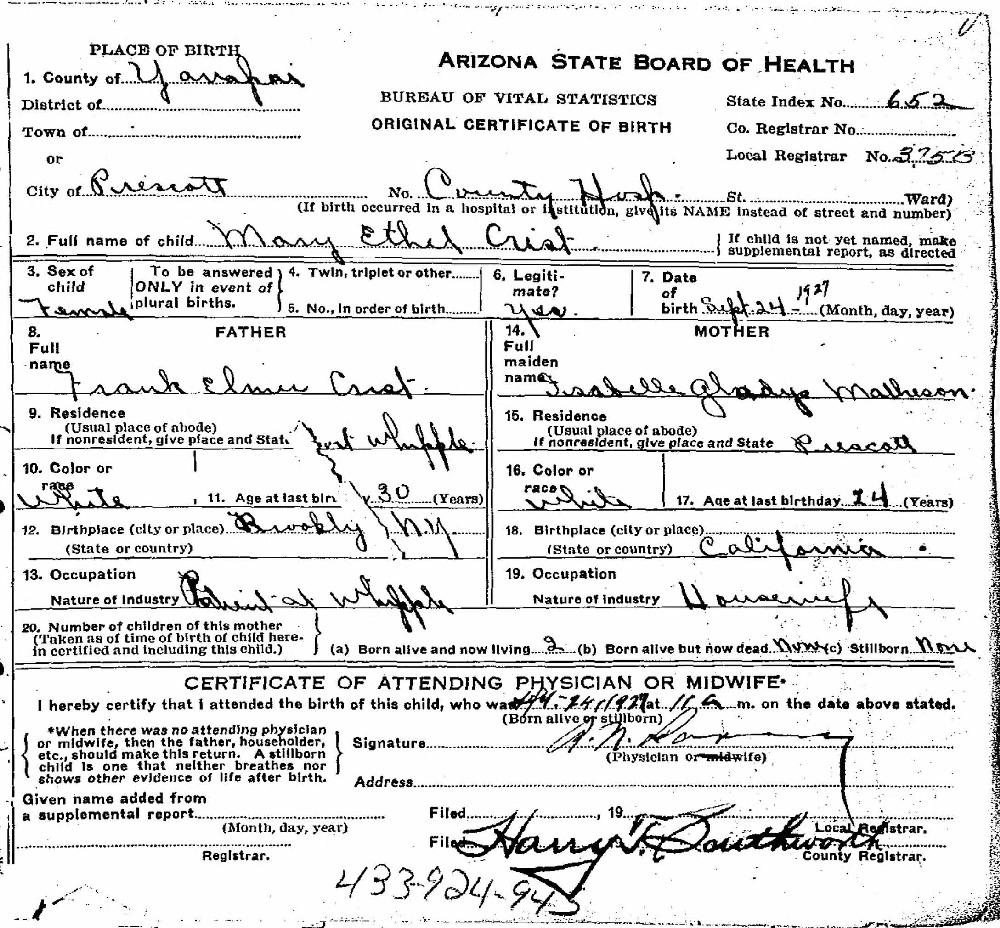
Click on certificate to enlarge |
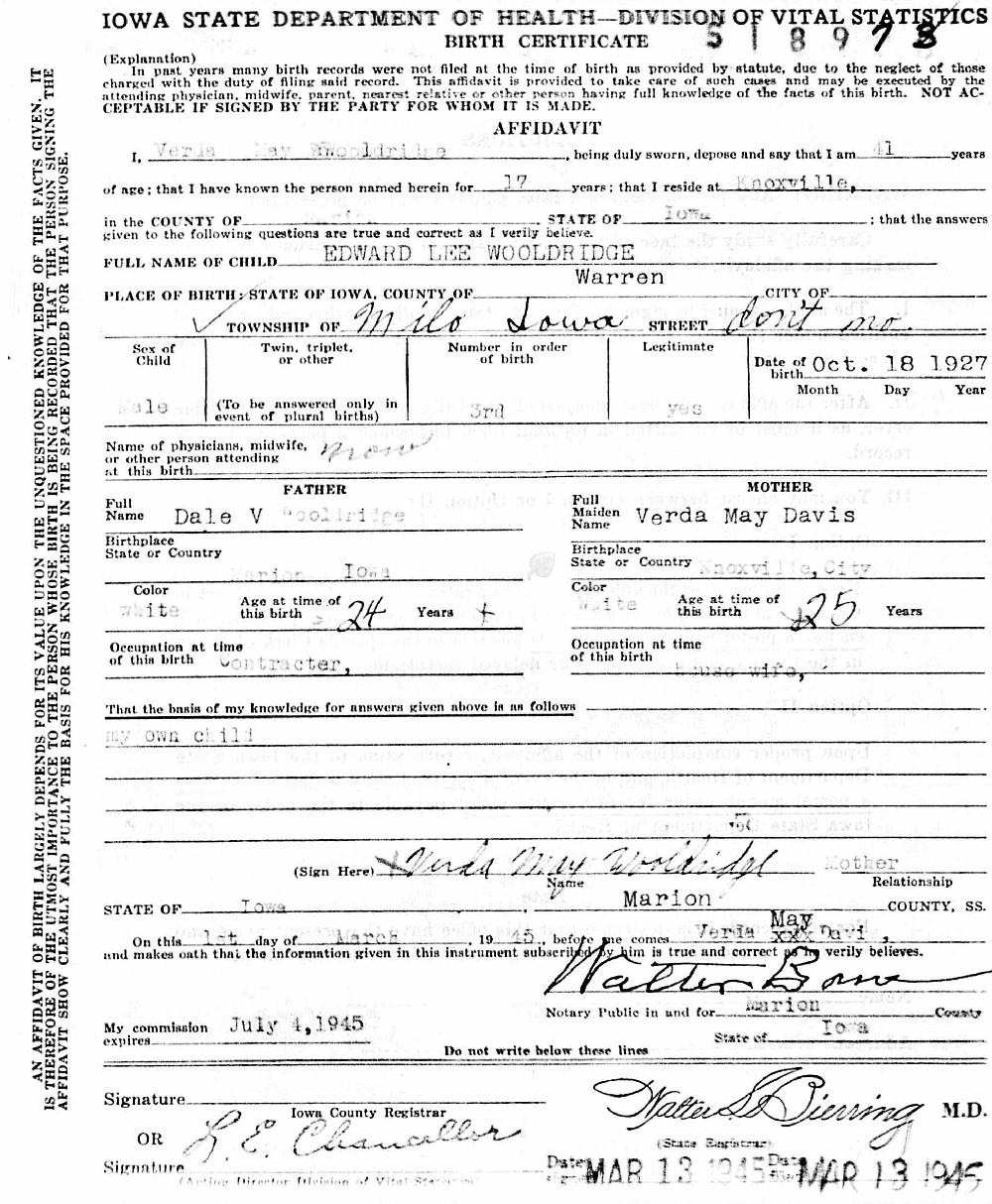
Click on certificate to enlarge |

|
|
|
Above Right Click on certificate to enlarge Copped and cropped from Ancestry.com |
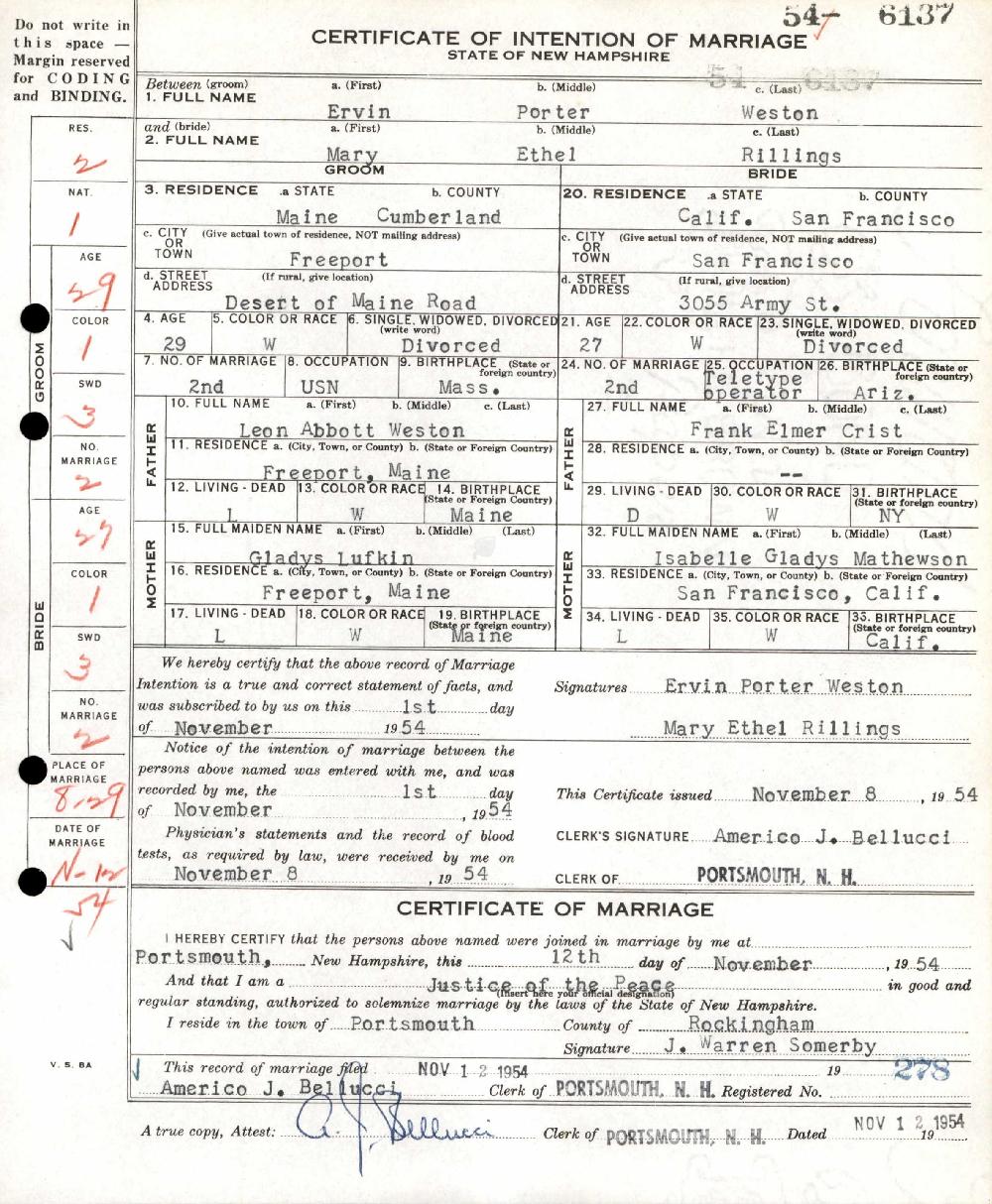
|
 Mary E. McCann's headstone
Mary E. McCann's headstone24 September 1927 - 24 December 1956 Wife of ETC Richard D. McCann, USN National Memorial Cemetery of the Pacific, Honolulu, Hawaii Photograph by David A. Swiger copped from Find a Grave |
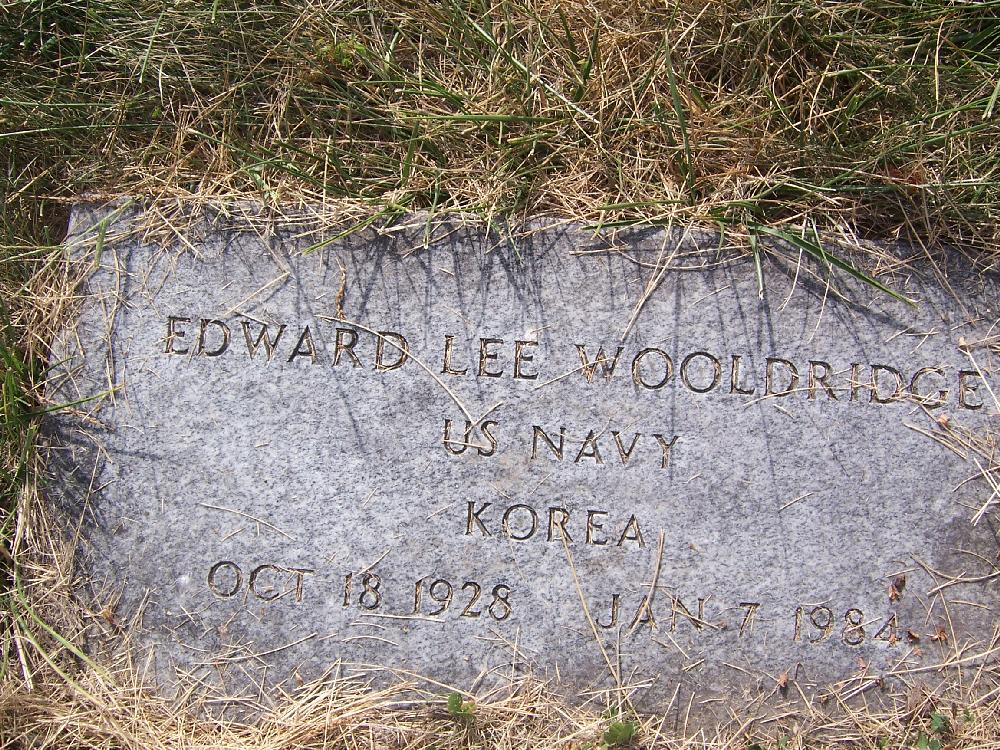 Edward Lee Wooldridge's headstone
Edward Lee Wooldridge's headstoneUS Navy, Korea 18 October 1928 - 7 January 1984 Hiteman Cemetery, Hiteman, Monroe County, Iowa Photograph by karen copped from Find a Grave |
Mary's trail doubles back
At his point, I had the following isolated facts.
- 1949-05-14 scan of index
"Mary E. Rillings nee Mary E. Crist" married "Edward L. Wooldridge" in Sonoma County, California - 1950-07-01 hearsay
"Mary Ethel Christ" reportedly married "Warren Wetherall" in Knoxville, Iowa - 1954-11-12 scan of certificate
"Mary Ethel Rillings nee Crist" married "Ervin Porter Weston", USN, in Portsmouth, New Hampshire - 1956-12-24 photograph of headstone
"Mary E. McCann" died, and is buried as the wife of "Richard D. McCann", USN, in Honolulu in Hawaii
If these dots were to be connected in time and space, I had to link Mary's movements with the movements of her husbands, and account for discrepancies in spellings and dates. The following questions had to be answered.
- Who is Rillings, when and where did Mary meet and marry him? Was he, like Mary, from the San Francisco Bay Area? What became of him? Did he die, or were they divorced?
- Who is Wooldridge, where did Mary meet him, and what became of him?
- If Mary married first Rillings and then Wooldridge in California, what brought her to Knoxville to marry Warren?
- How did Mary, after leaving Warren, end up in New Hamshire to marry Weston, a Navy man?
- Why did Mary, when marrying Weston, go by "Rillings" instead of "Wetherall" or "Wooldridge"?
- Did Mary meet McCann, also a Navy man, at a Navy base in Honolulu or elsewhere, when Weston's ship was in port? Or had the two men been assigned to the same ship or shore facility?
Geographcial imperatives
The dates align and, while 1949 and 1950 are tight, the chronology is plausible. The problem was the geography -- namely, Mary's movements.
So at this point, I decided to investigate Mary Ethel Crist and the men geographically.
In today's age of social network media, people can cross paths in cyberspace and carry on romantic affairs from far separated homes on earth. In the 1940s and 1950s, when Mary Ethel Crist was courting and being courted, boys and girls generally had to meet, or be introduced, face-to-face to get to know each other. In other words, a courtship could begin only if their paths physically crossed.
I call this the "geographical imperative" -- the need to prove that two people were sharing the same time and space when they are alleged to have done something together, such as marry.
In the case of Mary Ethel Crist,
when and where did she meet her husbands?
And what led her from one to the next?
What I knew about Mary
Records from 1917-1940 show that Mary E. Crist was born in Arizona but grew up in Contra Costa county, Alameda county, and the city and county of San Francisco -- all in the San Francisco Bay Area. Her parents are actually Bay Area people. She appears to have been born in Arizona because her father was receiving medical treatment at a facility there for World War I veterans.
"Mary Ethel Christ/Crist" is said to have married Warren Wetherall in 1950 in Knoxville, Iowa, given birth to Kathy Wetherall in 1951, then left Warren and Kathy. The marriage and birth are presumably on record, but I have not seen such records. And all concerned parties, and those who were close to them at the time, are dead.
Jump 14 years to 1954, and Mary Ethel Crist is in Portsmouth, New Hamshire, going by Mary Ethel Rillings when she marries Ervin Porter Weston, a Navy man. Mary Ethel Weston (nee Crist, formerly Rillings) is clearly the Mary Ethel Crist) in the 1927-1940 birth and census records.
Jump 2 more years to 1956, and Mary E. McCann -- who may or may not have once been Crist, Wetherall, Rillings, and Weston -- is buried in Honolulu as the wife of Richard D. McCann, a Navy man.
What I knew about Warren
As for Warren, he was a Knoxville, Iowa boy. He enlisted in the Army in May 1943 immediately after graduating from high school. And he seems to have come straight home in March 1946 after serving in Europe from November 1944.
Warren trained at Camp Dodge in Iowa and ended up in Europe. He would have shipped out from, and returned to, an Atlantic port. I have no idea where he was stationed after training and before shipping out, but if he was slated for replacement in the European theater, then he wouldn't have been stationed at a staging facility on the westcoast, where me might have met a California girl. Most likely he never set foot in a San Francisco Bay Area or other westcoast Army camp.
So if "Mary Ethel Crist" is the "Mary Ethel Christ" who Warren is supposed to have married, I had to account for when and where she and Warren crossed paths and then tied the knot in Knoxville.
Back to Rillings
When looking for a connection between "Rillings" and "Crist", I stumbled across a record for a marriage between "Wooldridge" and both "Rillings" and "Crist". The record was a scan of a California marriage index showing the names of grooms in alphabetical order. At first I didn't know what to make of the record, for it showed 2 lines for the same groom -- "WOOLDRIGE EDWARD L" but different women -- "RILLINGS MARY E" and "CRIST MARY E" -- followed by the same figures representing the ages of the groom and bride, the date and place of the marriage, and various filing numbers.
Edward L. Wookridge had married Mary E. Rillings, nee Mary E. Crist, in Sonoma County on 14 May 1949. Both were 22 -- though if Mary was born on 24 September 1927, she would then have still been 21.
I was looking for just Rillings but turned up Wooldridge -- who Mary E. Crist married on 14 May 1949 after Rillings. And if this was Warren's wife, then she married Wooldridge just 13 or 14 monthsbefore she married Warren on 1 July 1950.
How was this possible?
Sonoma County -- where Mary R. Rillings nee Crist married Edward L. Wooldridge -- is just north of Marin County, which is just north of San Francisco, which is immediately east of Oakland in Alameda County, which is just south of Contra Costa County in the East Bay. Wooldridge probably married Rillings nee Crist in Santa Rosa, the seat of Sonoma County.
I surmised that Mary E. Crist had probably also married Rillings in the Bay Area. Had they met in high school or at a church? Or perhaps at a social event for servicemen, or at a club patronized by servicemen during the war?
Had Crist divorced Rillings, or did he divorce her? Or had he been killed in action during the war?
A State of New Hampshire "Certificate of Intention of Marriage" (see image) shows that Mary and Weston initiated their intention to marry on 1 November 1954. A clerk received a physician's statement and record of blood tests on 8 November 1954, and issued them the certificate -- essentially a license to marry -- on this date. And they were joined in marriage by a state-licensed Justice of the Peace on 12 November 1954.
The Certificate of Intention of Marriage" shows Mary's current address as "3055 Army St." in San Francisco. I Googled the address and came up with scans of a publication titled Combat Connected Naval Casualties World War II, 1946, U.S. Navy, Marine Corps, Coast Guard, Volume I, Alabama through Missouri. The following entry was listed under California, Wounded (page 118).
CRIST, Frank E., Pfc., USMCR. Mother, Mrs. Isabelle G. Higuera, 3055 Army St., San Francisco.
Mary's brother, Frank Elmer Crist (Junior), was associated with his mother's address at the time the data in the 1946 casualty publication was compiled.
Marriage laws and procedures vary from state to state, and some states are stricter than others. When I was growing up in California, people in a hurry to marry "went over the hill" (the Sierra-Nevada mountains) to marry in Reno or Las Vegas, to avoid procedural delays then imposed by California's marriage laws. Divorces, also, were swifter and more hassle-free in Nevada, but a Nevada divorce could be contested in California, and court venues might have to change to deal with matters not covered by Nevada's divorce laws.
New Hampshire appears to have had fairly strict and comprehensive license application rules. At the time, blood tests -- screening especially for syphilis -- were mandatory in many states, and some states required physical examinations.
Information required from the groom and bride also varies from state to state. The New Hampshire certificate is very comprehensive in that it requires not only the full name, street address, age, color or race, marital status, number of marriage, occupation, and birthplace of the groom and bride, but the full name, residence if alive, whether living or dead, color or race, and birthplace of their parents.
I would guess that both Weston and Mary had to show some form of identification. Weston would have had Navy ID card. Mary may have had a driver's license or other form of identification showing that she was "Mary Ethel Rillings" and resided at 3055 Army St. in San Francisco.
At this point, we have only a series isolated events -- 1949 "Rillings nee Crist" marries Wooldridge -- 1950 "Crist/Christ" marries Wetherall -- 1954 "Rillings nee Crist" marries Weston. We have no hard links between the events -- no way of telling whether we are talking about 1, 2, or 3 women.
Assuming that the 3 Marys are the same Mary, however, the following questions arise.
- If the "Mary Ethel Rillings nee Crist" who married Weston was Warren Wetherall's ex-wife, why did she present herself as "Rillings" rather than as "Wetherall"?
- In the same vein -- leaving aside Warren -- if she was the "Rillings nee Crist" who had married Edward L. Wooldridge, then why didn't she present herself as "Wooldridge"?
After leaving Warren, Mary might have returned to her mother's place, resumed going by Rillings, and obtained a driver's license or other form of identification under that name. If Rillings was still living, she might even have remarried him. My maternal aunt married and divorced 3 times -- twice to the same man.
However, my impression is that, when marrying Weston in 1954, "Mary Ethel Rillings" presented older identification from the time she had been married to Rillings, before she married Wooldridge in 1949. I would guess that Mary resided with her mother either (1) while Rillings was away in the military, or (2) after their marriage ended in divorce or death.
Resolving such issues is not especially important at this point. Most important is the development that, when I tried to find Rillings, Mary Ethel Crist's trail doubled back to the late 1940s -- before she is supposed to have married Warren Wetherall. And another husband -- Edward L. Wooldridge -- appeared in her life in 1949 -- between Rillings and Warren.
Mary Ethel Crist's 5 husbands
The crucial question now was -- if Mary Ethel Crist > Rollings > Wooldridge is the "Mary Ethel Christ" who reportedly married Warren Wetherall -- how did she meet Warren? An Iowa boy, born and partly raised in Des Moines but later in Knoxville? Who presumably never ventured west of Iowa until the mid 1950s, when he moved to Banning in Riverside County, California, an hour or two east of Los Angeles?
Profiles of Mary Ethel Crist's husbands
At this point I began to look into the lives of the Rillings and Wooldridge, the 2 men Mary appears to have married before Warren -- and Weston and McCann, the 2 men she seems to have married after Warren. I was especially interested in Edward L. Wooldridge, who Mary would have had to leave either before or after she met Warren a year or so after marrying Wooldridge.
1st husband (m????-??-??)
Rillings (????-????)
Mary Ethel Crist married a man named Rillings -- her name at the time she married her 2nd husband in Sonoma County, California, in 1949 -- as well at the time she married her 4th husband in Portsmouth, New Hampshire. Sonoma County is the northernmost county of the San Francisco Bay Area, where she spent most of her childhood and all of her teens. She probably met and married Rillings somehwere in the Bay Area between 1944 and 1947, when she would have been from 17 to 20 years old.
2nd husband (m1949-05-14, Sonoma County, California)
Edward Lee "Pete" Wooldridge (1928-1984)
Edward L. Wooldridge was born in Milo in Monroe County in Iowa on 18 October 1927, according to a delayed birth certificate signed by his mother, Verda May Wooldridge (nee Davis), and notarized on 1 March 1945 in Knoxville. The certificate was signed by the "Iowa County Registrar" and the "State Registrar" on 13 March 1945. The certificate states that Edward's father was born in "Marion County" and that his mother was born in "Knoxville City" as typed by a clerk. There were no physicians, midwife, or other person attending his birth, in "Milo Iowa" on street "don't no" as written by hand. Edward is described as the "3rd" in order of birth (contrary to 1930 census, but in concert with the 1940 census and his father's obituary).
Birth date discrepancies
Edward is "0" (written by overstuck "6/12") in the April 1930 census for Center Township in Wapello County. He is the last listed of 4 children including 3 sons and a 1-year-old daughter.
Edward is "10" in the April 1940 census for Knoxville. The census lists him as the 3rd child and 3rd son of 10 children -- 7 sons and 3 daughters -- all a year or 2 apart. The daughter listed as Edward's 1-year-old sister in the 1930 census is not listed in this census. His father completed 1 year of high school and his mother the 7th grade. His father and oldest brother are laborers. The census states that they had were residing at the same Knoxville address in 1935.
Edward's headstone, social security, and military records state that he was born on 18 October in 1928 -- not 1927.
Edward's father, Dale Vernice Wooldridge, was born on 14 Jun 1903 in Knoxville. He died on 12 December 1977 in Des Moines in Polk County in Iowa. According to an obituary in the Wednesday, 14 December 1977 edition of Des Moines Tribune (page 8), he had worked in Des Moines for 19 years, and he left 9 sons and 5 daughters, including Edward, his 3rd listed son, then living in Knoxville, as were 5 of Edward's brothers and a sister. Dale is buried in Elm Grove Cemetery in Des Moines.
Edward's mother, Verda May (Davis) Wooldridge, was born Palmyra in Warren County, Iowa, on 20 May 1905. She died in Knoxville on 1 February 1986 and is buried in Graceland Cemetery in Knoxville, as is Warren Wetherall's father William R. Wetherall. Edward's parents married on 22 August 1923 in Knoxville.
Edward Lee "Pete" Wooldridge died in Knoxville on 7 January 1984. He is buried as "PETE / WOOLDRIDGE / 1928-1984" and as "EDWARD LEE WOOLDRIDGE / US NAVY / KOREA / OCT 18 1928 JAN 7 1984" in Hiteman Cemetery in Hiteman in Monroe County, Iowa (see photo).
Military records show 2 periods of service -- (1) 17 Apr 1946 to 21 May 1947, and (2) 29 Oct 1947 to 8 Jan 1962. The former may have been Army. The latter was Navy.
Scans of several Navy muster rolls shows Edward Lee Wooldridge as a crew member of SS-324 Blenny from as early as 8 December 1947 to as late as 29 December 1948 (scan). The submarine was based in San Diego and operated in the Pacific during the mid and late 1940s and early 1950s.
Where was Wooldridge at the time he married in Sonoma County in the spring of 1949? The county seat is Santa Rosa, but the Naval Auxiliary Air Station at Santa Rosa, a Pacific War flight training facility, was not in operation between 1948 and 1951, when it was reactivated during the Korean War.
But the San Francisco Bay Area was crawling with Navy personnel in the late 1940s. There were many Navy facilities in the Bay Area -- including the large bases at Mare Island Naval Shipyard, Alameda Naval Air Station, San Francisco (Hunters Point) Naval Shipyard, and Naval Station Treasure Island -- at which Edward could have been deployed while his ship was undergoing maintenance, or assigned to shore duty. This writer worked at San Francisco Naval Shipyard at Hunters Point during the summers of 1959 and 1960, and from the summer of 1961 to the fall of 1962. My maternal great uncle Orval Hunter worked for many years in aviation instrument repairs at the Alameda Naval Air Station, a carrier base, while living in Alameda.
So Wooldridge was both a Knoxville boy -- and, like Mary Ethel Crist's 4th and 5th husbands, a Navy man.
3rd husband (m1950-07-01, Knoxville, Iowa)
Warren Henry Wetherall (1925-1999)
Warren is born in Des Moines in 1925 and by the late 1930s, either shortly before his father William R. Wetherall (1890-1936) died in 1936 or soon after, he was living in Knoxville with his mother Nellie Marie (Van Houton) Wetherall (1898-1966).
He graduated from high school and enlisted in the Army in the spring of 1943, and returned to Knoxville after mustering out of the Army in 1946. He appears to have been working at a Maytag plant in Newton, about an hour by car from Knoxville, at the time he married Mary Ethel Crist.
I imagine Edward brought Mary to Knoxville, possibly to live with his parents while he was at sea. Edward was about 3 years younger than Warren. Did the two men know each other?
4th husband (m1954-11-12, Portsmouth, New Hamshire)
Ervin Porter Weston (1925-2017)
Mary gave her name as "Mary Ethel Rillings" on the marriage certificate, which states that both she and Weston were divorced.
Weston's 1st marriage was to Lottie Elizabeth West on 10 March 1951 in Norfolk, Virginia. He was in the Navy, having enlisted during World War II. It was her 2nd marriage, and she was a waitress. For whatever reason, the marriage didn't last, and Weston would marry Mary Ethel Crist, his 2nd wife, on 12 November 1954 in Portsmouth, New Hampshire. Perhaps he was stationed, or his ship was being repaired, at the Portsmouth Naval Shipyard, which is located in Maine, bordering Portsmouth in New Hampshire.
Weston married Janet Rae Lovely, his 3rd wife, in Maine on 11 January 1957 and they had 2 children. On 5 July 1963, the 6th Judicial District Court in Idaho granted Janet an uncontested absolute divorce on the grounds of extreme cruelty, for which she received alimony, custody of their 2 children, and child support.
Weston, born on 17 January 1925 in Marlborough, Massachusetts, married Carol Keys, his 4th wife, on 14 February 1964 while he was stationed in Hawaii. She was at his side when he died in Idaho Falls on 7 August 2017.
It took 4 marriages for Weston to find a partner with whom he would stay for over half a century.
5th husband (m????-??-??)
Richard David McCann (1925-2002)
It took McCann only 2 marriages to find family happiness. The 1st was a very a brief union with Mary Ethel Crist, which left him a widower with an infant daughter in 1956 at age 28.
McCann's 2nd marriage, with Kathleen Eiko Nakagawa, was a true "till death do us part" union that produced a daughter and a son between them, in addition to the daughter he brought to the union, and several grandchildren and great grandchildren.
Richard D. McCann was born on 10 January 1928 in New York city and died on 30 October 2002 in Lincoln, Nebraska. He is buried in Lincoln Memorial Park and his headstone reads "RICHARD D McCANN / US NAVY / JAN 10 1925 OCT 30 2002".
An obituary in the Sunday, 3 November 2002 edition of Lincoln Journal Star reads in part as follows (Find a Grave, www.genealogybank.com copy contributed by Kathy Monical, viewed 27 May 2021, [omissions] mine).
McCann - Richard D., 74 [omission]. Retired senior chief petty officer, Navy, 23 years. Retired medical repairman, Veterans Hospital. Longtime member, Alcoholics Anonymous, American Legion Post 3. [omission] Preceded in death by spouses, Mary (Christ) McCann, Kathleen (Nakagawa) McCann.
Richard married Kathleen Eiko Nakagawa on 12 May 1962 in Groton, Connecticut. Kathleen was born in Honolulu on 23 February 1933 and died in Nebraska on 1 January 2000. She was buried in Lincoln Memorial Park, as Richard was nearly 3 years later, and their headstones are of the same design. Her obituary reads in part "Graduate, Punahou School, Honolulu. Attended Steven's College, Columbia, Mo. Received bachelor's degree, University of Nebraska-Lincoln. Received master's degree, Columbia College, New York" (Lincoln Journal Star, Saturday, 22 January 2000, according to www.genealogybank.com copy contributed by Kathy Monical, viewed 27 May 2021).
The obituary description of Kathleen's education may contain some misinformation. She is shown as a graduating senior in the 1952 edition of Stephensophia, the yearbook of Stephens College, an all-women's college in Columbia, Missouri (page 51). At the time, the student body was practically 100 percent caucasian.
Marie McCannKathy's half-sisterMcCann, when widowed, was left with That's my conclusion. Consider the evidence.
In conventional obituary protocol, closest relatives are listed first in order of age. Hence the decedent's own children are generally listed before step-children, and full-siblings come before half-siblings. Not all obituaries follow such rules, but the writers of the 2000 and 2002 obituaries, both run in the same Lincoln, Nebraska newspaper, follow them. The 2015 obituary, also published in a Lincoln paper, generally follows them but doesn't make the half-blood sibling distinction -- either knowingly or out of ignorance. The most pressing questions at this point are (1) when was Marie born, and (2) who was her mother, if not Richard McCann's 1st wife? A search for "Marie McCann Zaminer" and people with similar names turns up such a person living in Warwick, Rhode Island. Several personal information aggregation websites say she is 64, others around 65 -- as of 29 May 2021. This suggests she was born between 1955 and 1957. Marie appears to be a retired SLP (speech-language pathologist)/audiologist. According to a computer generated index of addresses based on city directories, Marie M. [McCann] Zaminer was born in December 1956. According to her headstone in a Honolulu cemetery, Mary E. [Ethel] McCann died on 24 December 1956. My guess is that Marie was Mary's daughter with Richard McCann. And if Mary was Kathy's mother, then Kathy had a maternal half-sister who was also left without her mother. The above story is tentative. Its conclusions are highly speculative, but it makes the most sense as of this writing. Stories like this don't fall out of the sky. They come into relief only if one takes the time to snoop into the lives of everyone who briefly appears in the peripherals of a family's main history. The stories of the people who crossed paths with Mary Ethel Crist are the harmonics to her fundamental life. Her life fully resonates only when we know what became of the men -- and children -- she left behind. "Maire McCann Zaminier" on FacebookWhen searching on Facebook, I stumbled across an account for "Maire McCann Zaminer" -- that's "Maire", not "Marie" and the "Maire Zaminer" of Warwick, Rhode Island, a retired SLP/Audiologist, popped up on numerous SNS and other websites. Whether "Marie" is a misspelling or miscorrection or "Marie -- or whether "Maire" is an Facebook affectation -- is not clear. I suspect the later, because all Ancestry.com records show her as "Marie" and not "Maire". The clincher that the two women are the came in the form of several photographs on Maire's Facebook page -- especially two that are dated 29 May 2012 (viewed 25 June 2021).
Maire McCann Zaminer
Maire McCann Zaminer Michelle (McCann) Grubbs is Maire/Marie Zaminer's half sister, the daughter of Richard D. McCann Jr. and Kathleen Nakagawa. Michelle died from cancer 3 years later (see image of 2015 obituary). The headstone had a fresh spray of red ginger on it. Someone asked Maire when it was taken. Maire credited a friend who took it for her when in Hawaii 2 years ago (2010). The photograph of Mary E. McCann's headstone was cut off a bit on the right, thus cutting the "6" off 1956, the year she died. Someone commented -- "you left out the year of your birthday tho hehe". Maire posted a cropped closeup from the photo of her father on 27 May 2013. Someone remarked that he was wearing "Chiefs Insignia". Maire remarked that he had been "Chief of the Boat" -- the rank of the senior enlisted sailor on a submarine, who advises the commanding and executive officers. Someone wrote "I KNEW you came from good stock!" Marries 5 times in 10 yearsWhile the above information may confirm that "Mary E. McCann" was "Mary Ethel Crist", and was probably born in 1927, it does not directly confirm that "Mary E. Christ" and "Mary E. Crist" are the same person. If, however, they are the same she -- and if she was Warren Wetherall's wife and Kathy Wetherall's mother -- then during the last 10 or so years of her life, from the late 1940s to her death in 1956, she married 5 times -- twice before, and twice after, she married Warren. A possible scenario
Connecting the dotsThe dots are facts, and most of the connecting lines are facts but some are conjectured. The same "Mary Ethel Crist" appears to have married Rillings, Wooldridge, and Weston. But whether the same woman also married Warren Wetherall and Richard McCann needs to be confirmed by documents or other credible testimony. Whether "Mary Ethel Crist" married 3, 4, or 5 times, so many marriages within a lifetime is very unusual. So many marriages in the span of 10 years bursts the seams of even "extremely rare" and invites adjectives like "dubious" or "incredulous". Computing the average number of times a person will marry in a life time is not a simple matter, since you can only ask questions about marital experience to samples of populations at specific times. A study of the marital history of couples in the United States in 2009 showed that fewer than 4 percent of all couples in the sample of roughly 60,000 then-married men and women 15 years old or older had been married 3 or more times. The report said that limiting the questions to "first, second, and most recent marriages" would not significantly skew the results "Since fewer than 1 percent of adults have been married four or more times" (Rose M. Kreider and Renee Ellis, "Number, Timing, and Duration of Marriages and Divorces: 2009", Current Population Reports, pages 70-125, U.S. Census Bureau, Washington, DC, 2011). Marriages on the runDid Mary formally divorce one husband before she married the next? Or in some cases, did she just say that she was divorced, knowing that local registrars would not investigate if they were given no reason to be suspicious? Did one marriage after another become Mary's survival modus operandi? Without witness accounts of her behavior, there is no way to speculate about her socio-economic conditions or state of mind. I can only imagine that she went through spells of extreme unhappiness punctuated with fleeting feelings that life was really worth living. Very possibly, Mary suffered from post-partum depression, not necessarily aggravated by difficulties in her relationship with Warren Wetherall or Richard McCann. Was she manic-depressive -- "bipolar" in today's mental health argot? I would guess that -- whatever drove Mary to leave Kathy with Warren -- did not erase her memory of having given birth to a daughter. Did the burden of this memory -- and an increasing awareness with each marriage that her life was not improving -- push her over over the edge? What possessed her thoughts while carrying her 2nd child -- who turned out to be another daughter? Some people may think Mary made her own choices, which is true to a point. But what caused her to choose to abandon one marriage after another, and possibly at the end abandon herself? Case historiesNo individual or family is immune from what I call "normal pathologies" -- difficulties that ordinary societies and ordinary individuals are likely to experience in the course of their existences. My father's mother was committed to a mental asylum in Clarinda, Iowa, within months of his birth, with what I suspect was post-partum depression. And a decade later, she died in an Idaho asylum. My sister, Mary Ellen Zweig, had difficulties after giving birth to her 1st son, and she attempted suicide during a flight from the reality of motherhood and marriage -- which resulted in a divorce and loss of custody. The separation, but not the estrangement, continued throughout her life. Mary Ellen saw her son at times during his childhood and throughout the rest of her life. And he (and later he and his family) were often present at Wetherall-Hardman family gatherings in Grass Valley. For her part, Mary Ellen went on to become a registered nurse, and she appeared to have overcome her addiction to alcohol. But she struggled with depression, which worsened after a son she bore with a man she didn't marry was killed in an unsolved hit-and-run felony homicide while walking home after celebrating his 21st birthday. Again she took to drinking and reckless spending. She also, in my opinion, experienced mood swings, and most of her adult life she battled a nagging sense of failure. Unlike Kathy, my sister was privileged -- or was she cursed? -- by financial assistance from her mother and then her father when she needed help, and by a home of her own when she needed one. Like Kathy, though, she persevered with the help of a handful of friends who became part of her life line. Unlike either Kathy or my sister, Mary Ethel Crist appears to have faced despair alone and lost. Accident or suicide? The line is sometimes hard to draw. A wish to be gone and an intent to go are not the same. But recklessness is a well-known a proxy for self-destruction. As living organisms ushered from their mother's womb and breathing their first breath, people may be born equal. But their personal physical and social conditions are not equal. And their native or acquired capacities and available resources for dealing with difficult conditions are not equal.
The foregoing search for Kathy's mother and possibly a half-sister is very speculative.
|
Grass Valley reunions of Wetherall-Baldwin and Wetherall-Van Houton siblingsThe 1958 Wetherall family reunion in Knoxville came 30 years after William B. Wetherall graduated from East High School in Des Moines in 1928 and left home for college. Mary was between 5 years old plus, Warren 3 plus, Helen only 6 months old, and Marge would not be born for another 5 years. Mary would later report that she could actually remember him and missed him. My father stayed in touch, because in 1930 Nellie mailed him, at his address in St. Maries, Idaho, a just-published Roget's Thesaurus from Des Moines. And he told me he received word at the CCC camp where he was working the summer his father died in 1936, but didn't have the time to go back for the funeral, and would have had to borrow train and bus fare.
|
|
Wetherall-Baldwin and Wetherall-Van Houton cousins |
|||||
|
Wetherall siblings |
William Bascom Wetherall |
Mary Arleen (Van Ryswyk) Wells |
Warren Henry Wetherall |
Helen Ann Morrison |
Marjorie Jeanne Thomas |
|
Birth Death Age grave |
25 Mar 1911 Ames IA 19 Jun 2013 Nevada City CA 102 Sierra-Nevadas CA |
13 Oct 1922 Des Moines IA 10 Sep 2016 Indianola IA 93 Pleasantville IA |
2 Jan 1925 Des Moines IA 3 Nov 1999 Banning CA 74 Riverside CA |
11 Jan 1928 Des Moines IA 14 Aug 2002 Luck WI 74 [Luck WI?] |
3 Jul 1933 Audubon IA 12 Nov 2001 Banning CA 68 [Banning CA?] |
| 1st cousins |
William Owen Wetherall Jerry Alan Wetherall Mary Ellen Zweig Clara (Cheung) Yang |
James William Van Ryswyk Robert Leslie Van Ryswyk Thomas Wayne Van Ryswyk |
Kathy Ann Wetherall |
William Henry Wetherall → William Henry Morrison aka Bill (Billy) Morrison Rae Jeanne (Aldrich) Perszyk |
No offspring |
| 2nd cousins |
Gabriel Zeno Zweig (ME) → Gurditta Singh Khalsa aka Ditta Khalsa Saori Orene Sugiyama (Billy) Tsuyoshi Owen Sugiyama (Billy) Peter Owen Vodonick (ME) |
Danielle Van Ryswyk (Jim) David Van Ryswyk (Jim) Joshua Andrew Van Ryswyk (Rob) Tricia Lynn (Van Ryswyk) Stamper (Tom) Nga Baccam Burns (Rob) Vi Baccam (Rob) Oai Baccam (Rob) |
Andrea Jane Pilz (Rae) Matthew John Aldrich (Rae) Christopher Loren Aldrich (Rae) |
||
| 3rd cousins |
Siri Parmeshar Singh Khalsa aka Jio Khalsa Allan Benjamin Franklin Grant (Clara) Sean Thomas Edison Grant (Clara) Amrita (Ditta) Anri (Saori) Anoushka (Ditta) Tatsuki (Saori) |
12 great grandchildren |
Hadley Grace (Andrea) Bennett Madduex (Andrea) |
||
| 4th cousins | 3 great-great grandchildren | ||||
Chronology of Wetherall-Baldwin-Van Houton family through censuses
|
|||||||||||||||||||||||||||||||||||||||||||||||
Wetherall-Baldwin-Van Houton gravesThe graves of the Wetherall-Baldin and Wetherall-Van Houton familes are widely scattered. Ida Mae (Baldwin) WetherallIda Mae (Baldwin) Wetherall (1890-1923) is buried with her parents and a sister and brother-in-law in the Baldwin-Steele family plot at Woodlawn Cemetery in St. Maries, Idaho. See Baldwin-Steele graves for details. William Riley WetherallWilliam Riley (1890-1936) is buried in Graceland Cemetery in Knoxville, Iowa. William Bascom WetherallWilliam Bascom Wetherall (1911-2013), like his wife L. Orene (Hardman) Wetherall (1913-2003), was cremated. See Wetherall-Hardman and related families for details. Nellie (Van Houton) (Wetherall) SailorsWilliam B. Wetherall's step-mother, Nellie Marie (Van Houton, Wetherall) Sailors (1898-1966), died in Banning in Riverside County in California, where she had moved to help her son Warren Wetherall raise is daughter Kathy Wetherall. Nellie is buried as "Nellie Wetherall Sailors" in Graceland Cemetery in Knoxville, Iowa, beside her 1st husband William R. Wetherall. Mary Arleen (Wetherall) (Van Ryswyk) WellsWRW's and Nellie's 1st child, and WBW's half-sister, Mary Arleen (Wetherall) (Van Ryswyk) Wells, a great-great granddaughter of Simon and Magdalina Shoemaker, shares a headstone at Pleasantville Cemetery in Iowa with her 1st husband, James Ryswyk. Warren Henry WetherallWRW's and Nellie's 2nd child, and WBW's half-brother, Warren Henry Wetherall (1925-1999), died in Banning, California. Warren is buried in Riverside National Cemetery in the city of Riverside in Riverside County in California. He qualified for burial there as a World War II veteran. His headstone states that he was a PFC in the U.S. Army during World War II and had received a Purple Heart. Kathy Ann WetherallWarren's daughter, WRW's and Nellie's granddaughter, and WBW's half-niece, Kathy Ann Wetherall (1951-2021), died in Riverside County. Her cremains, however, are interred behind the tombs of her paternal grandparents, William R. Wetherall and Nellie Sailors, in Graceland Cemetery in Knoxville, Iowa. Arrangements were made by her 1st cousin Robert Van Ryswyk and his wife Mary Sue Van Wyswyk, who look after the Wetherall graves in Graceland Cemetery. Helen Ann MorrisonWRW's and Nellie's 3rd child, WBW's half-sister, Helen Ann Morrison (1928-2002), died in Luck, Polk County, Wisconsin, and she is probably buried there. Marjorie Jeanne (Wetherall) ThomasWRW's and Nellie's 4th and youngest child, WBW's half-sister, Marjorie Jeanne (Wetherall) Thomas (1933-2001), died in Redlands in Bernardino County just north of Riverside County and less than a 30-minute drive from Banning. Marge's cremains were buried in Desert Lawn Memorial Cemetery in Calimesa, in Riverside County, just south of Redlands, probable within or near the grave of her husband Virgil Thomas in the same cemetery. Van Ryswyk graves in Pleasantville CemeteryThe following graves of interest of are located in Pleasantville Cemetery in Marion County, Iowa, about 9 miles from Knoxville in the same county.
Mary Arleen (Wetherall) (Van Ryswyk) Wells (1922-2016) Mary's father was William Riley Wetherall, a son of Laura Belle Beaman, a daughter of Sydney Shoemaker, a daughter of Simon and Magdalina. When James died in 1979, Mary erected a tombstone on which she had her own name and year of birth engraved, expecting to be buried with him. She later remarried, and when she passed away in 2016, her family replaced the first headstone with a new one, bearing the following inscription referring to them as simply the parents of their three sons.
VAN RYSWYK Mary's 2nd husband, G.D. Jack Wells (1911-1990), is buried with his 1st wife, Irene R. Wells (1914-1982), Avon Cemetery in Des Moines, Polk County, Iowa. Wetherall-Hall Virtual CemeteryFind a Grave memorials for most of the members of the "Wetherall-Hall Family" centering on Knoxville, Iowa, have been collected into a "virtual cemetery" called Wetherall-Hall Family, which see for links. |
|||||||||||||||||
Elaine HunterBill Farley (see "Wetherall-Beaman" family page for details) shared with me many images of Beaman and related family photographs made by his Beaman father-in-law, some of them of photographs owned by Elaine Hunter, who he described as follows (email 29 September 2013) There is also a picture with an Elaine Hunter with her parents. The picture mentions that she has originals. I'm not sure where she falls in the Beaman tree. Kathy Wetherall, in the cover letter that accompanied the family history materials she shared with my parents in 1997, also credited Elaine Hunter and described her links with the family like this (letter dated 16 December 1997, see scan above). Enclosed are copies of some of the papers I have on the family. Part of the information and pictures come from a cousin by the name of Elaine Hunter. She's the granddaughter of Samuel Z. Beaman, he was a younger brother of Laura Belle Wetherall. Materials Kathy attributed to Elaine Hunter include some of the photographs and obituaries. Laura Belle (Beaman) Wetherall (1866-1941) and Samuel Zacharias Beaman (1875-1944) were the children of George Washington Beaman (2838-1922) and Sidney (Shoemaker) Beaman (1839-1916). Their children were 1st cousins, and their children's children -- including William Bascom Wetherall (my father) and Warren Wetherall (Kathy's father) on Laura's side, and Elaine Hunter on Samuel's side -- were 2nd cousins. Ergo -- to Kathy and I, and to other grandchildren of William Riley Wetherall, who was a 1st cousin of Elaine Hunter's father (a child of Samuel Z. Beaman) -- Elaine Hunter is a 2nd cousin once removed. In other words, Elaine is "a" cousin. Elaine Hunter's Beaman rootsThe 1940 census shows Elaine as the 4-year-old daughter of Bernard and Mae Hannebuth, living in Inman township in Otter Tail County, Minnesota. Her parents were living at the same place in 1935. Several members of the Beaman-Shoemaker family settled in and around Otter Tail, and local cemeteries are full of Beaman and extended family graves. Mae Hannebuth was born Mae Elsie Beaman in Deer Creek, in Otter Tail County, on 14 August 1909, a daughter of Samuel Zacharias Beaman and Hannah Elizabeth (Walter) Beaman (1880-1955). She died on 31 May 2010 in Wadena, which is also in Otter Tail County, and is buried in Inman Cemetery in Henning in Otter Tail County. Elaine Ellen Hannebuth was born on 2 June 1935 and married Harry Earl Hunter. The Hunters settled in La Crescent, most of which is in Houston County in Minnesota. Mae Elsie Beaman was a niece of Laura (Beaman) Wetherall, hence a 1st cousin of William Riley Wetherall, and a 2nd cousin of his children, thus once removed from their children, such as myself and my siblings, and our 1st cousins -- the Ryswyk boys, Kathy Wetherall, and Rae Jeanne (Morrison). |

